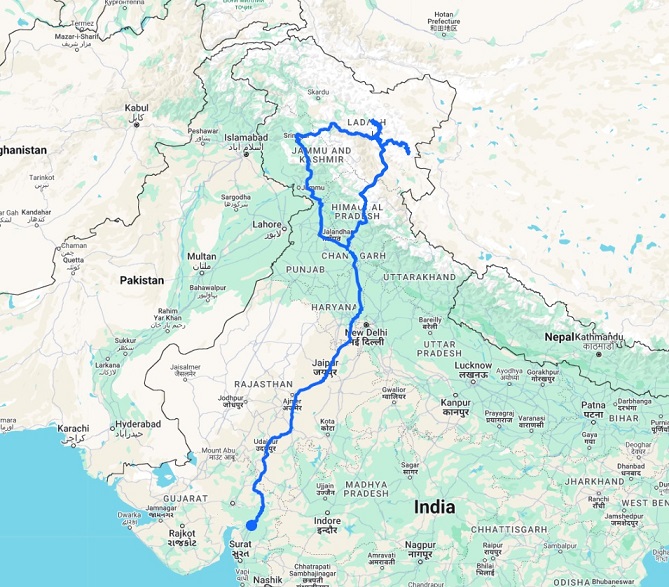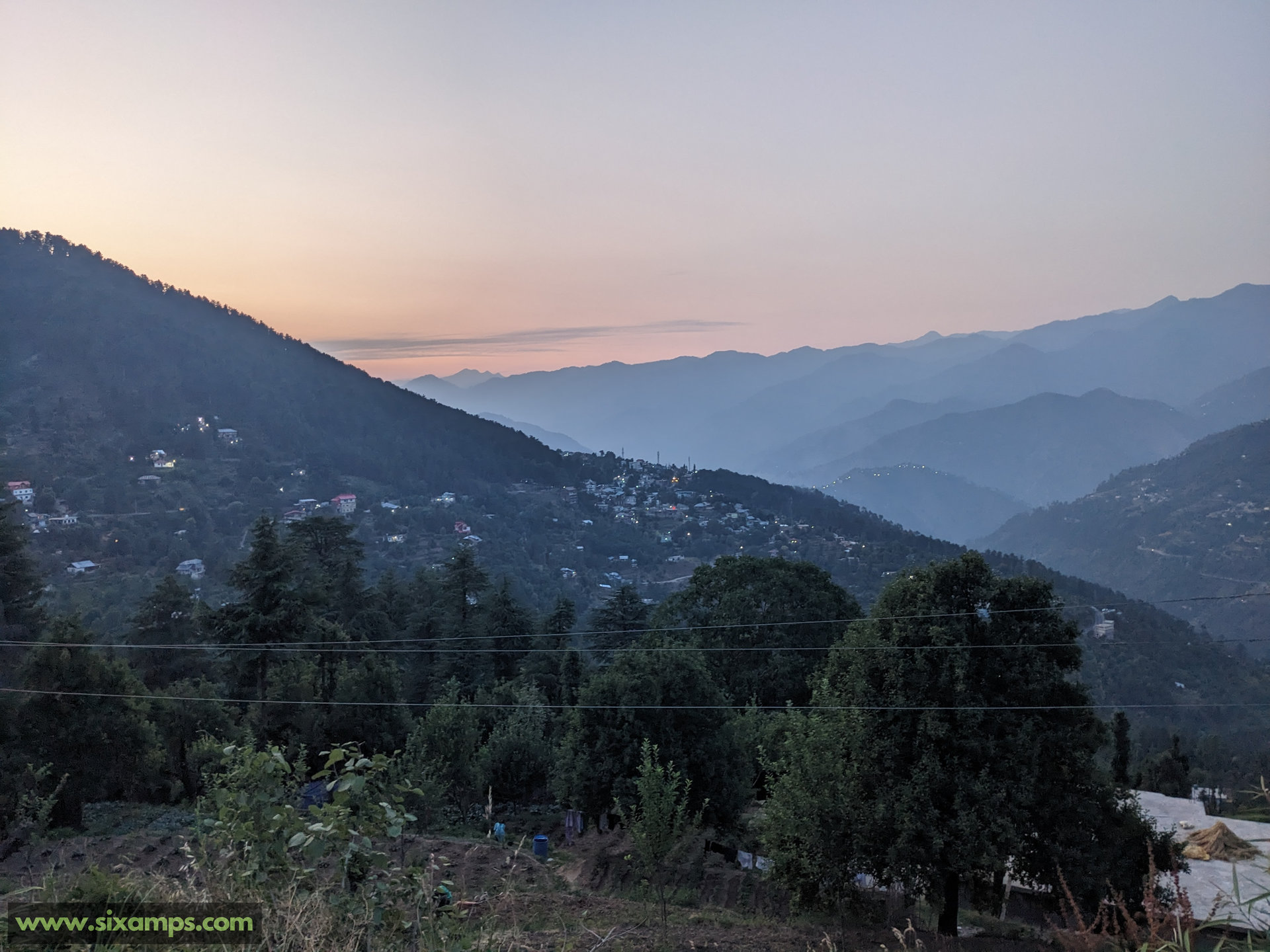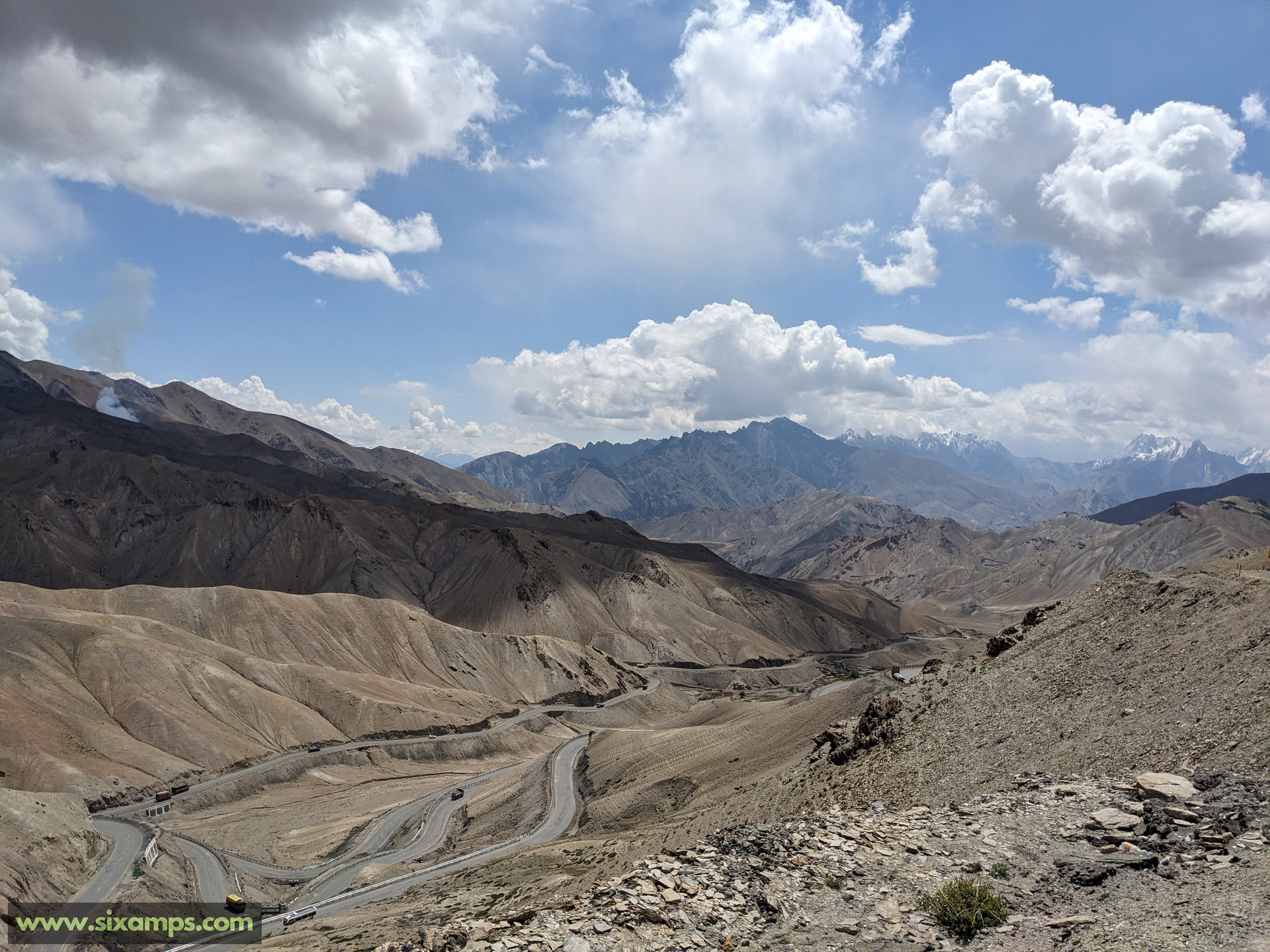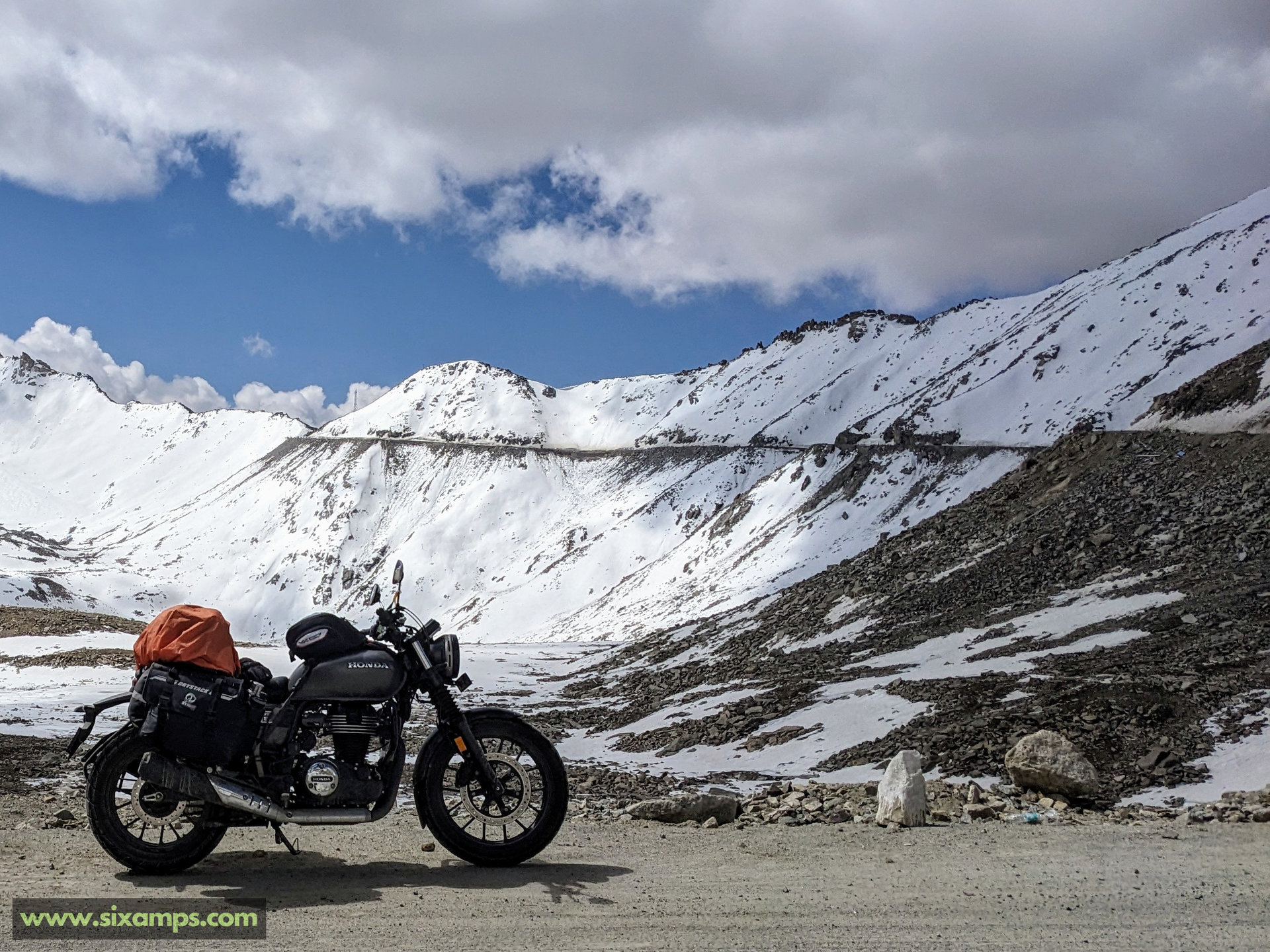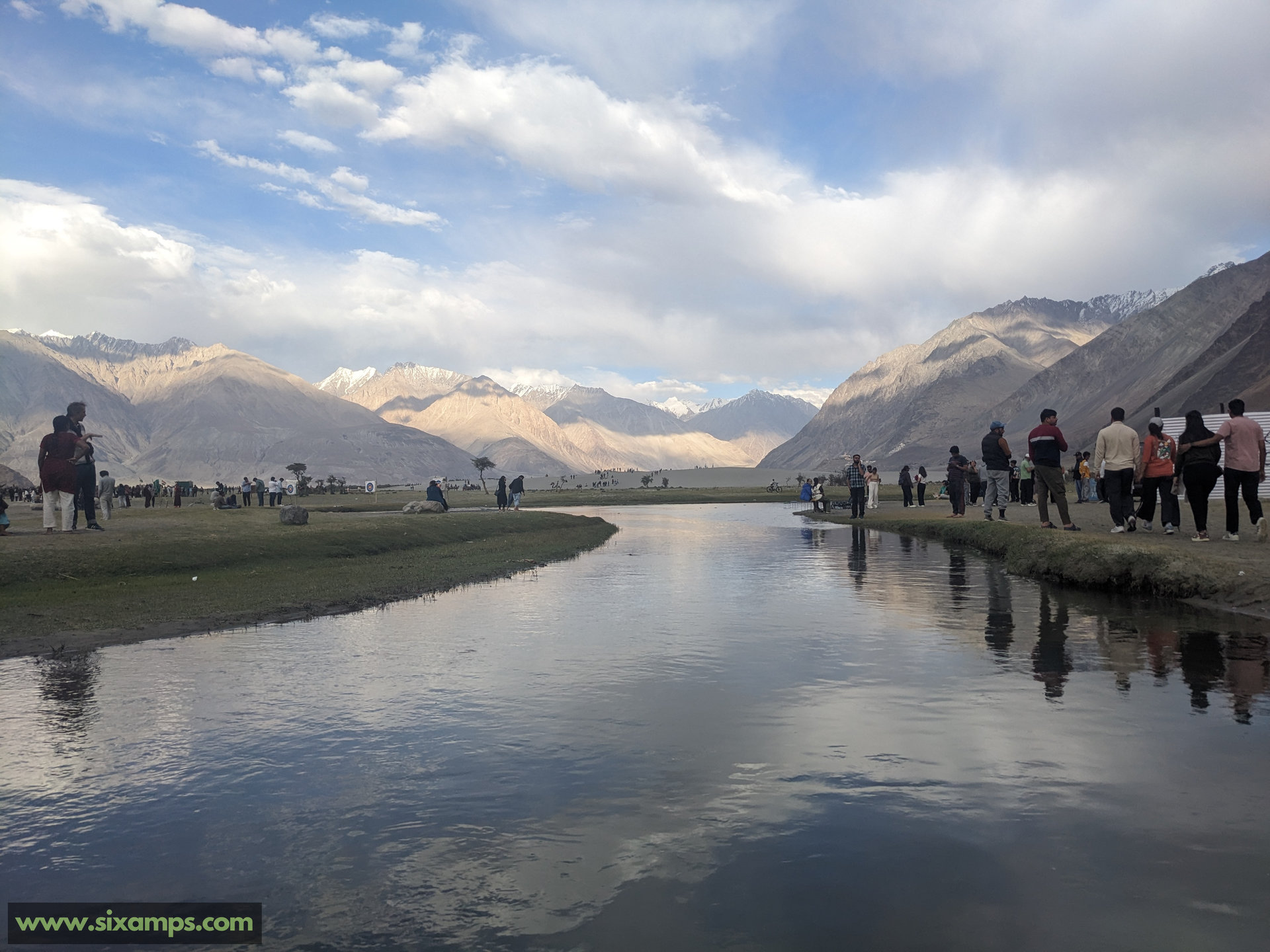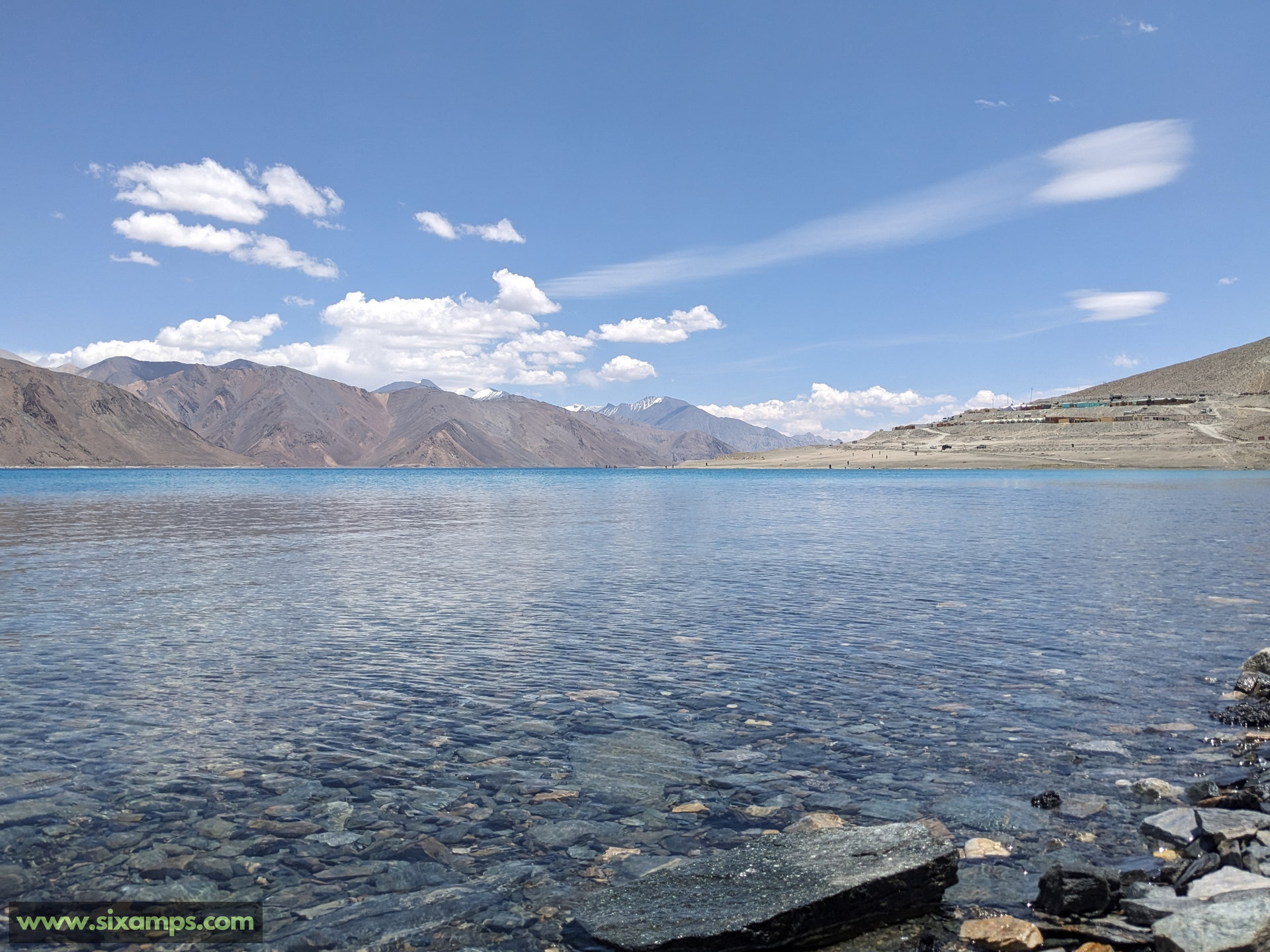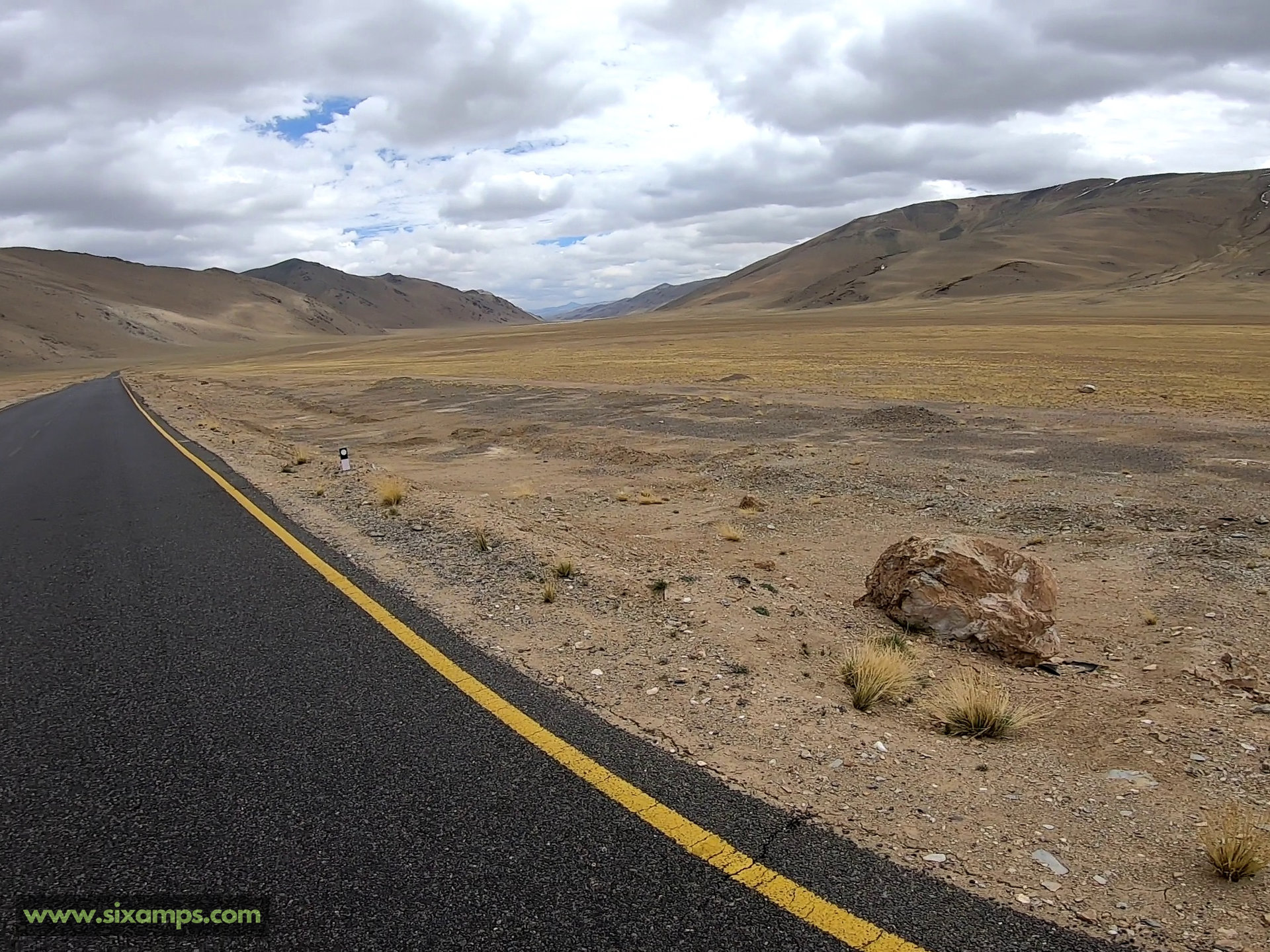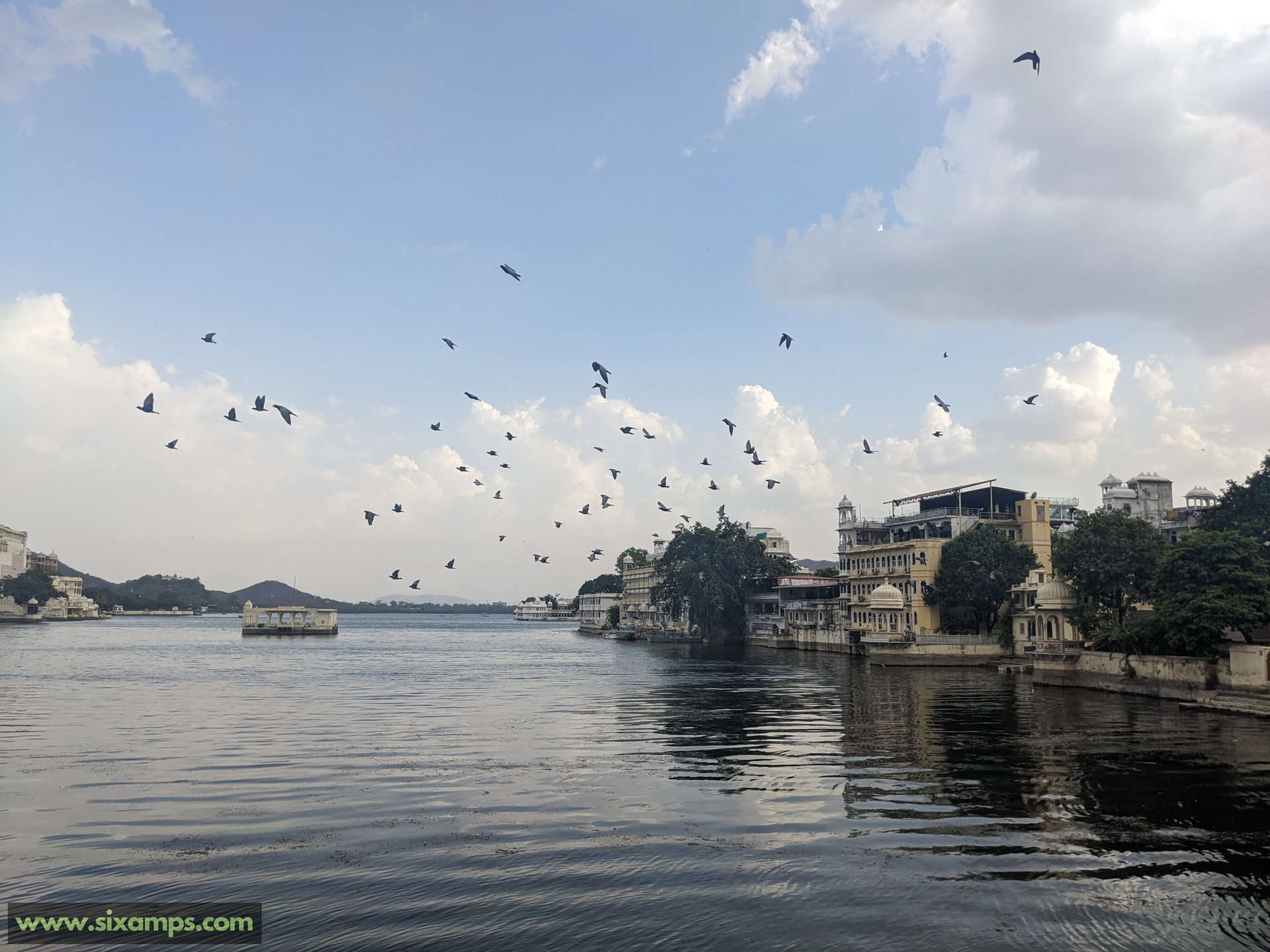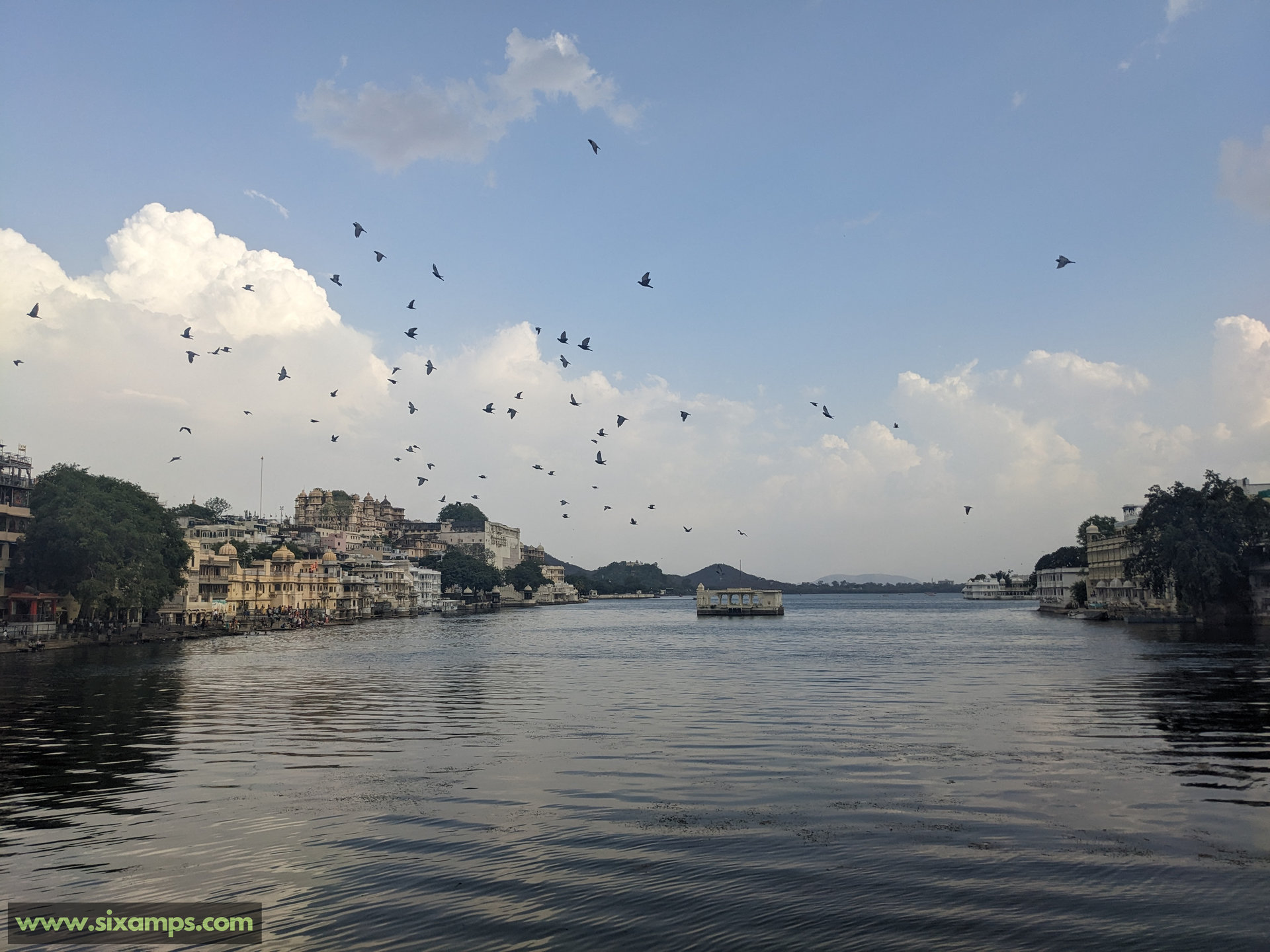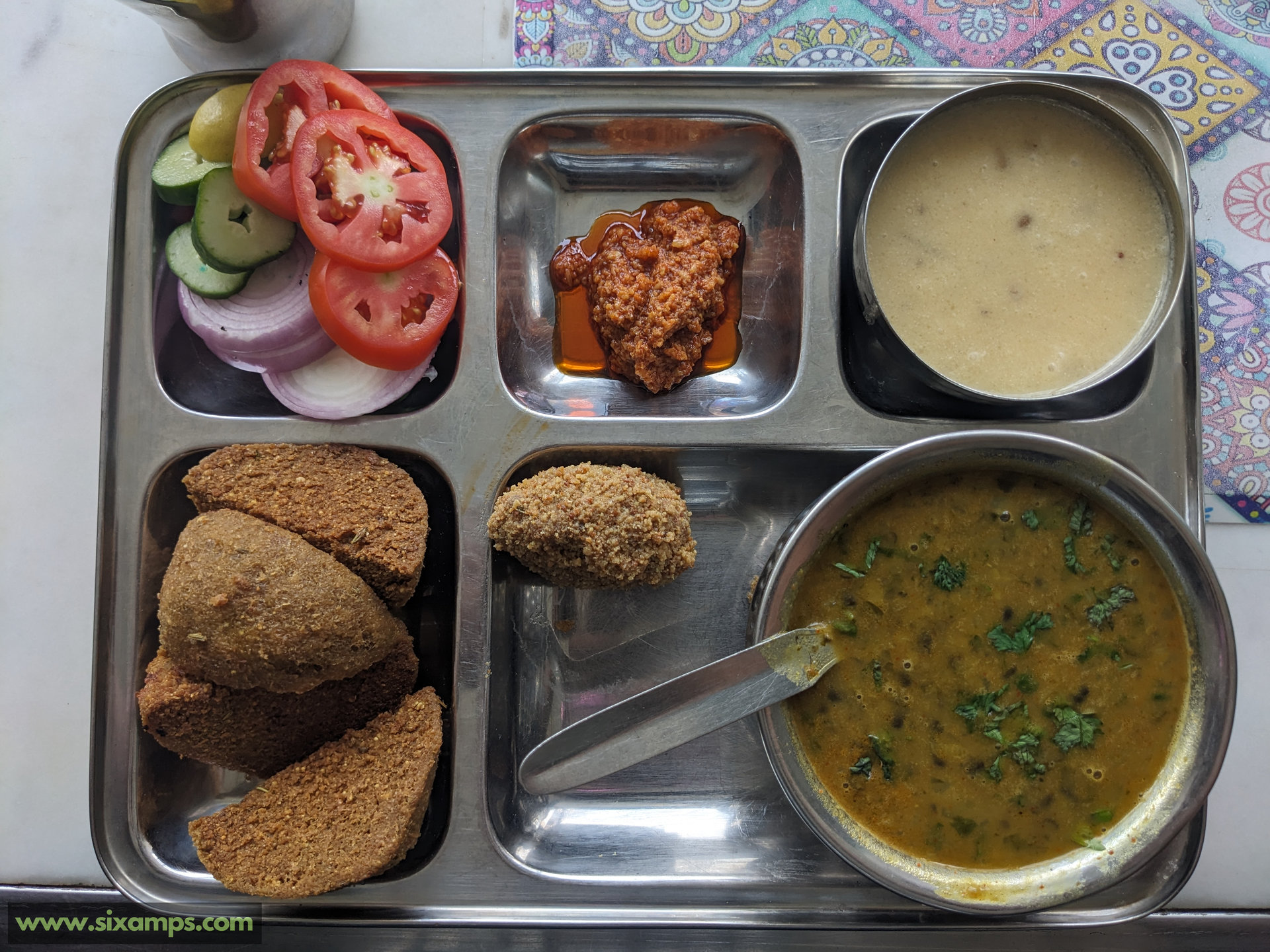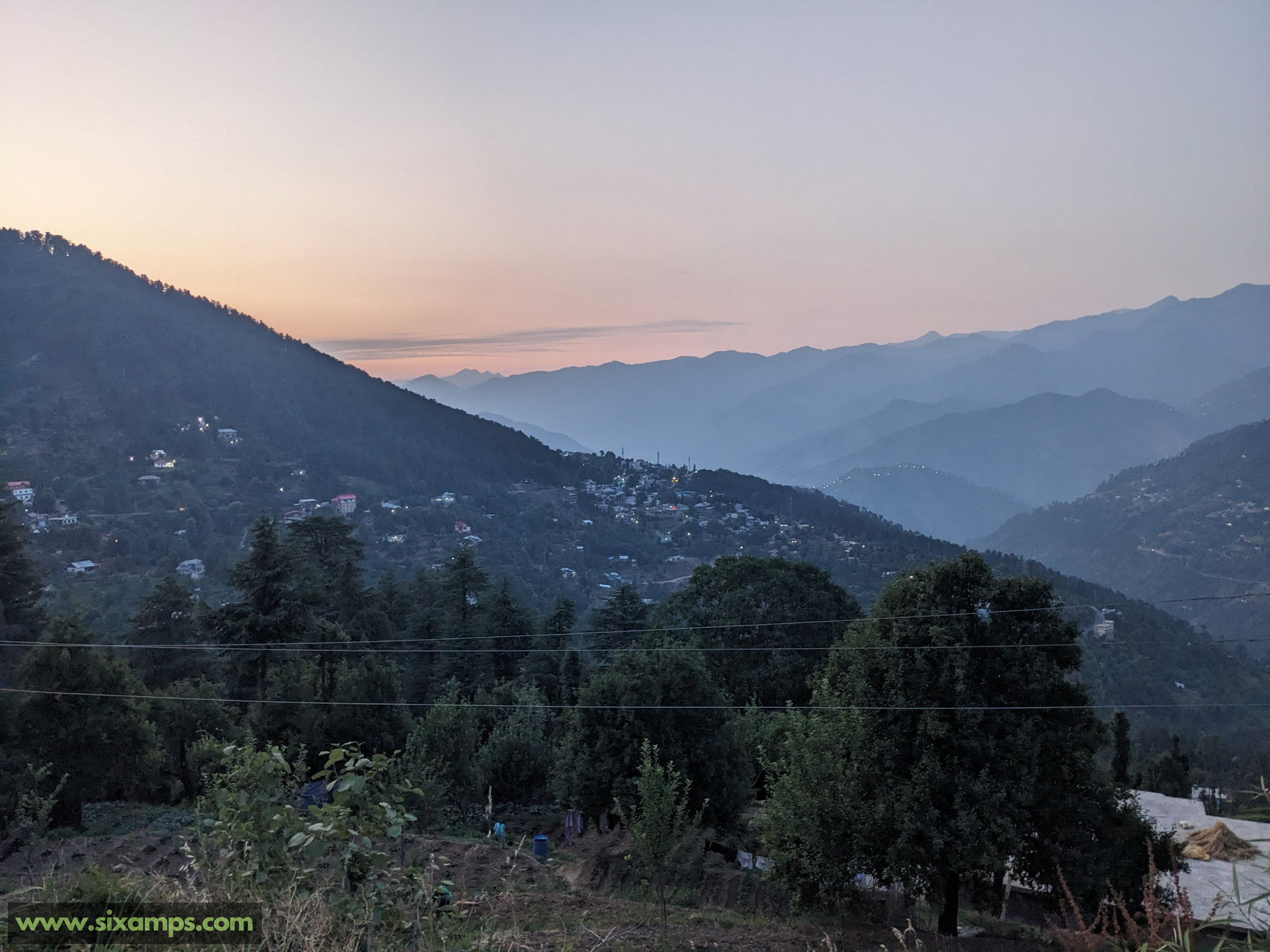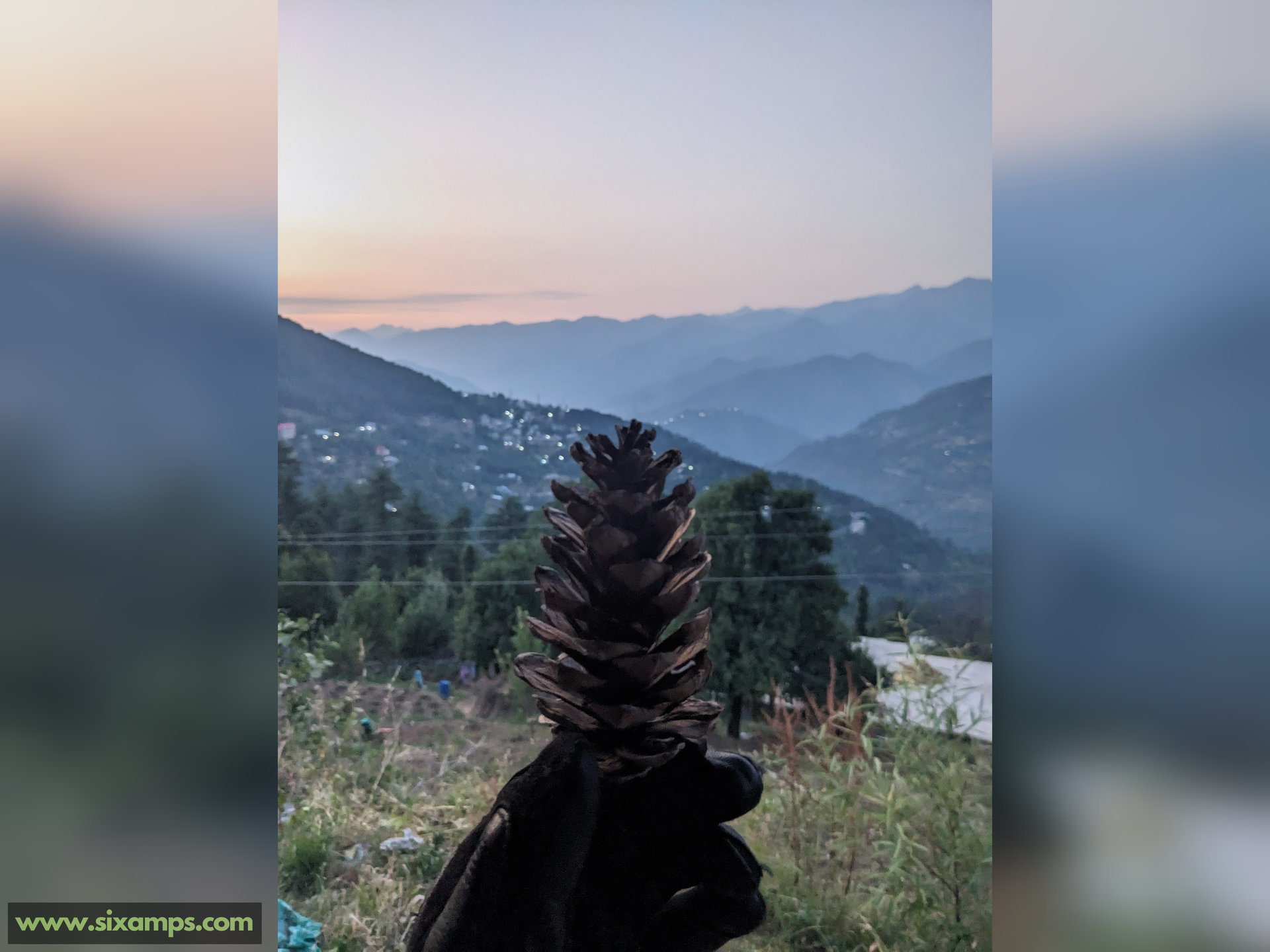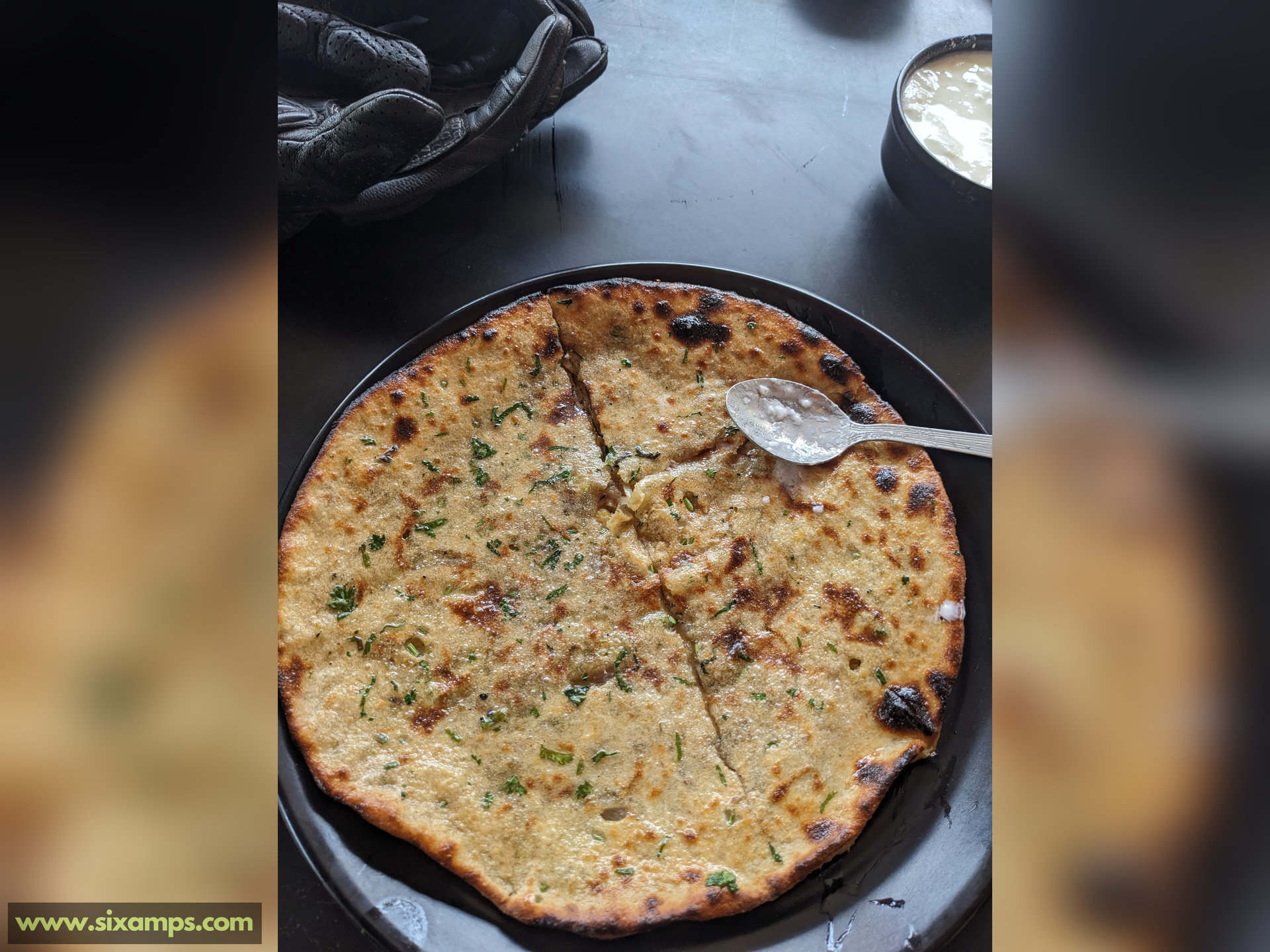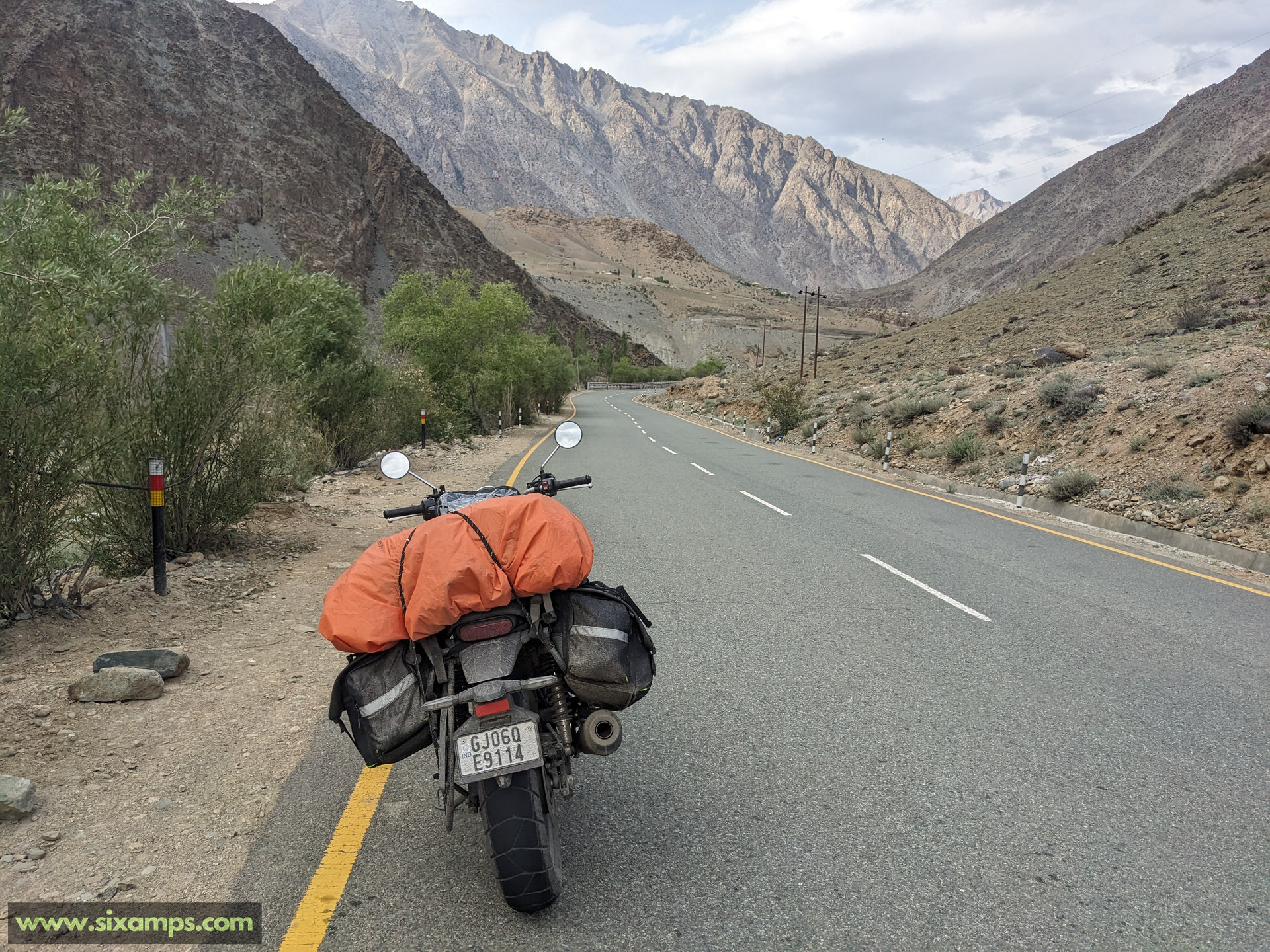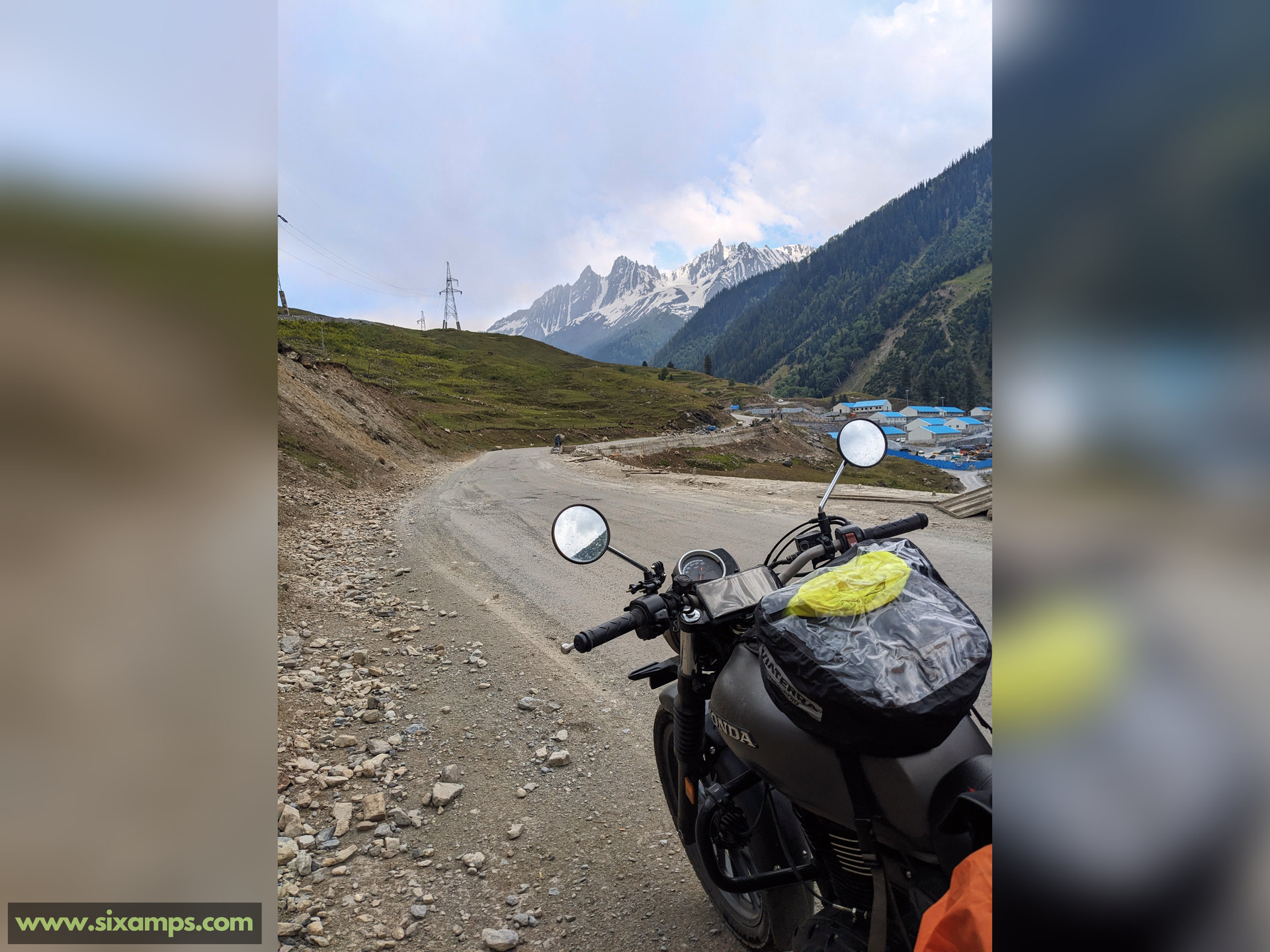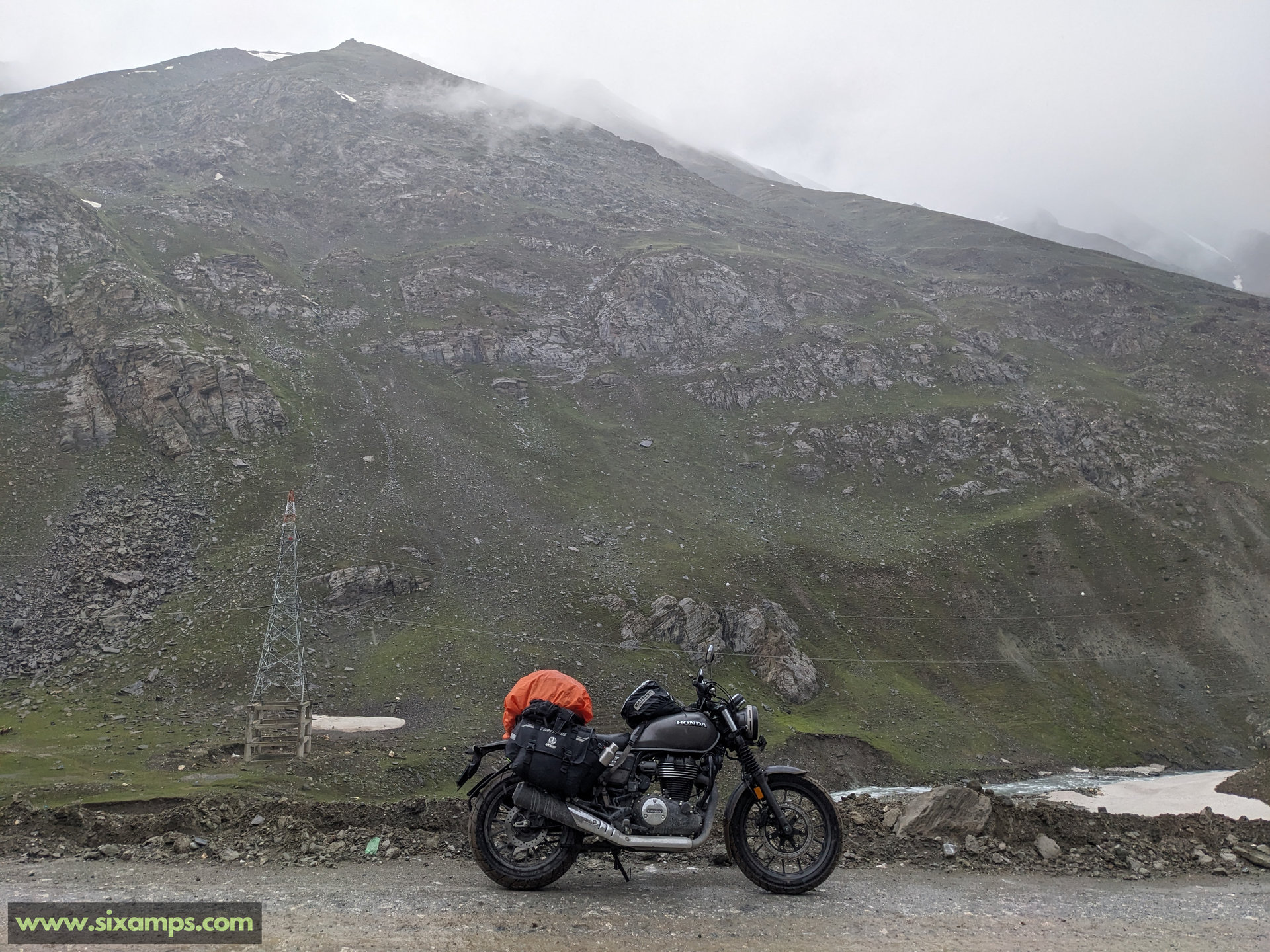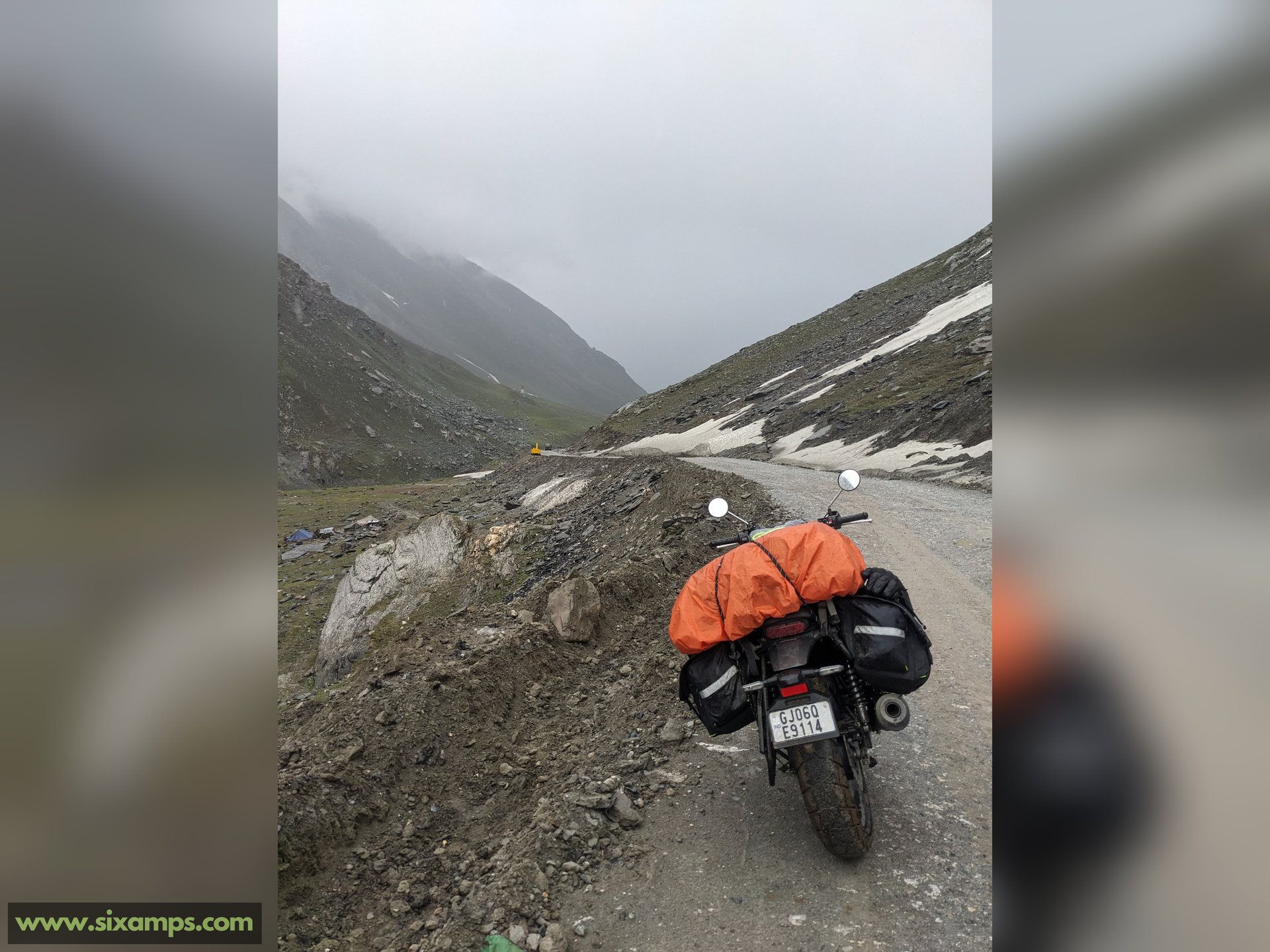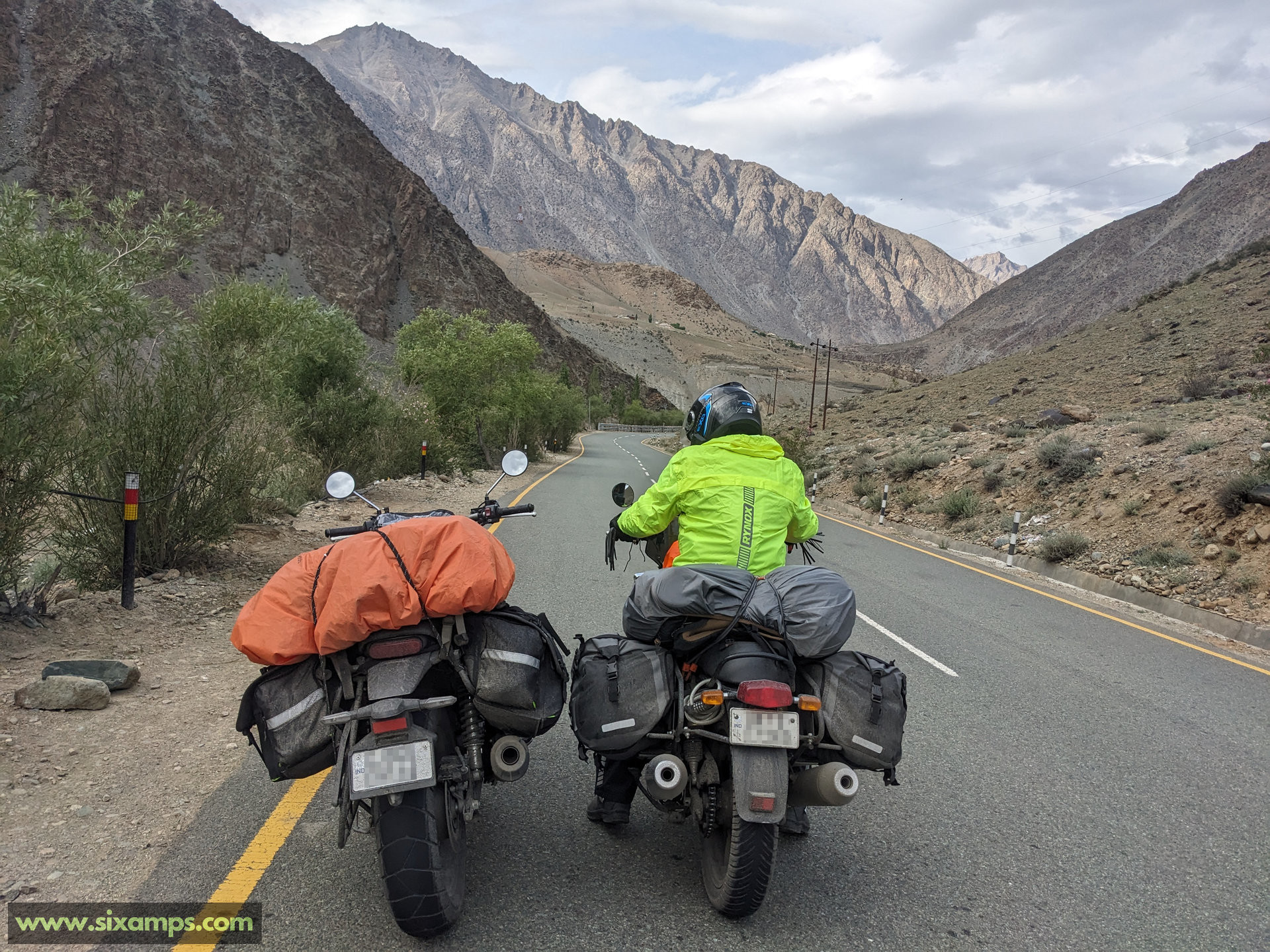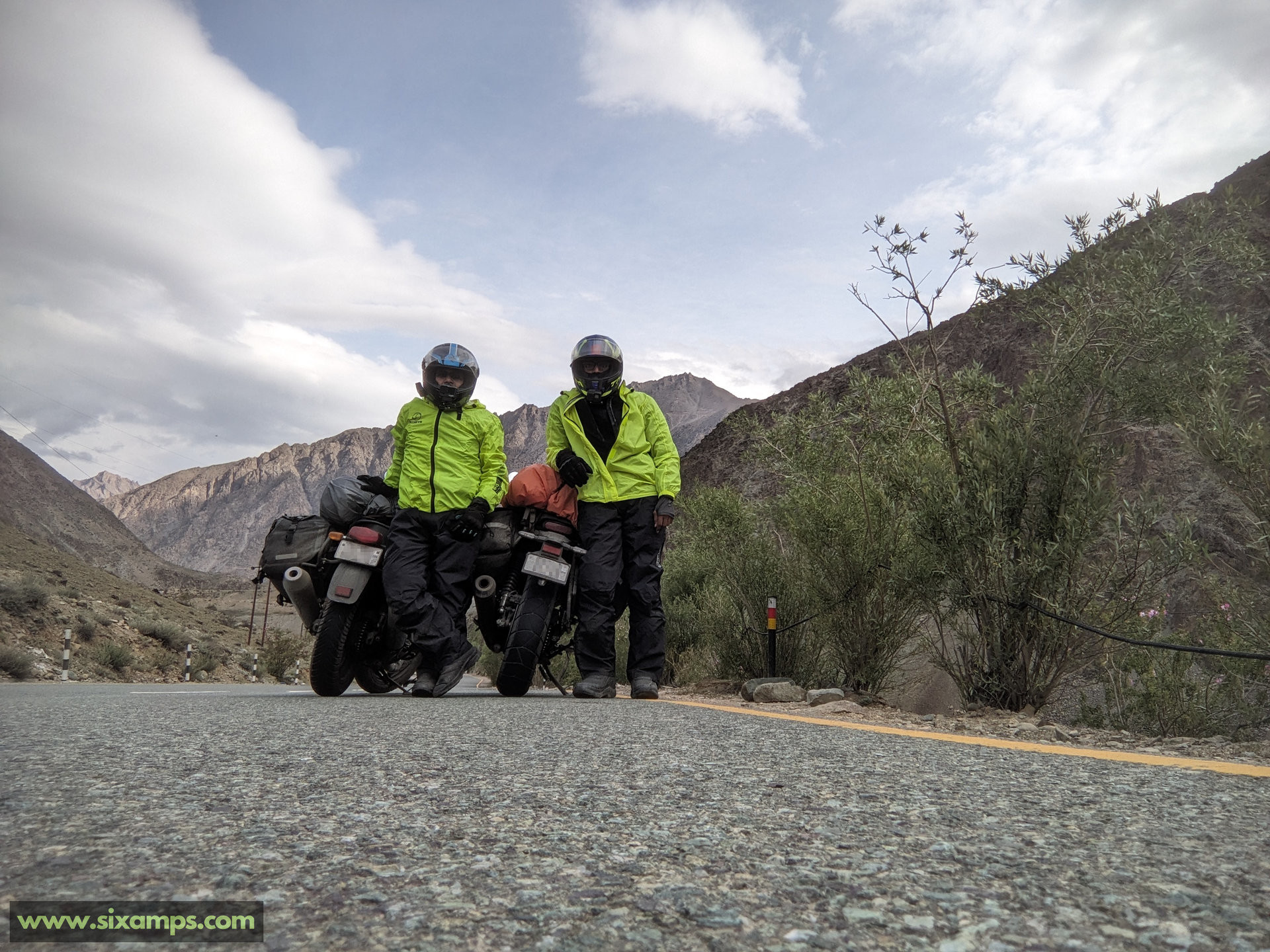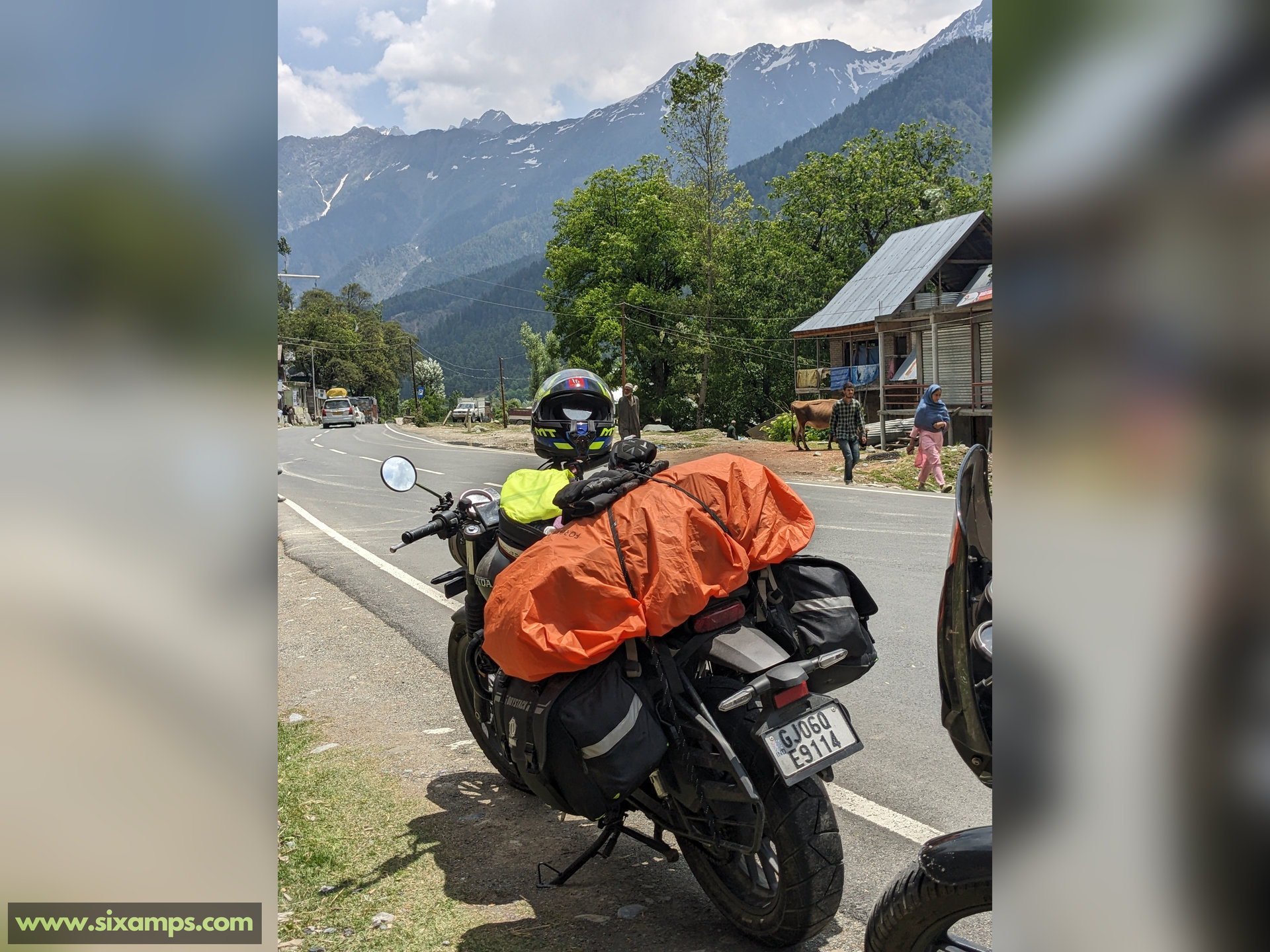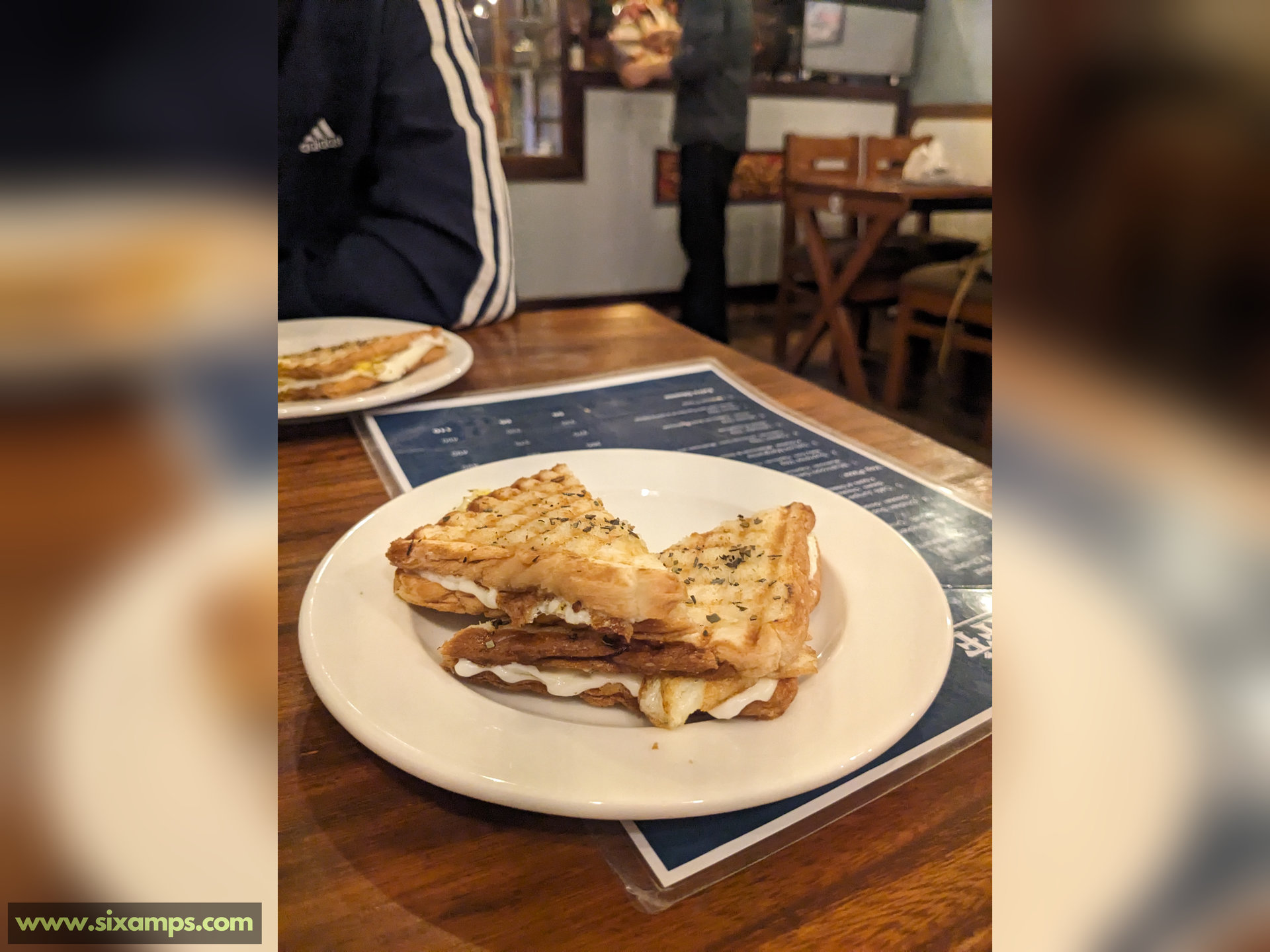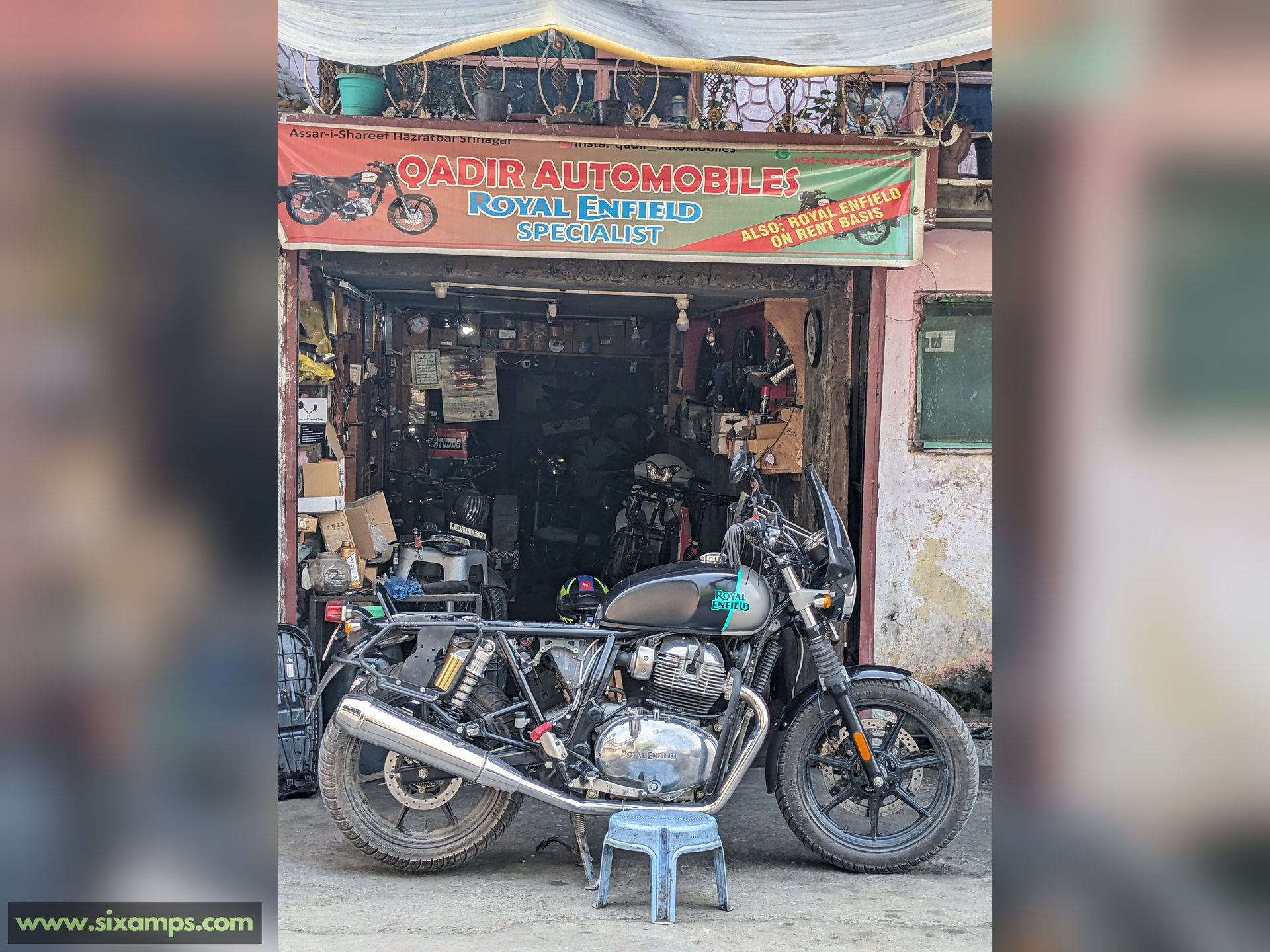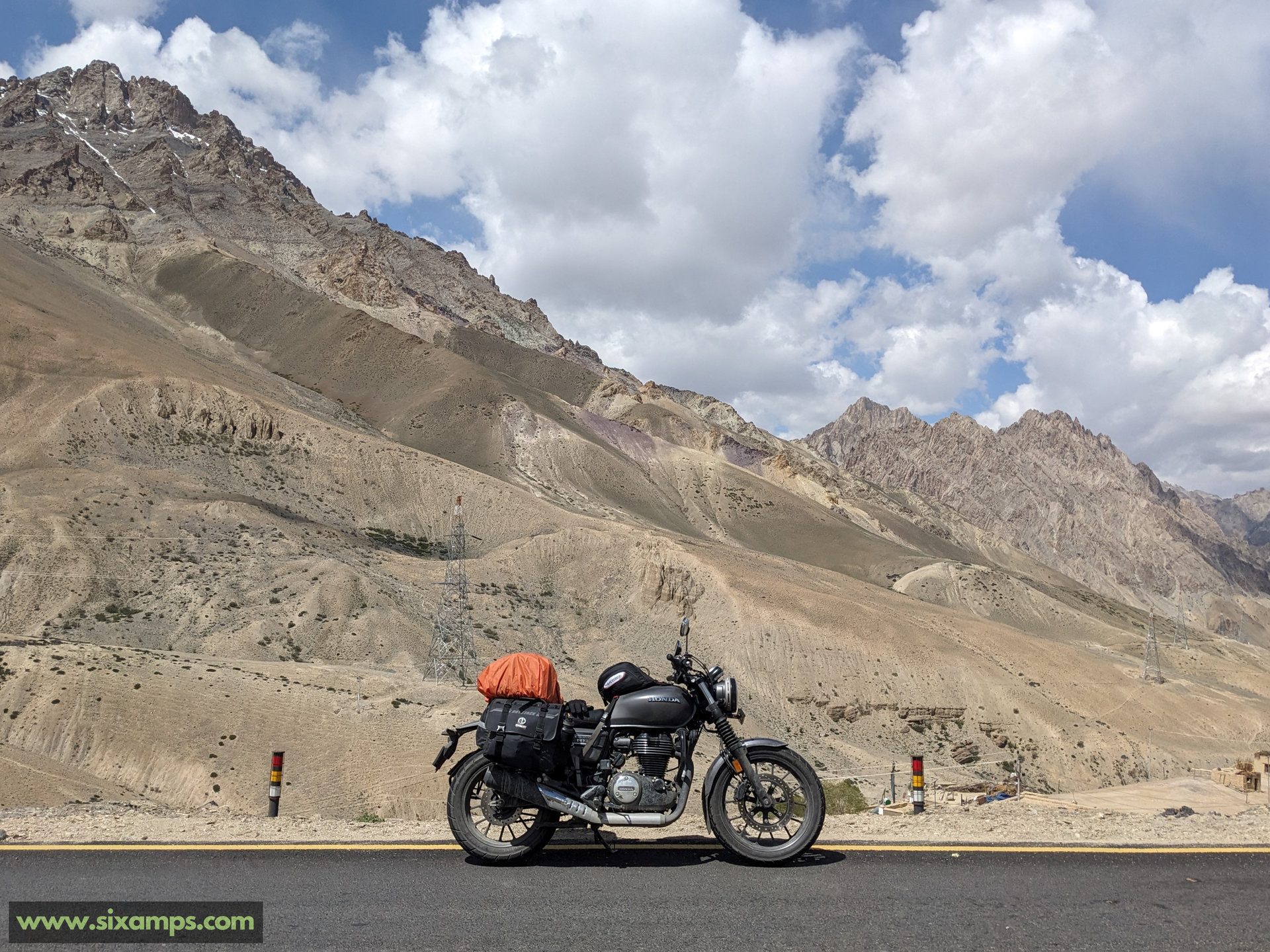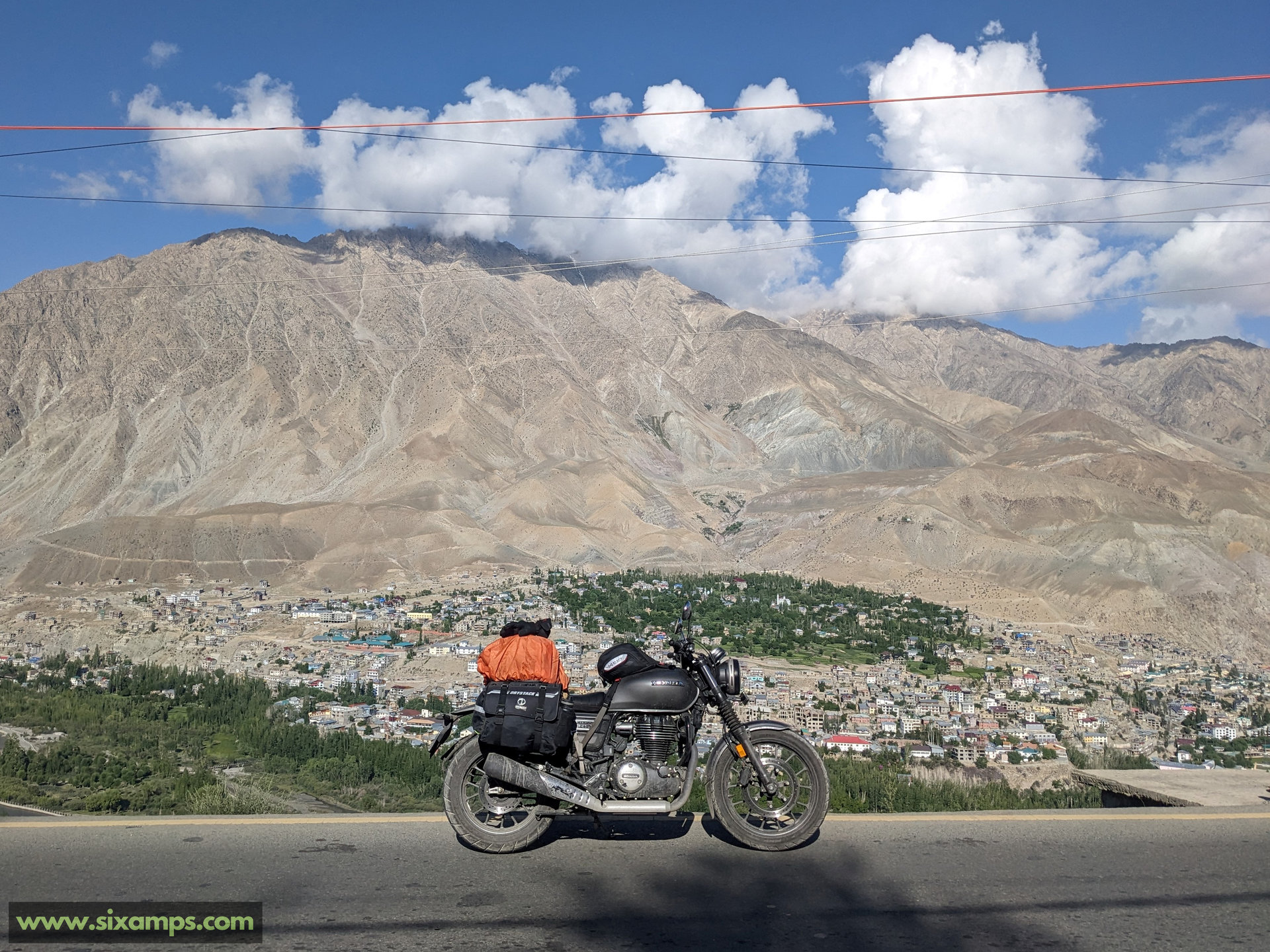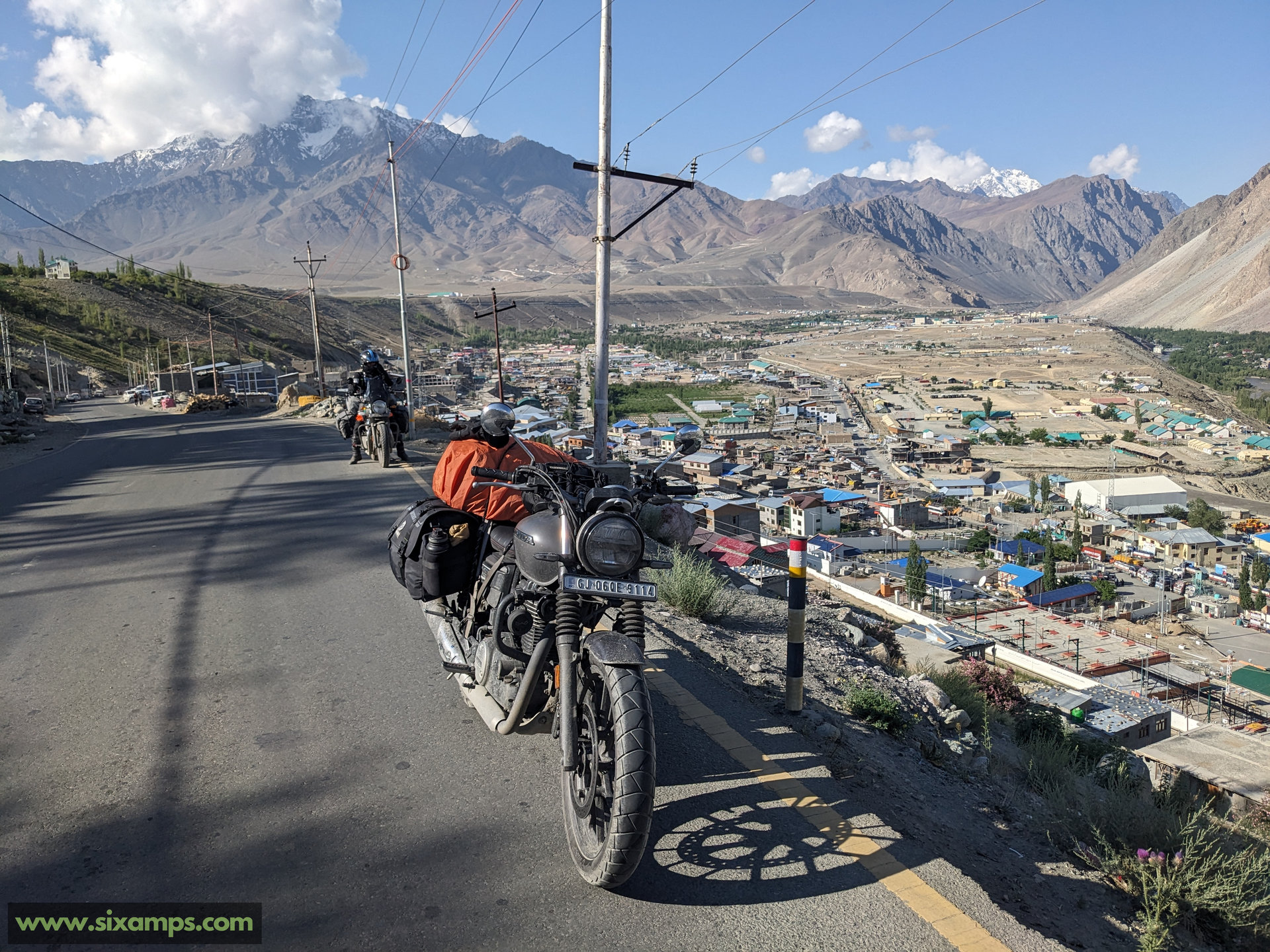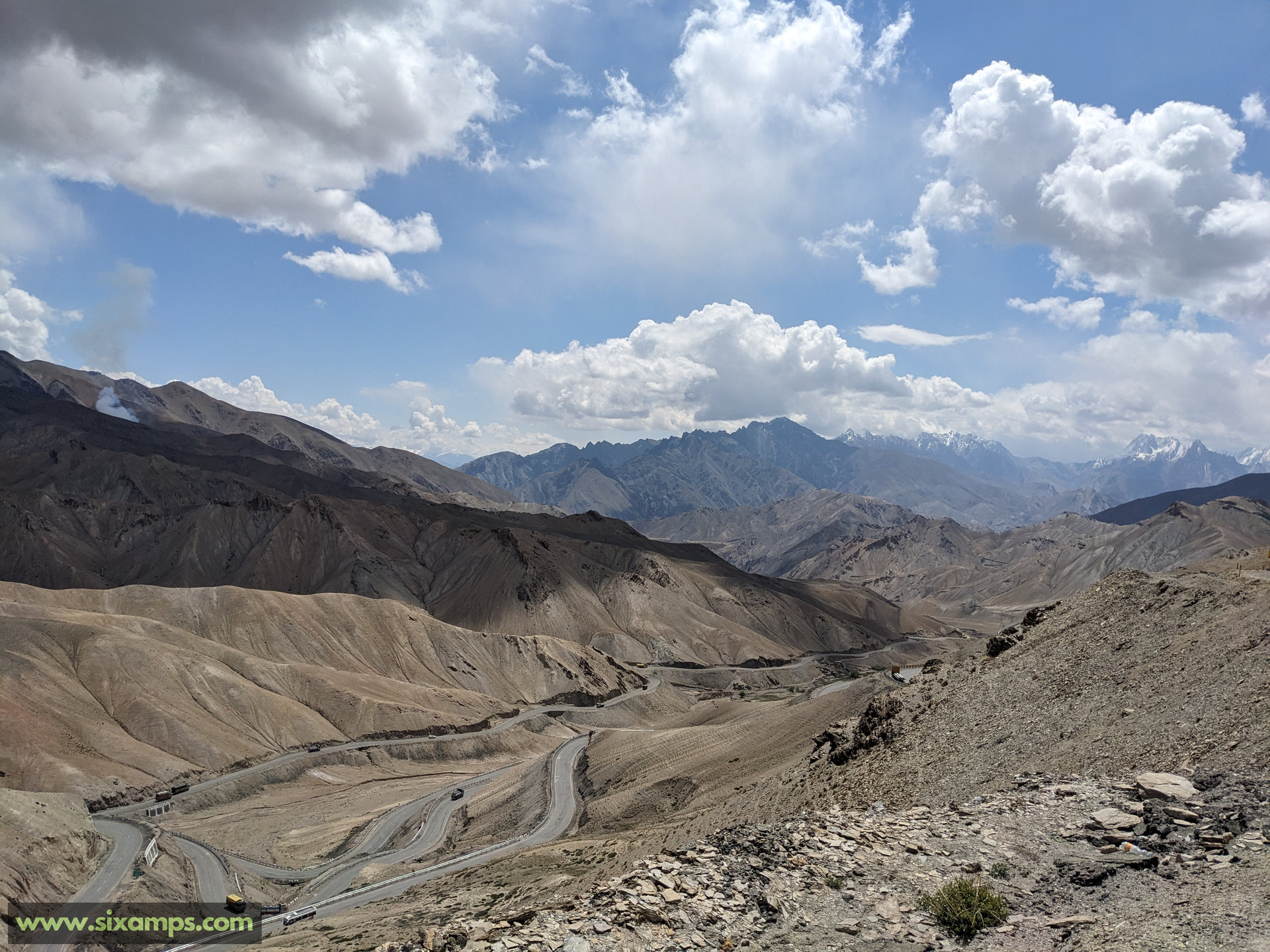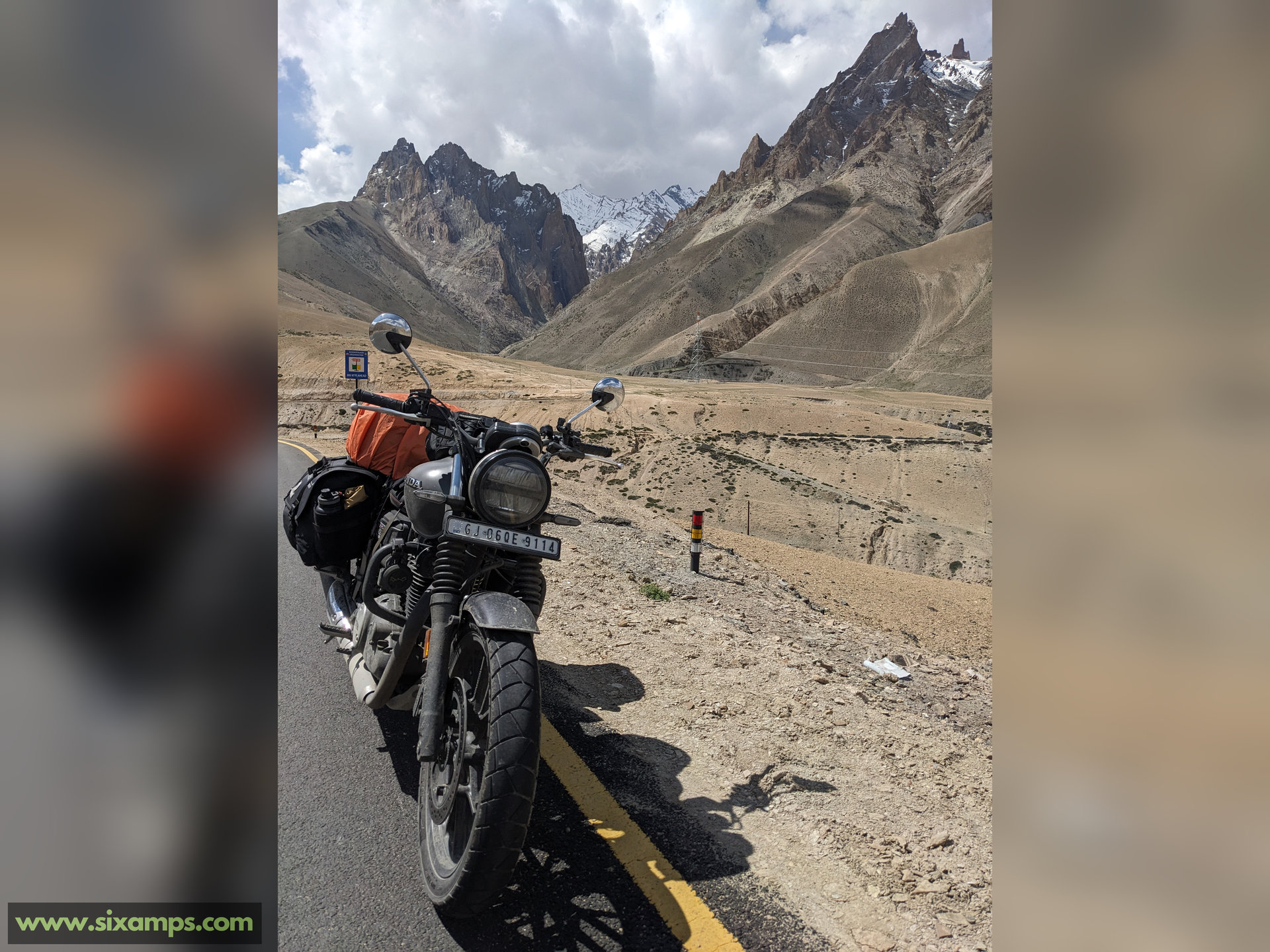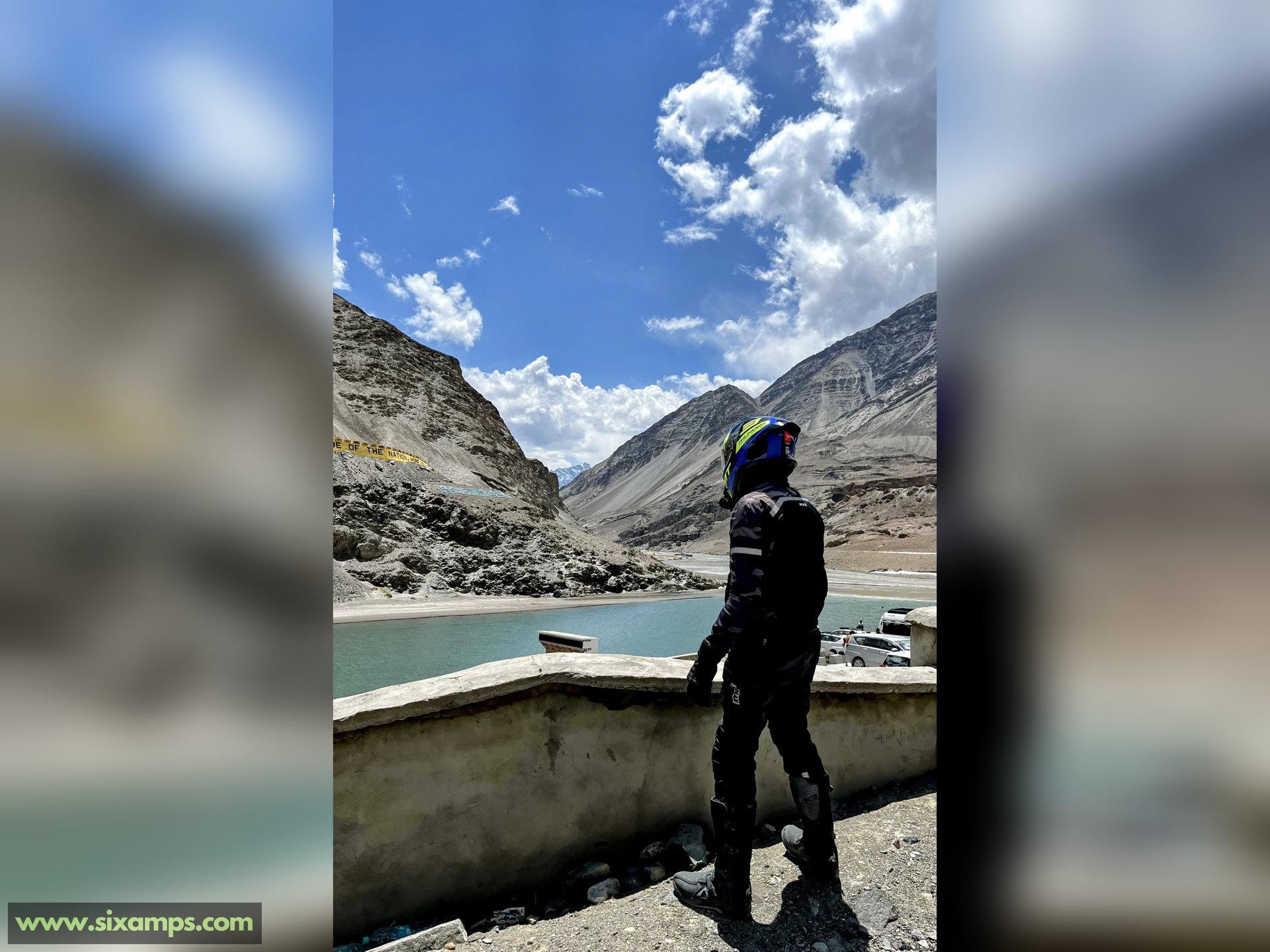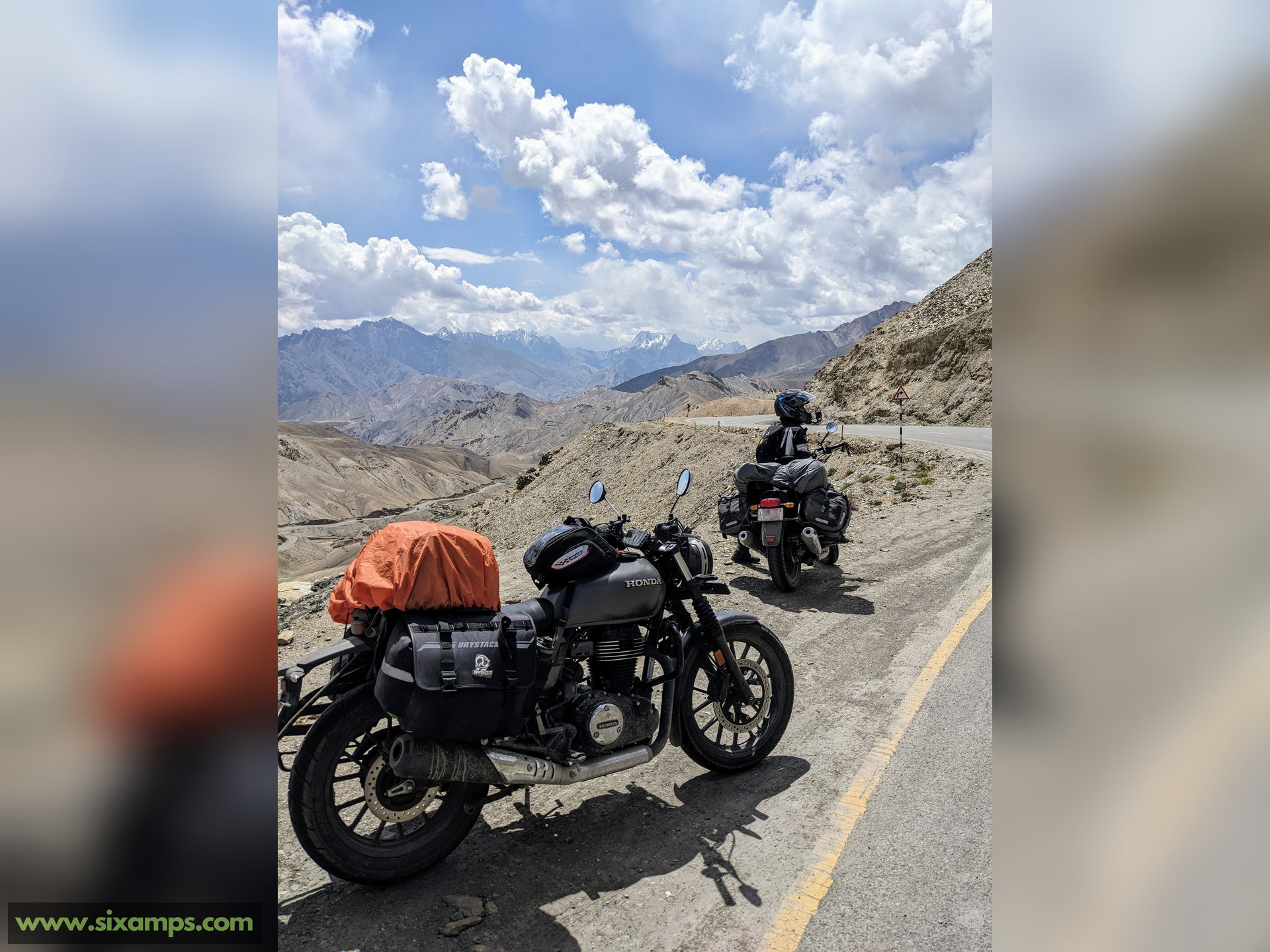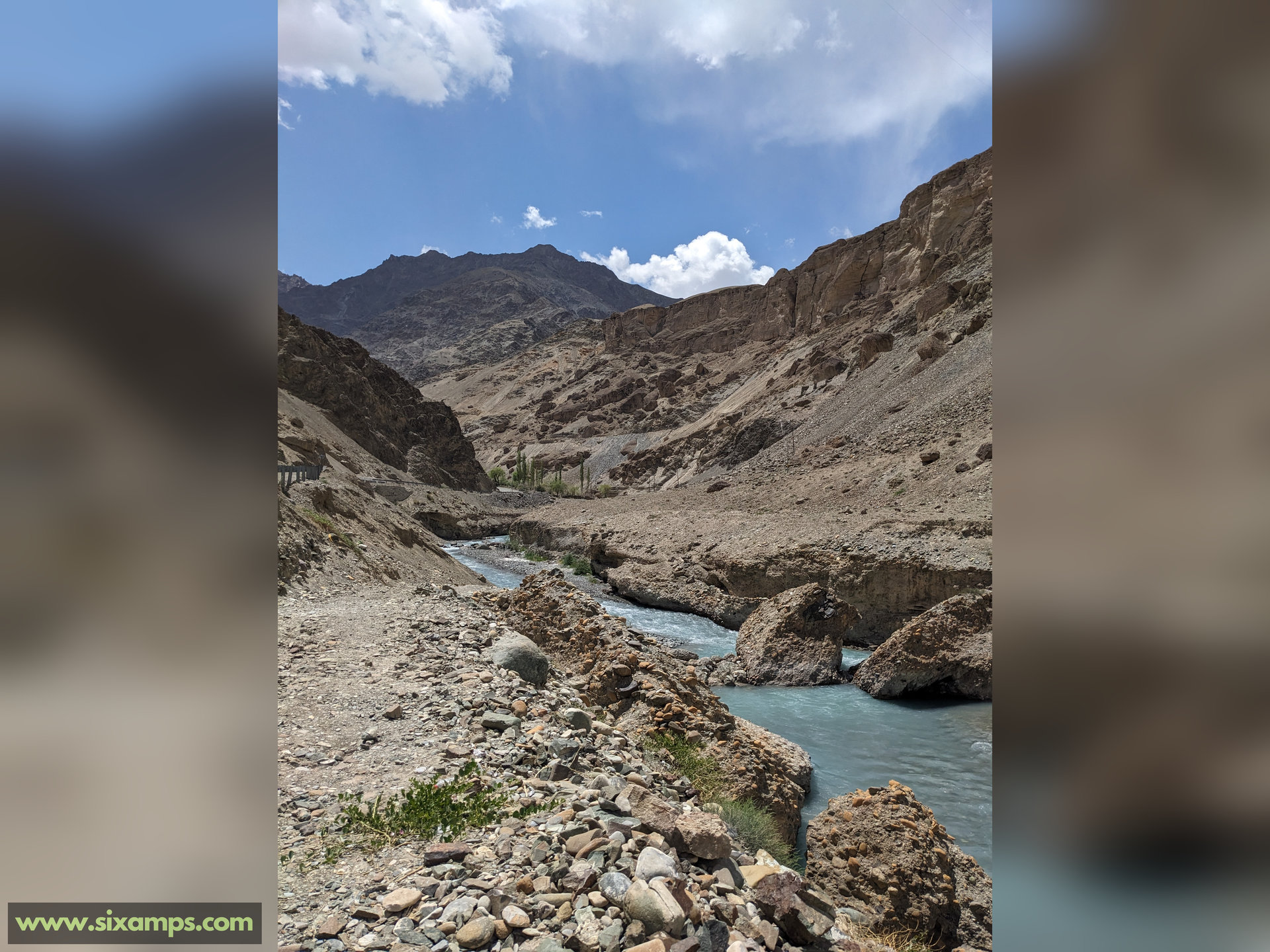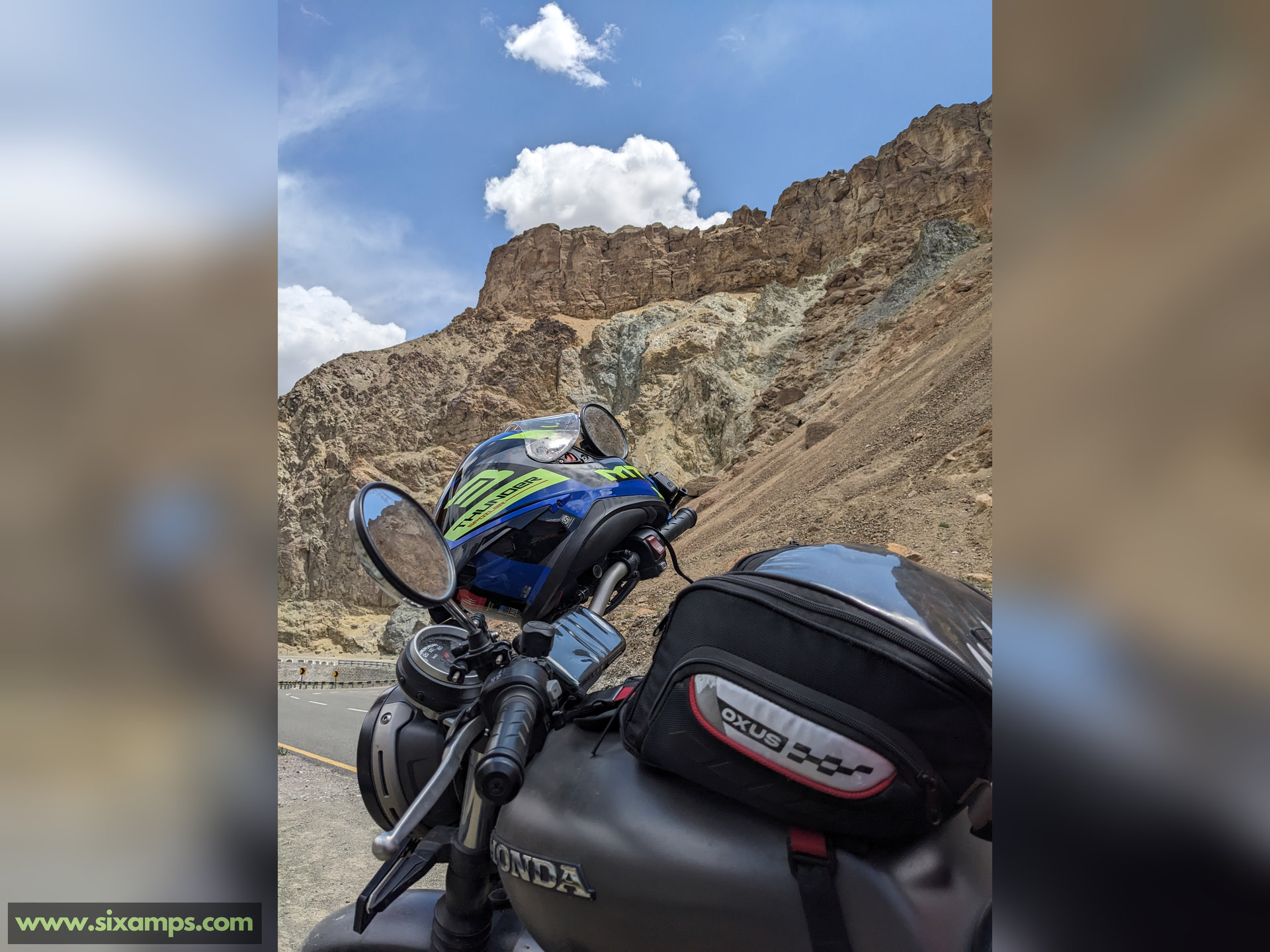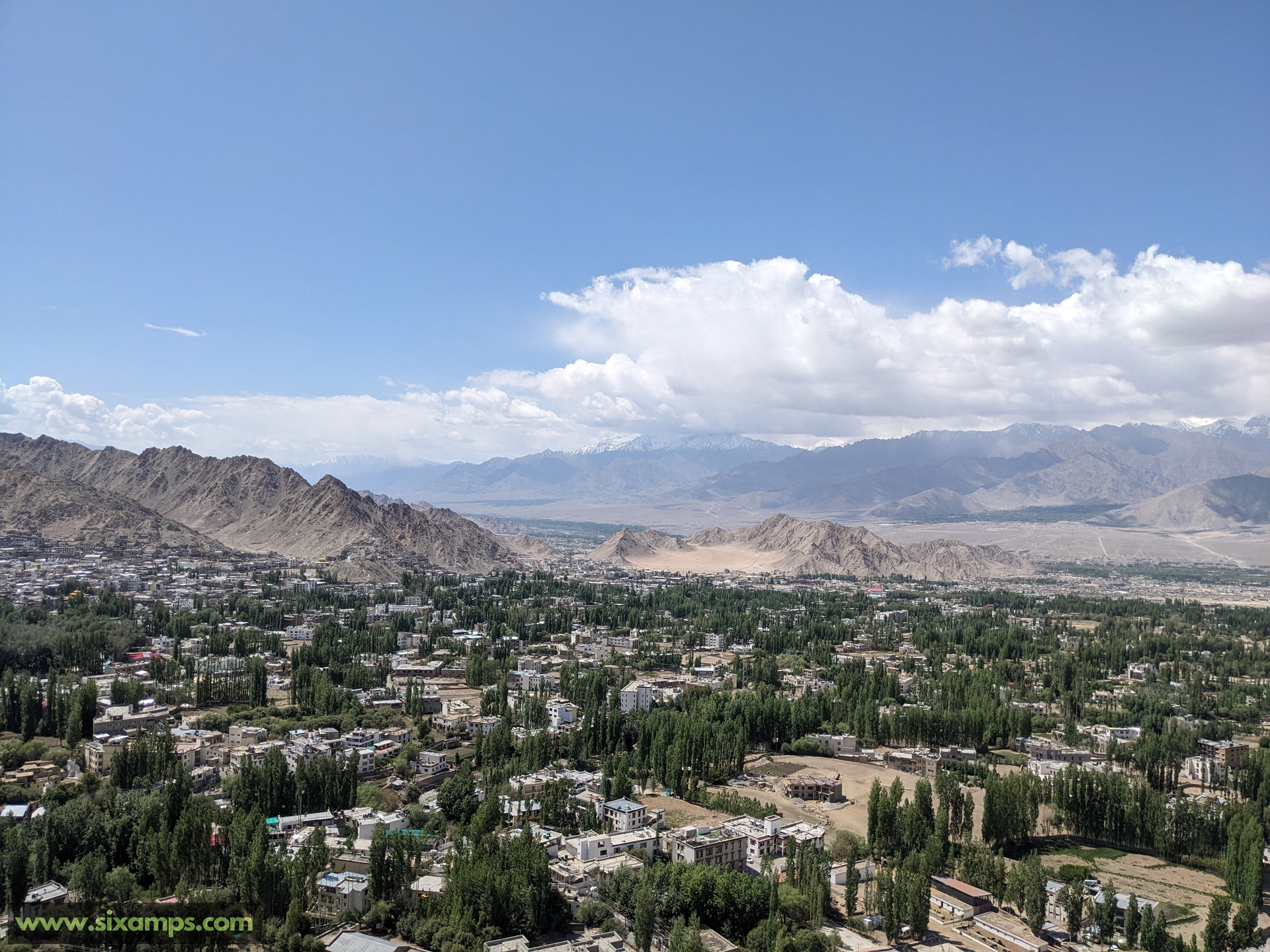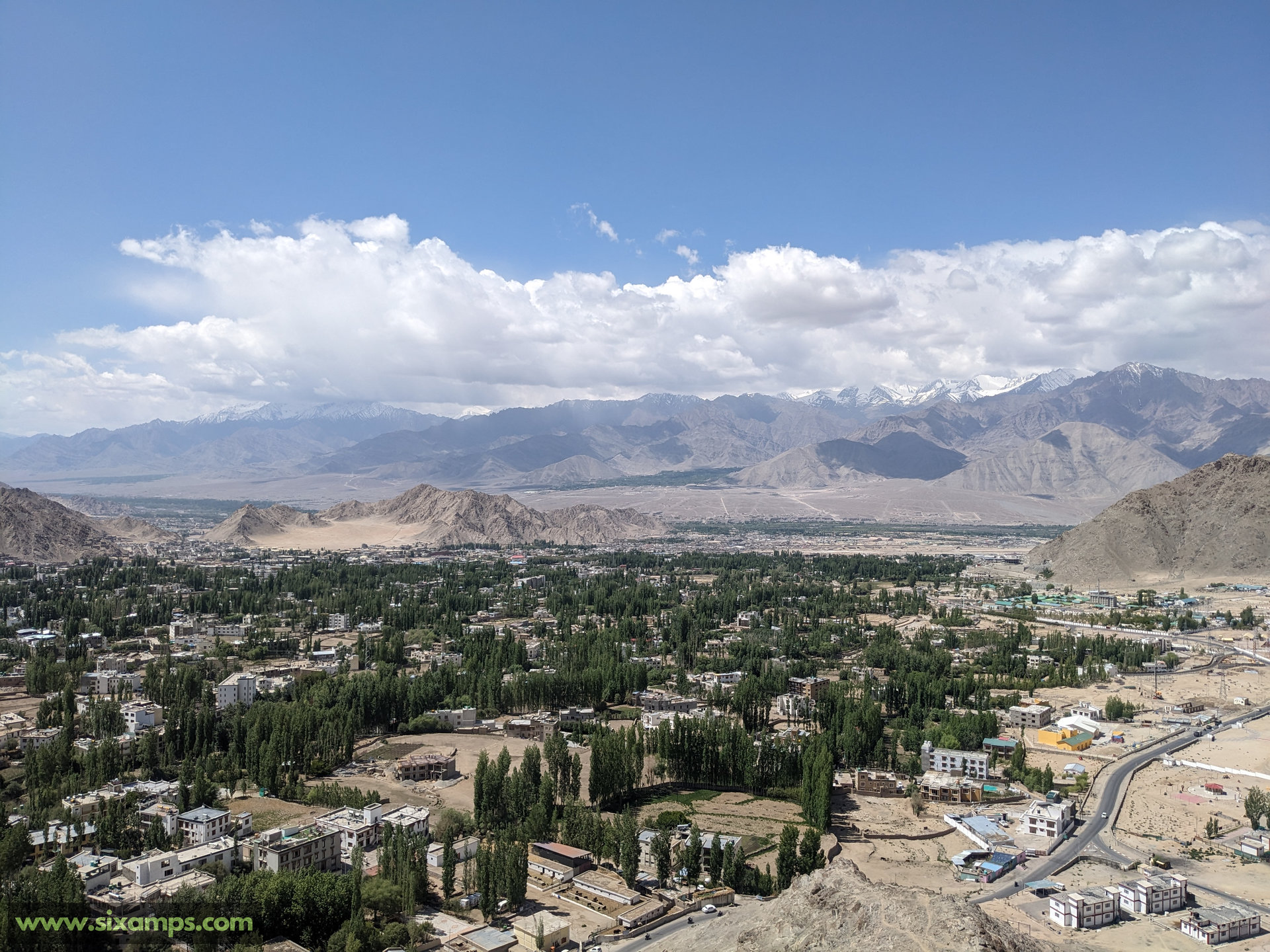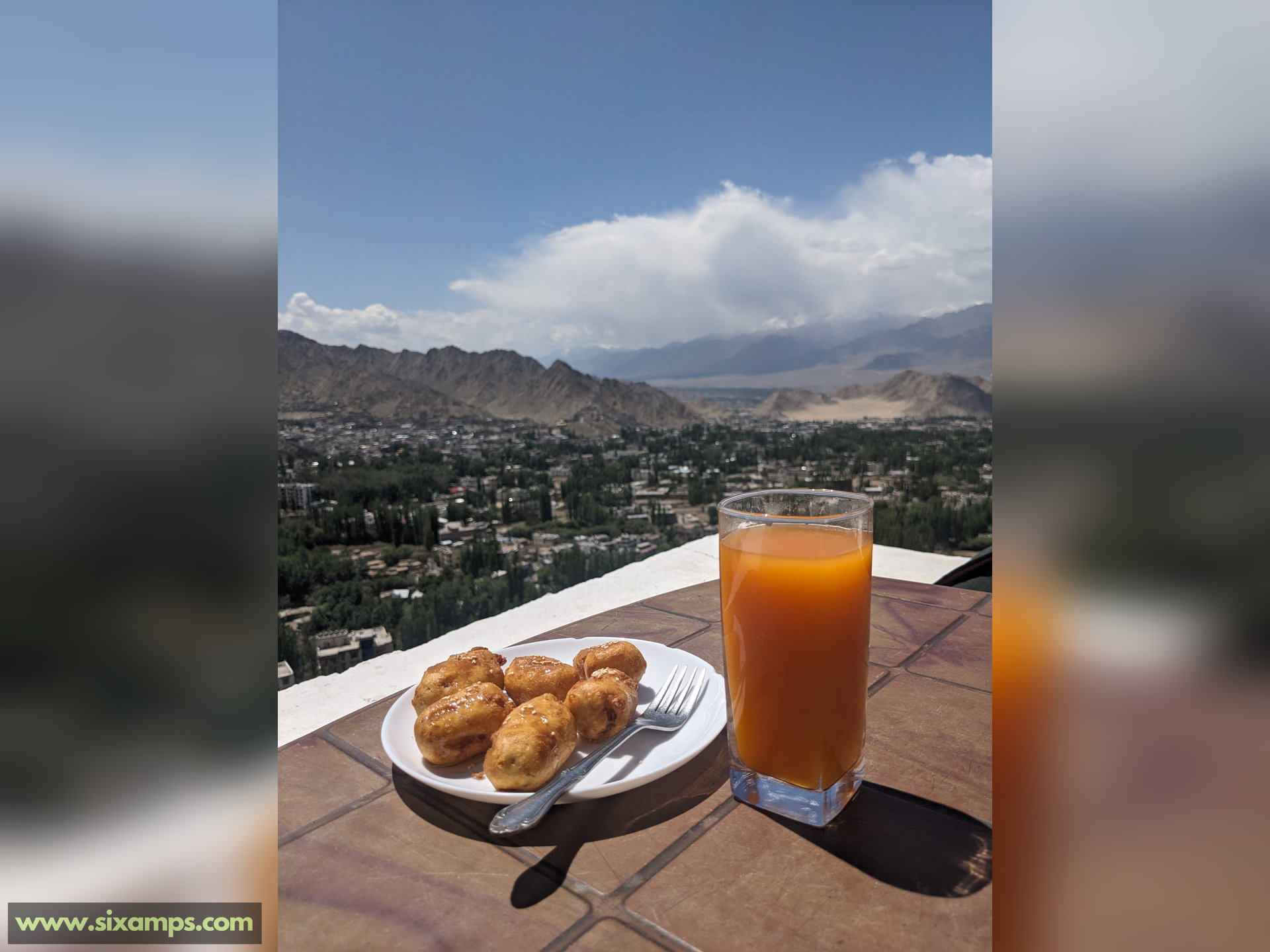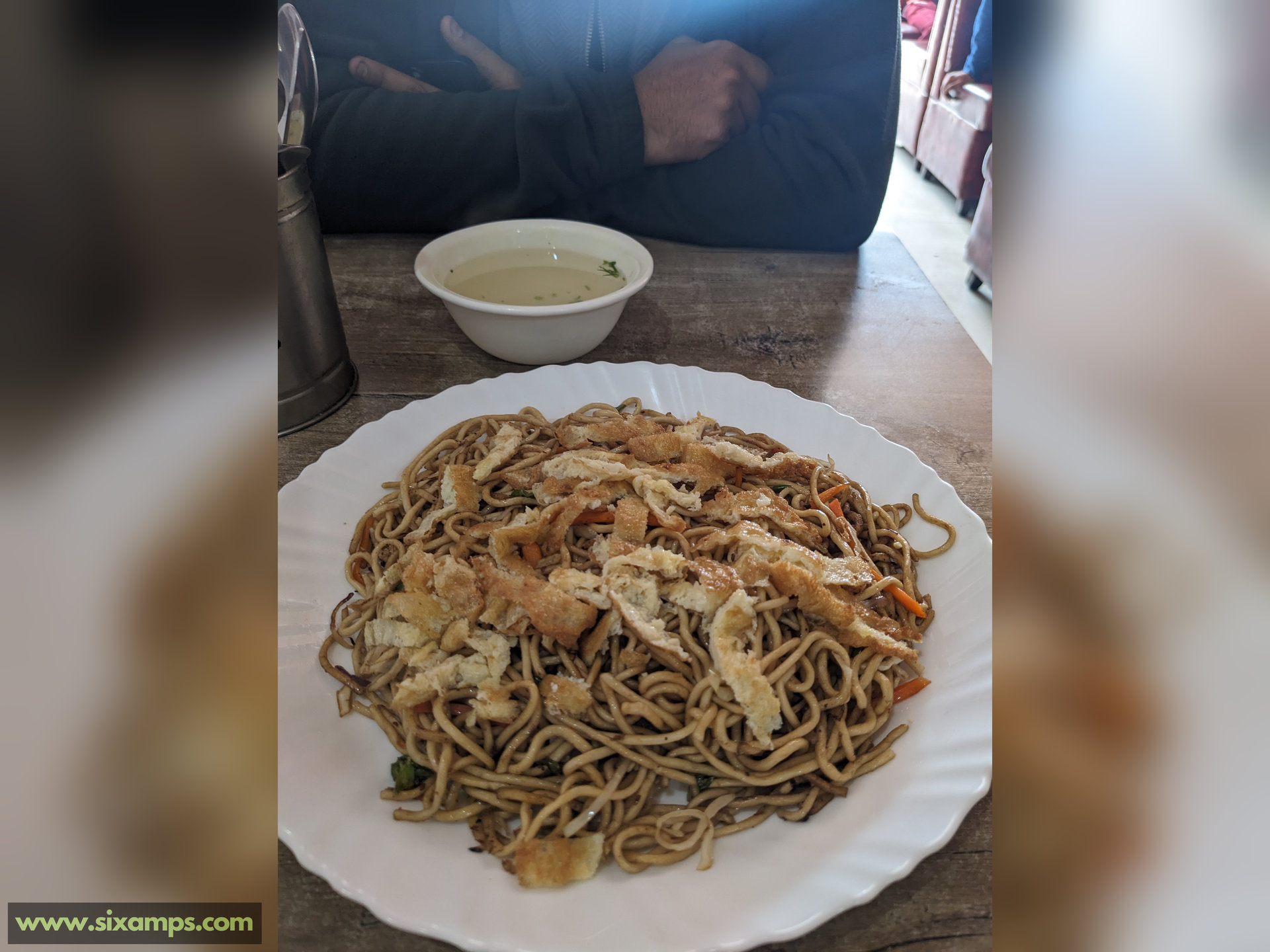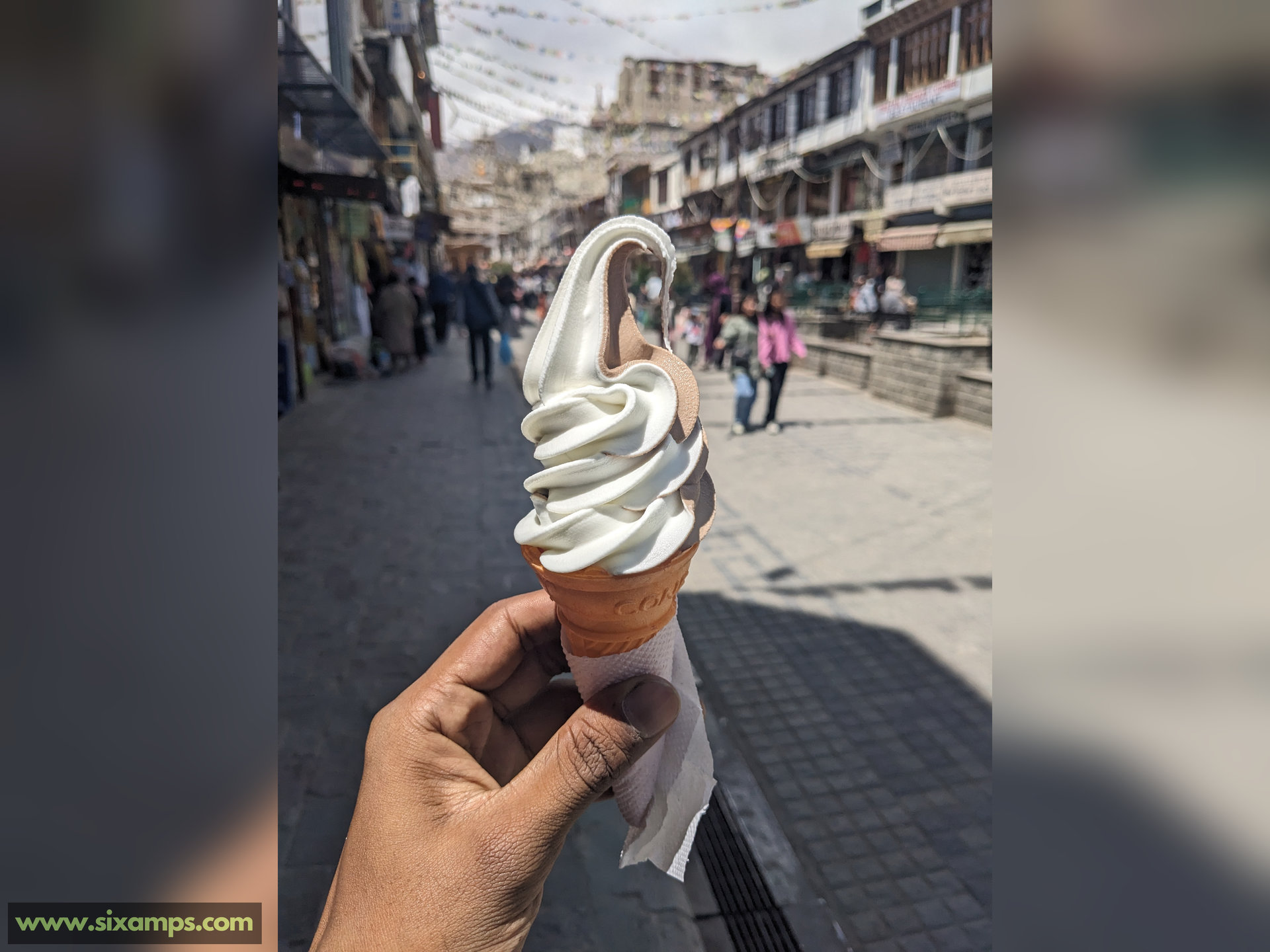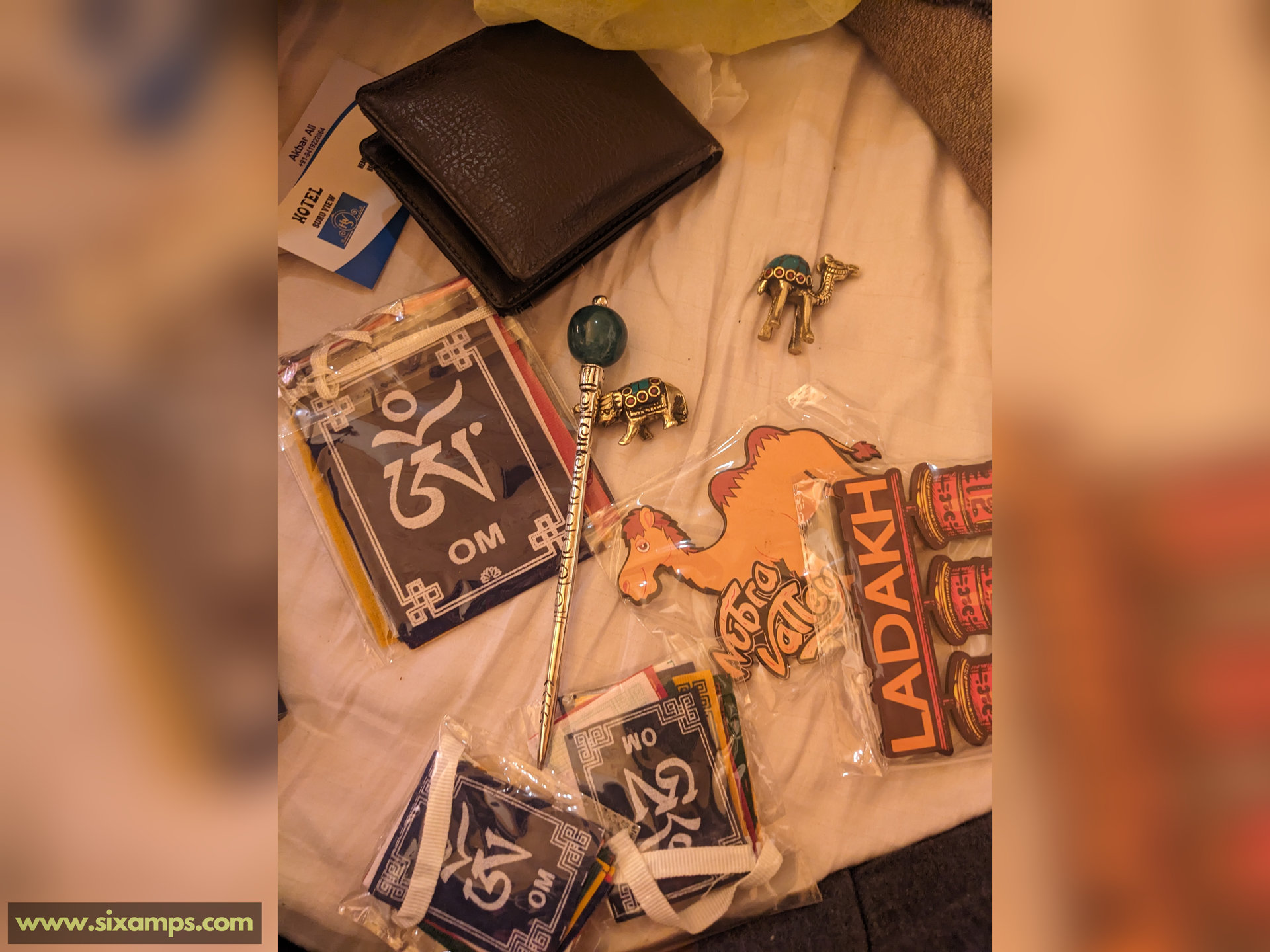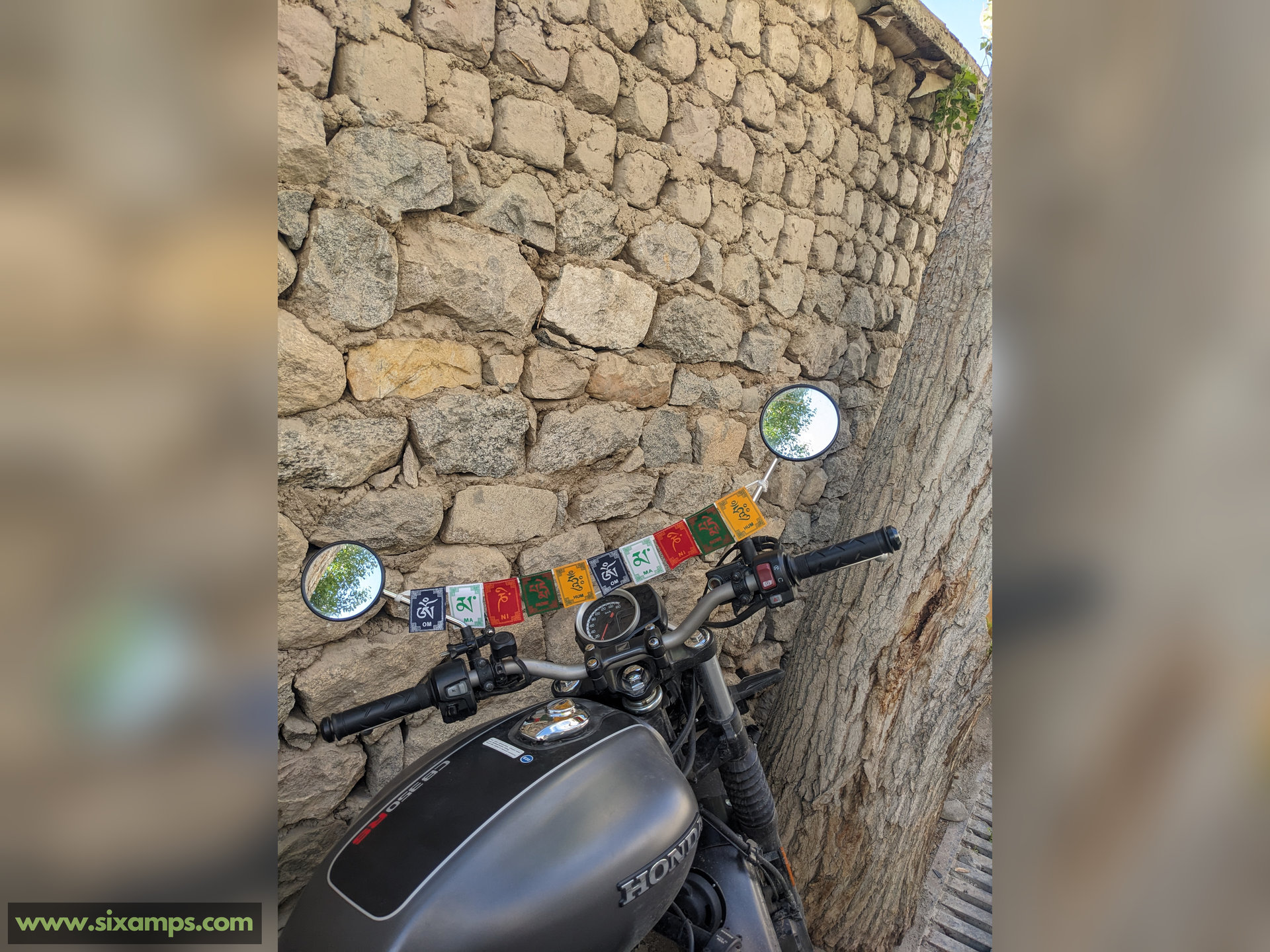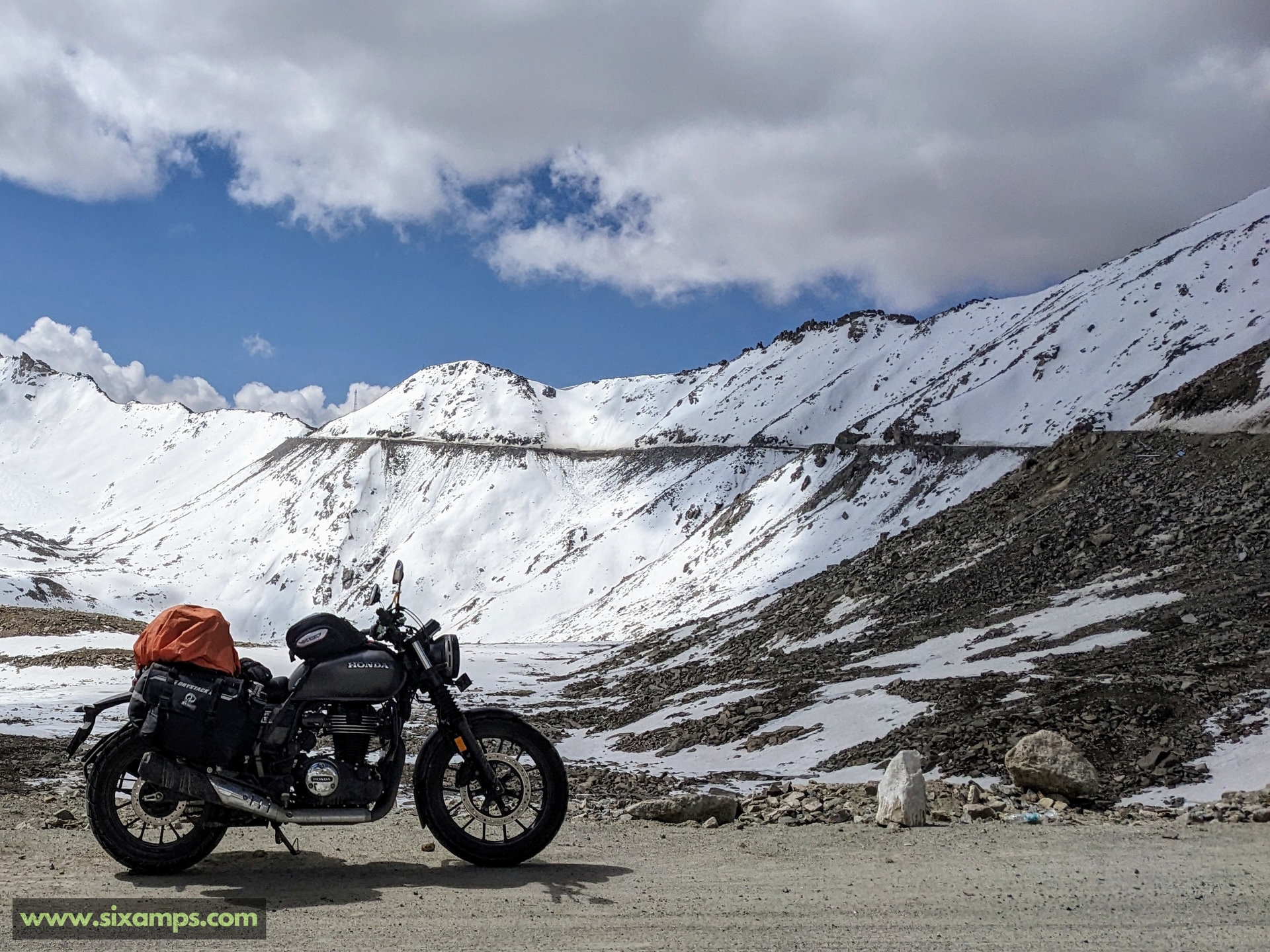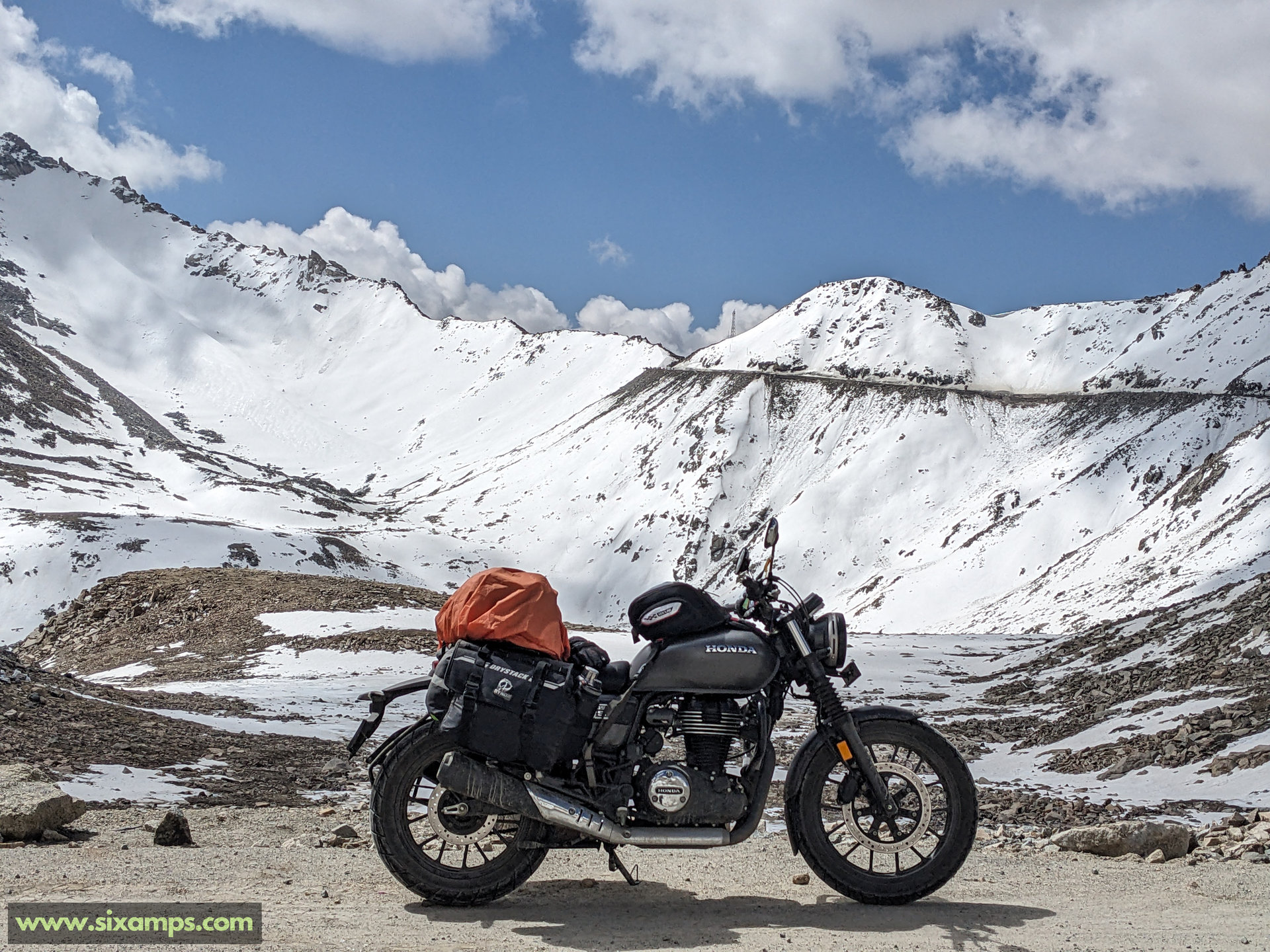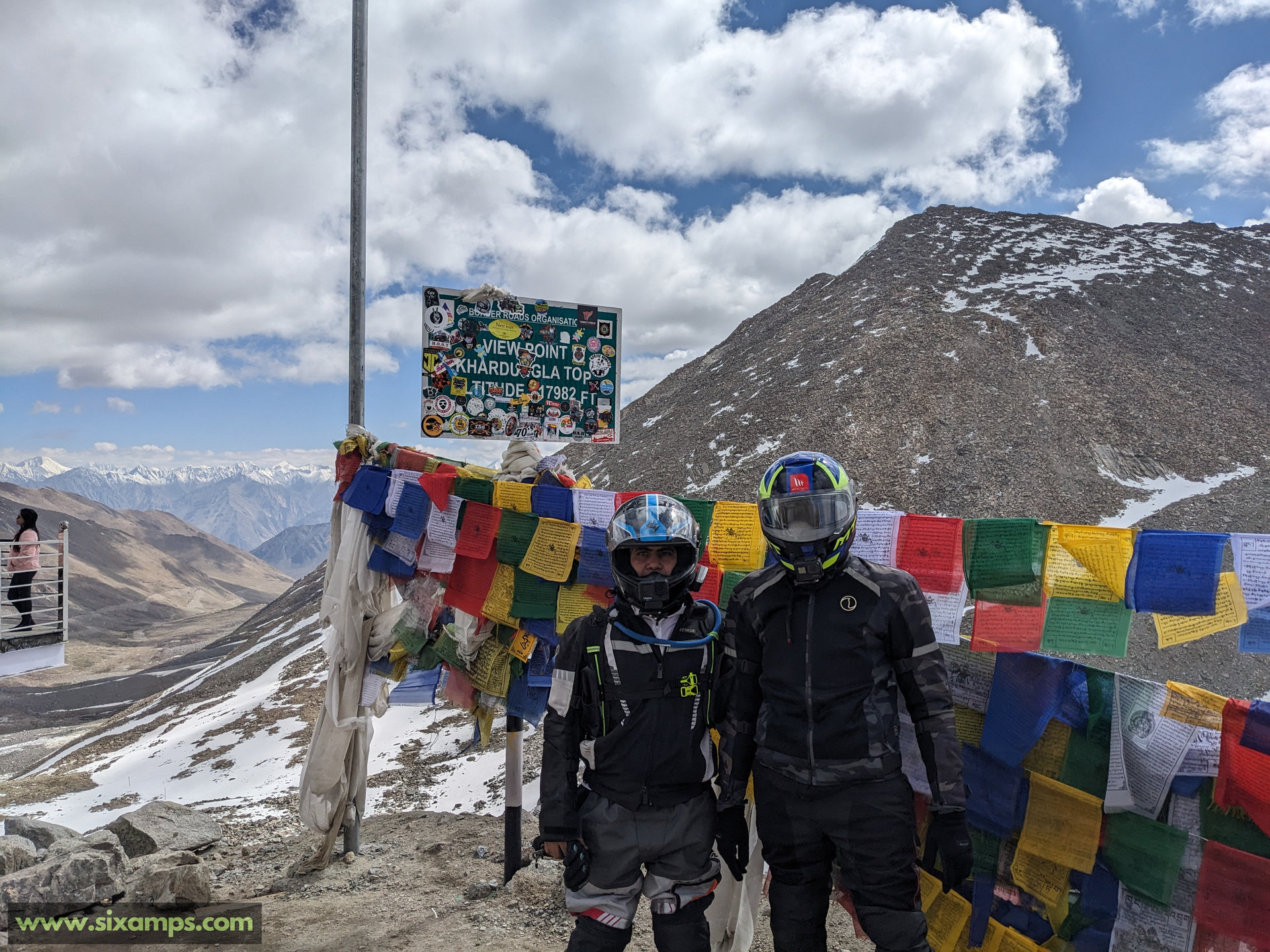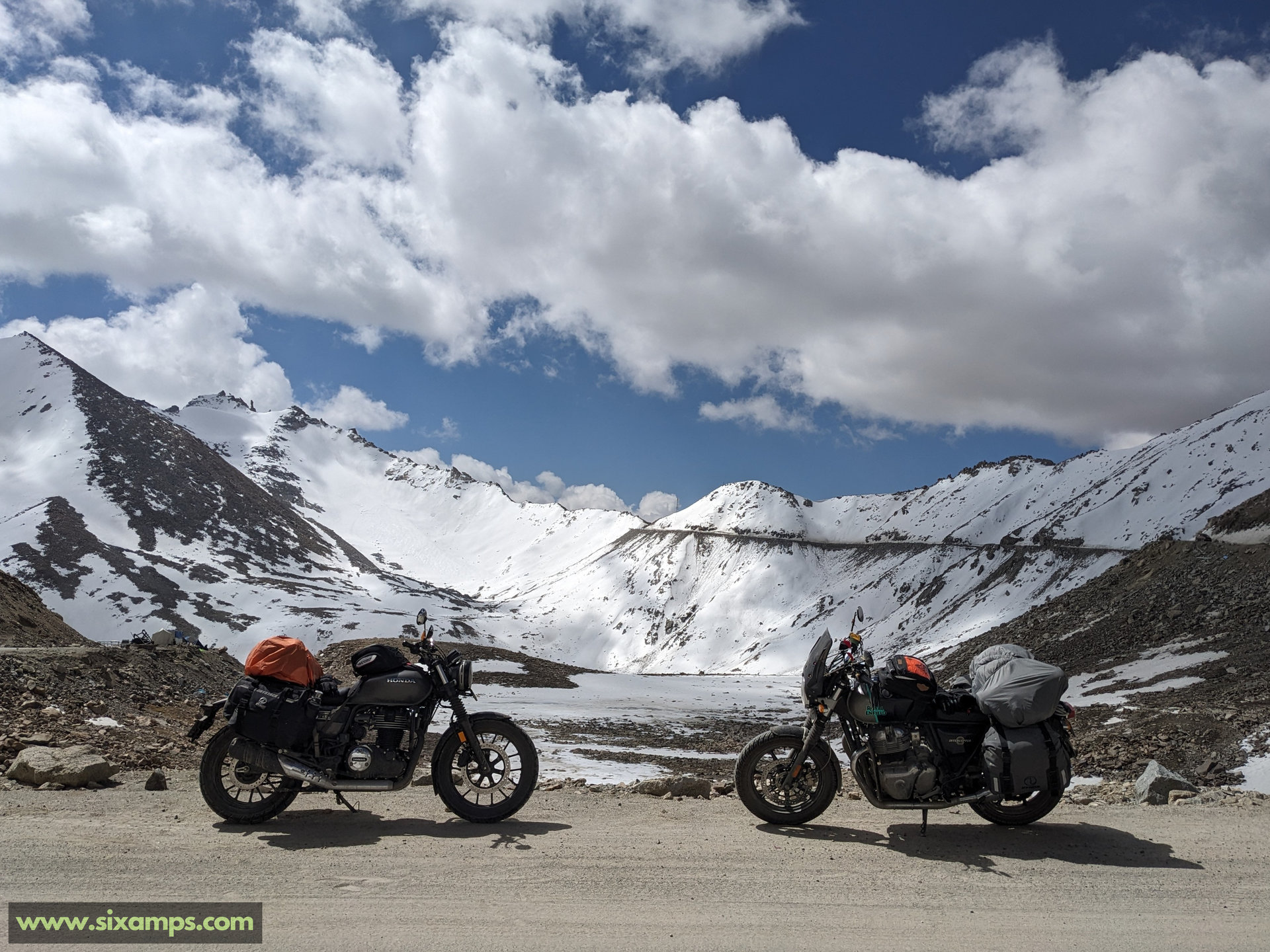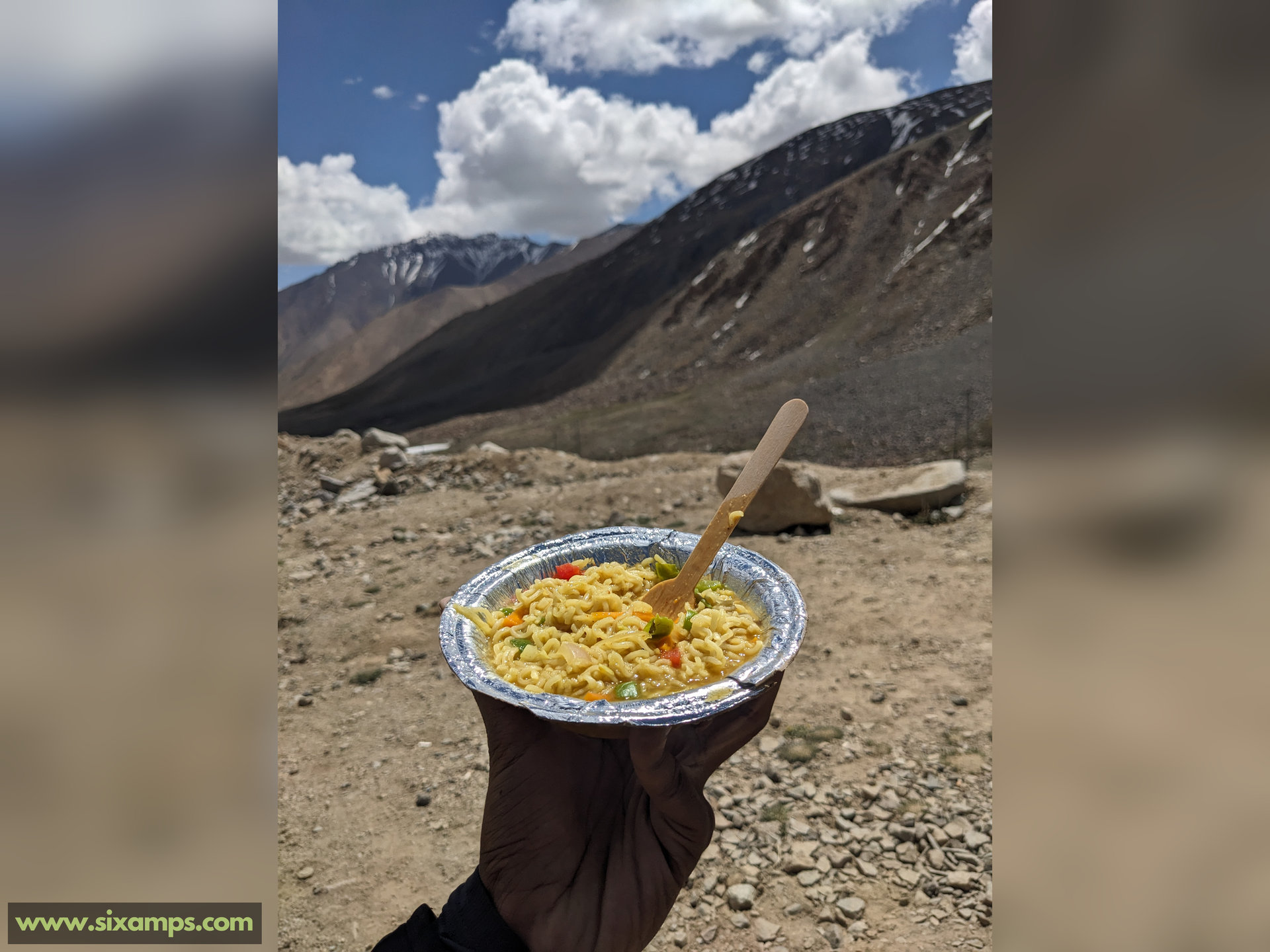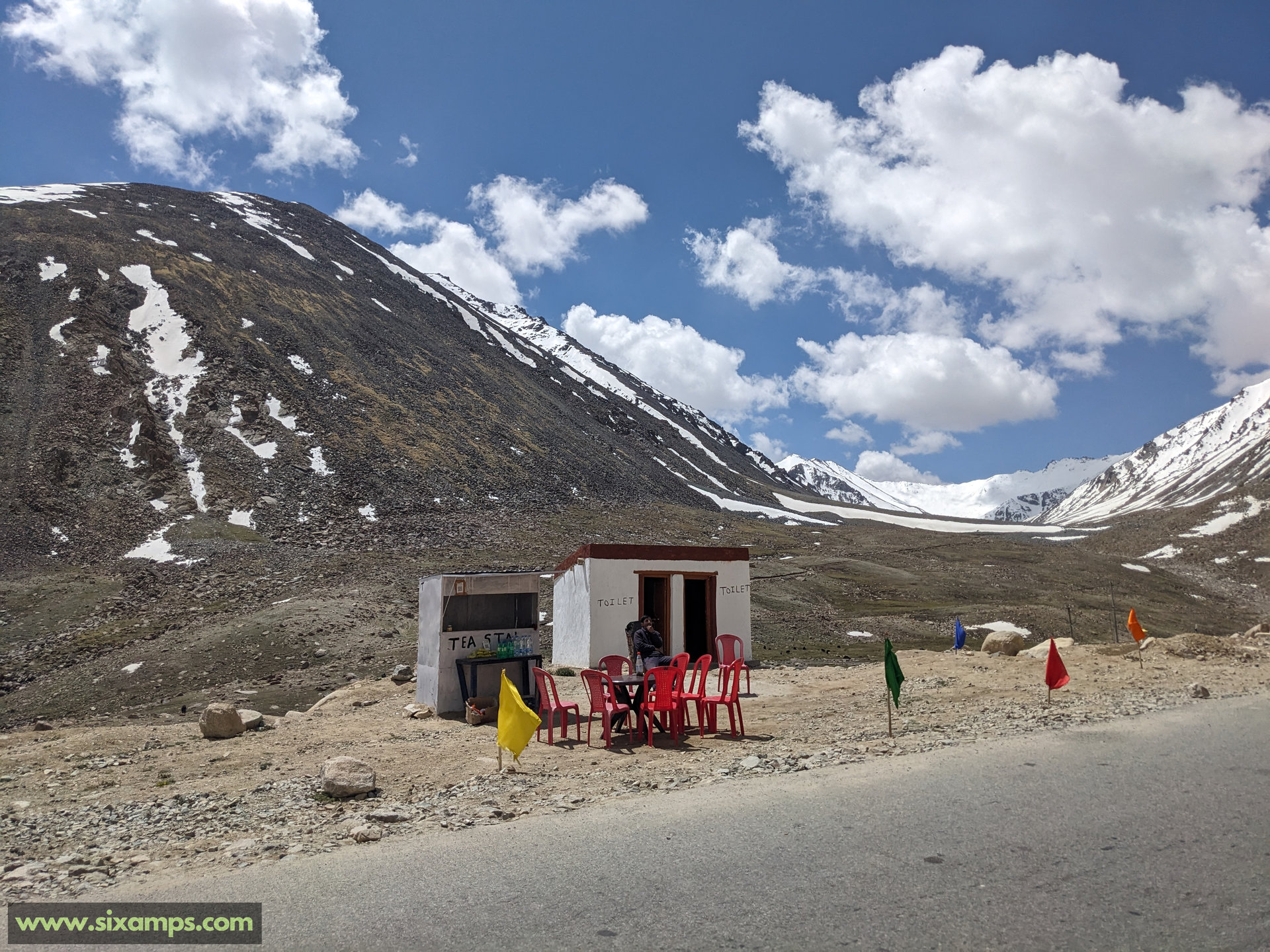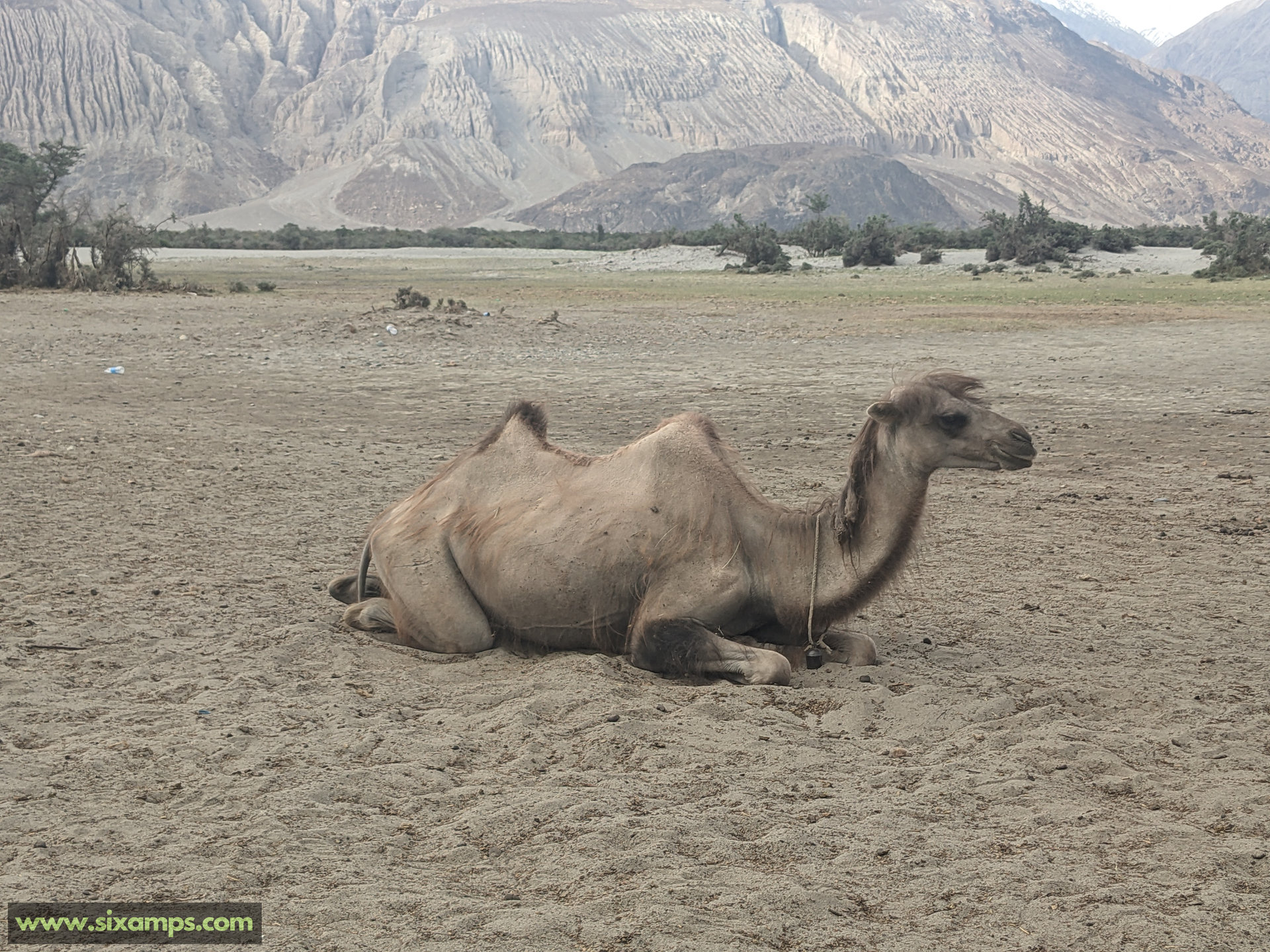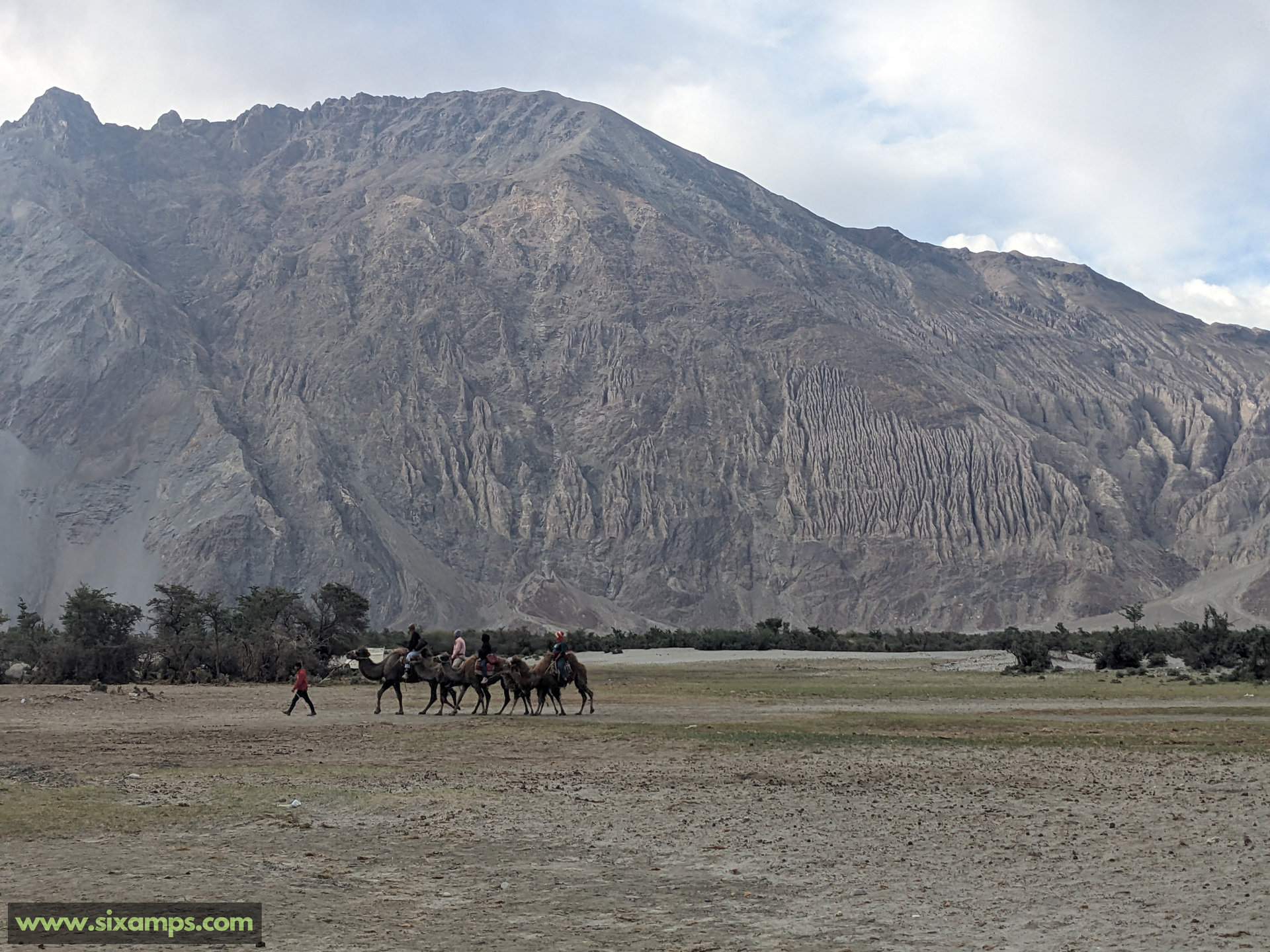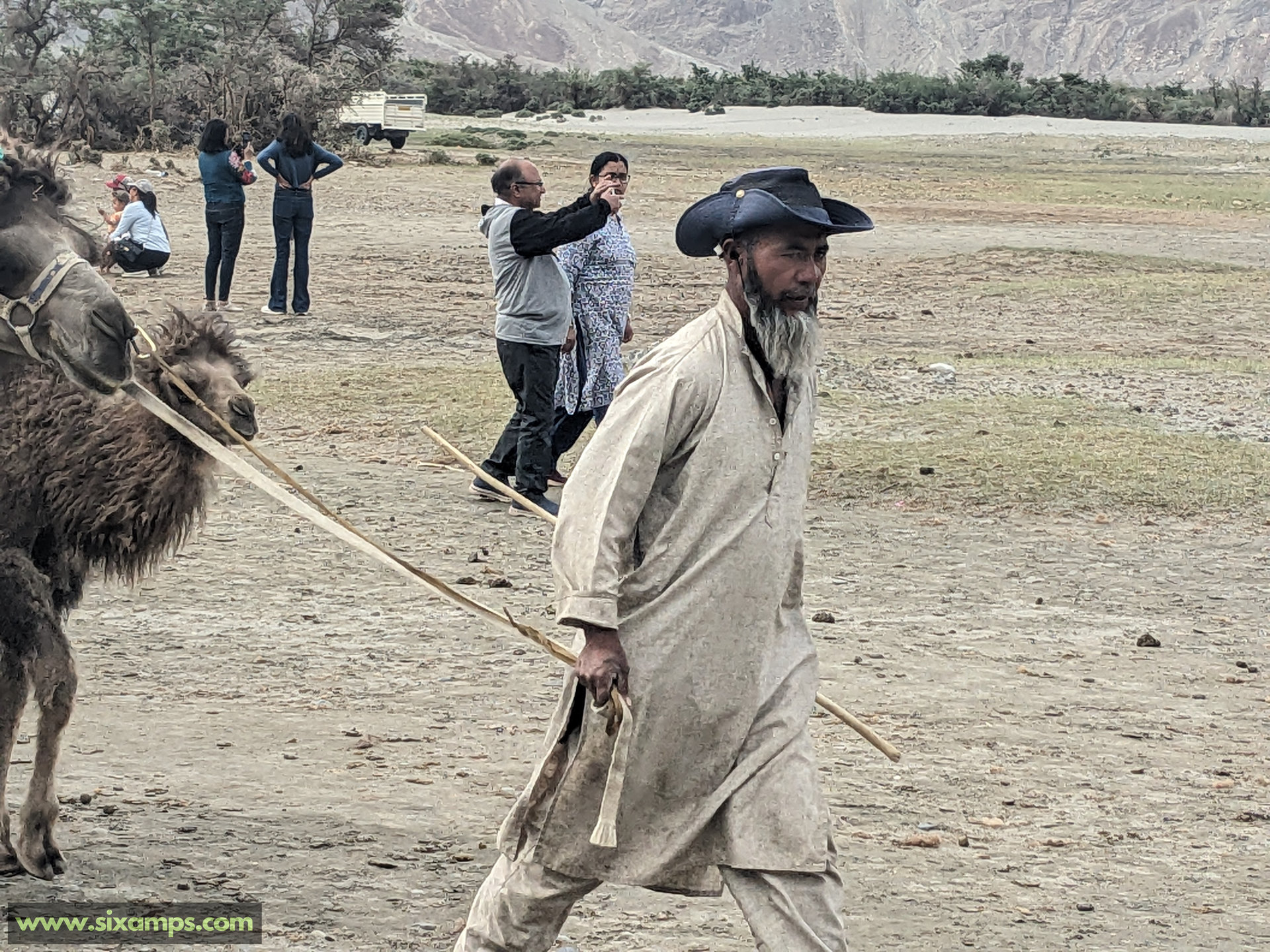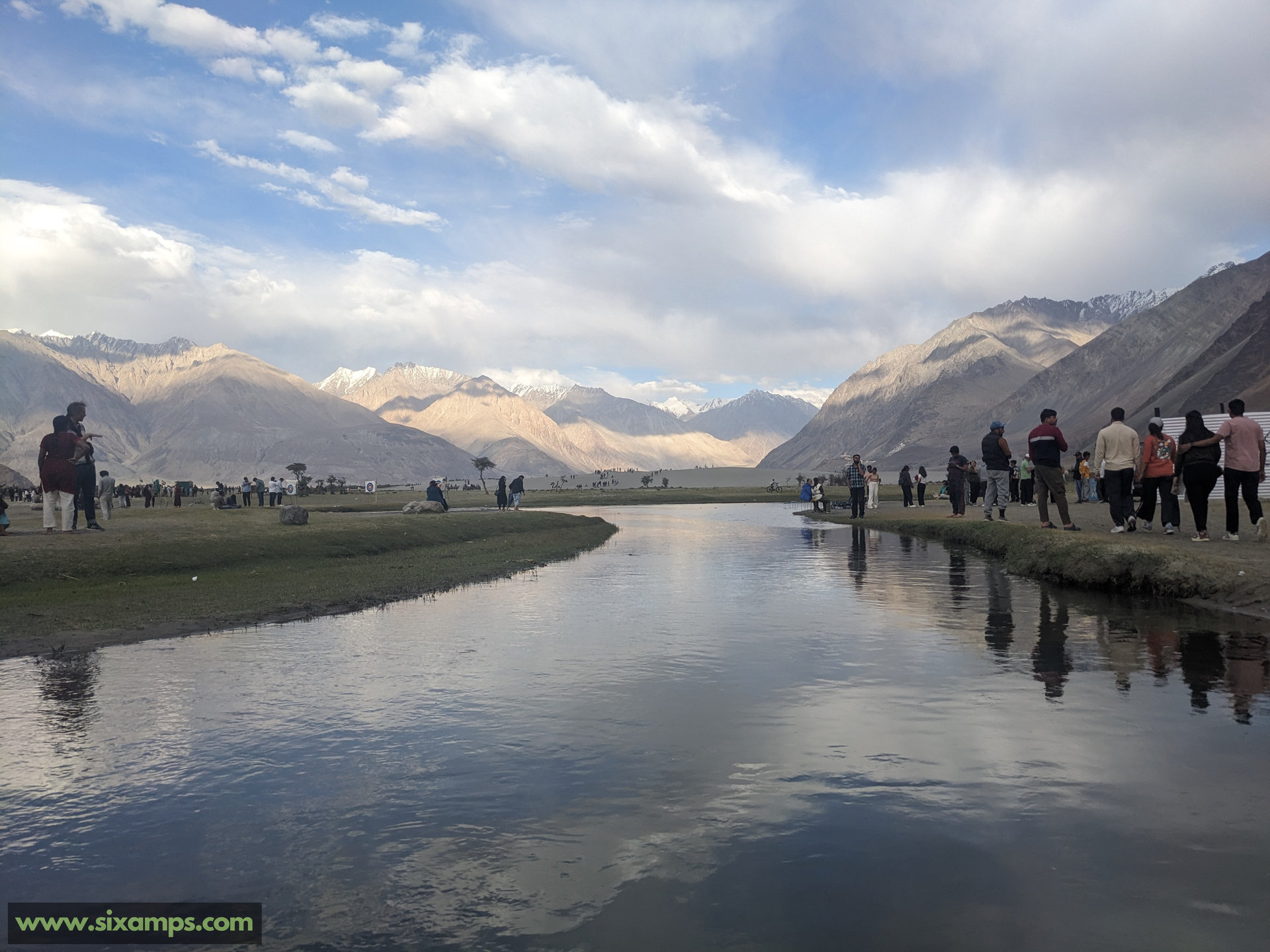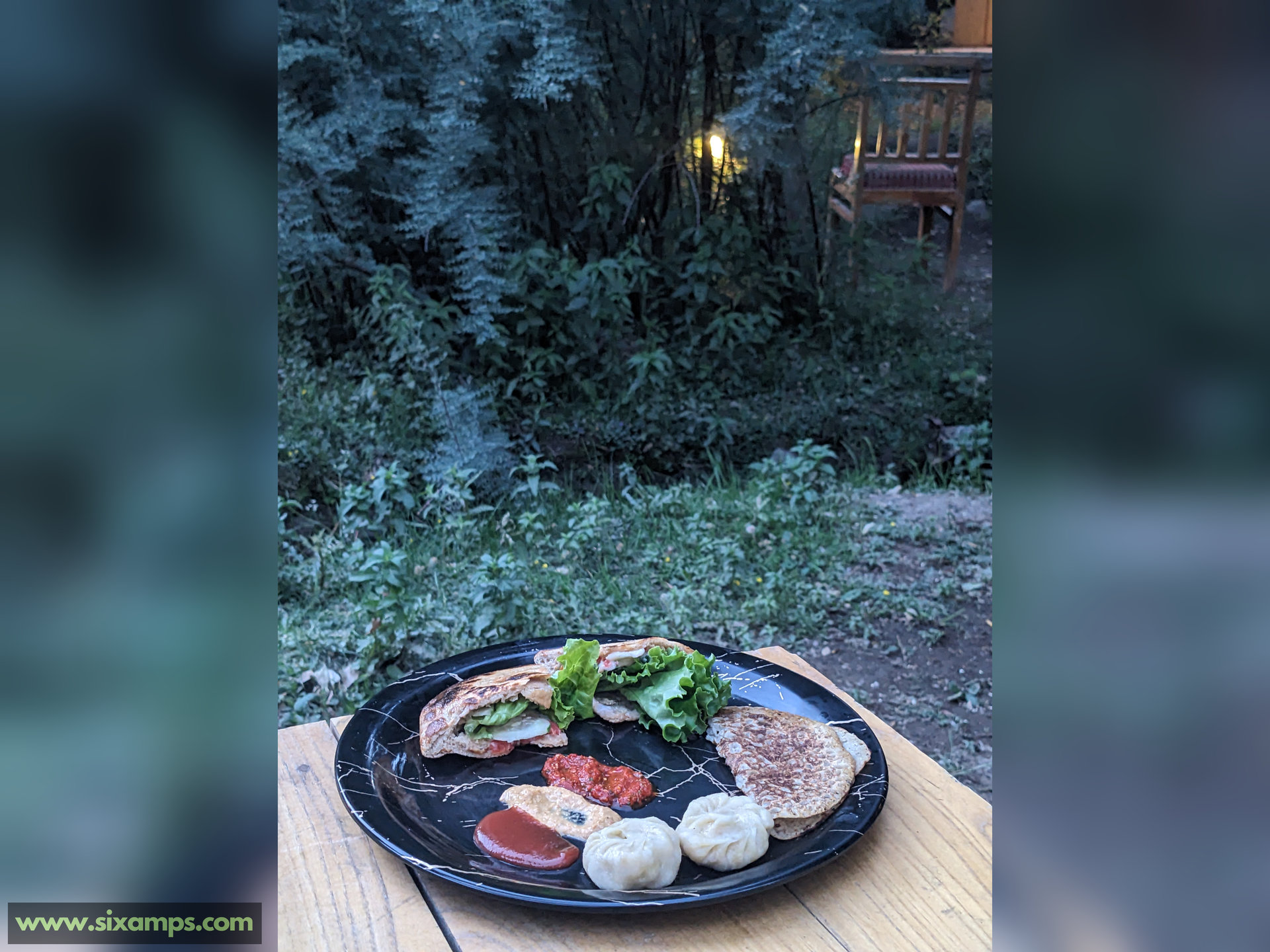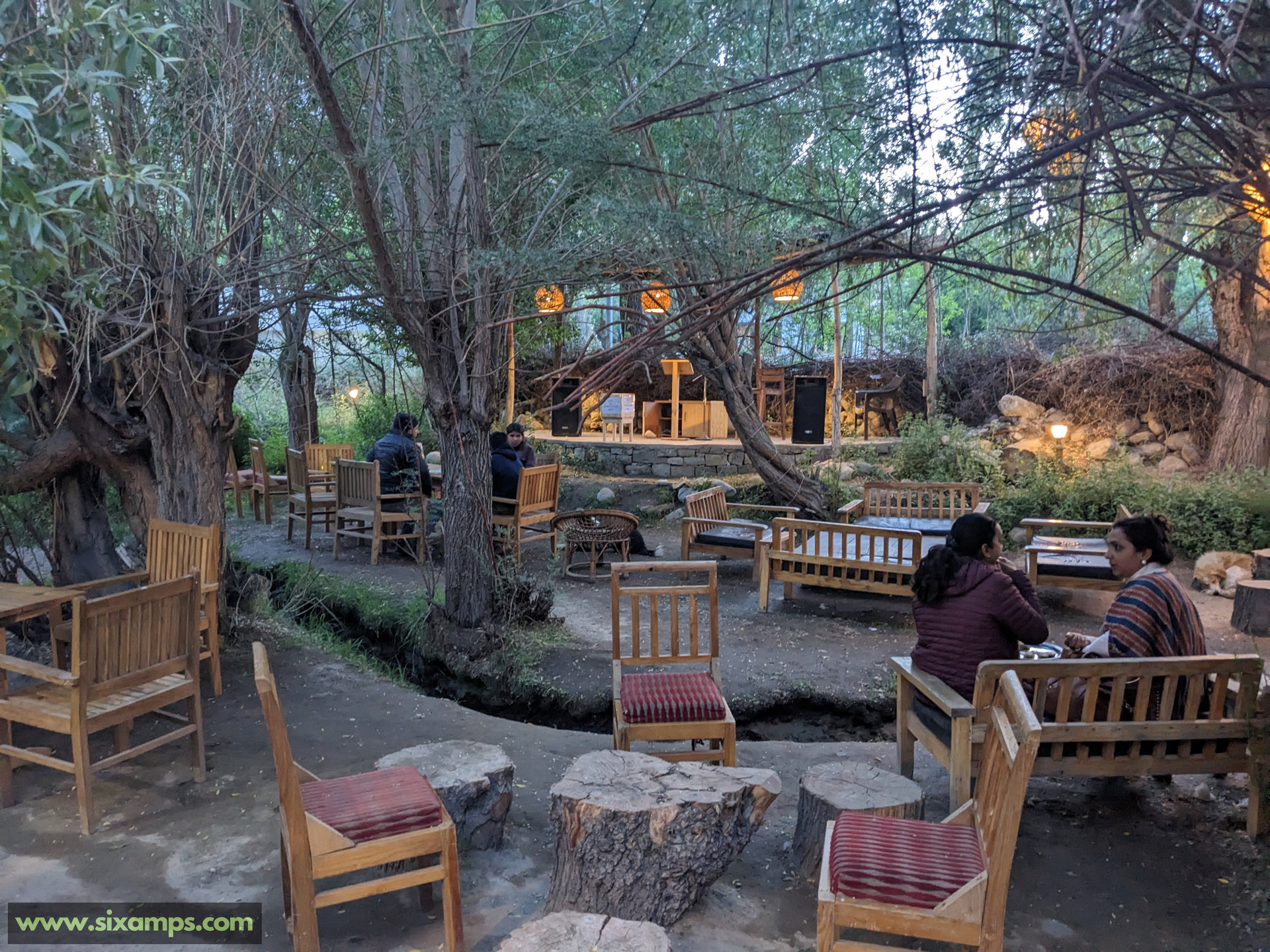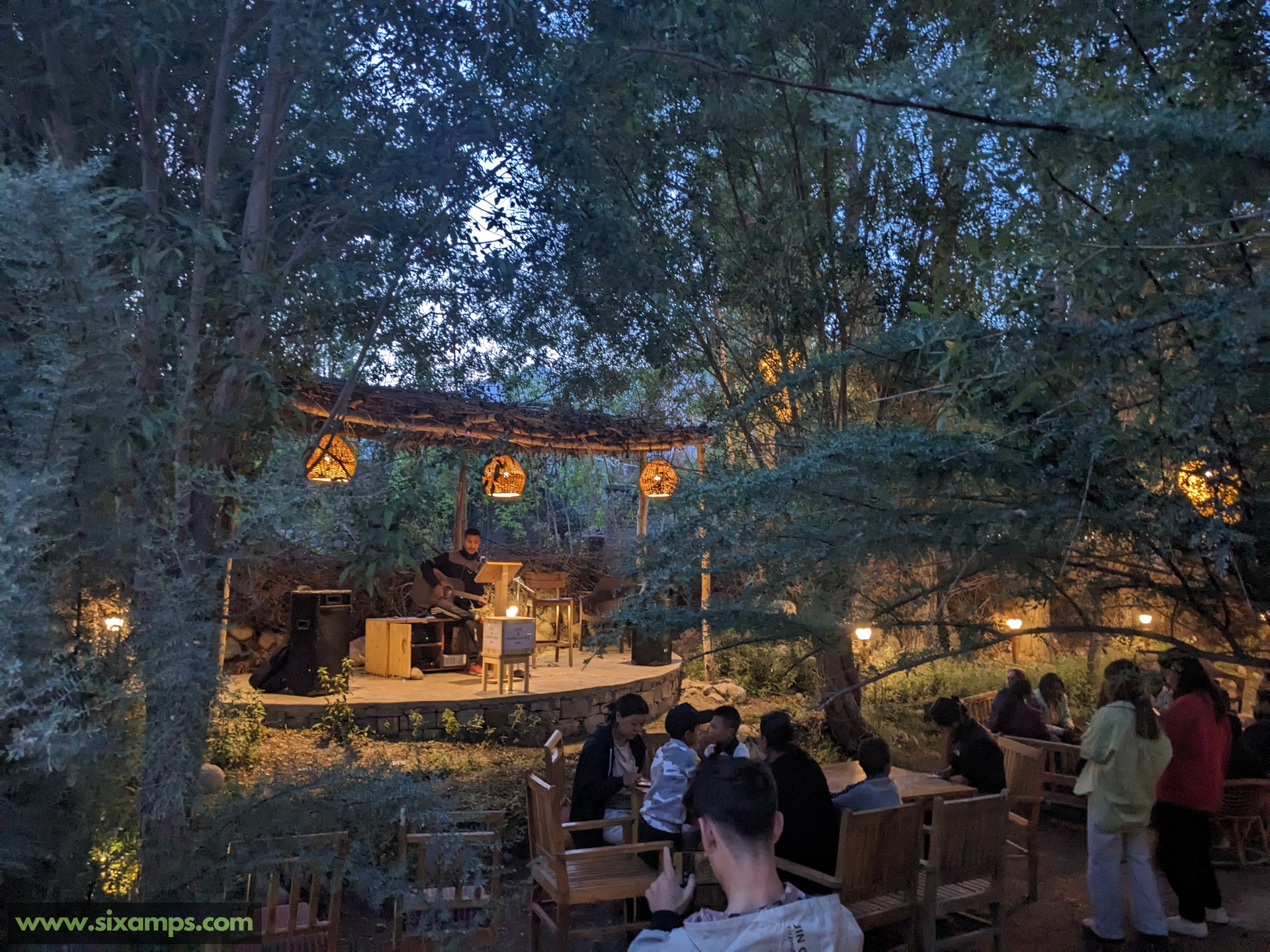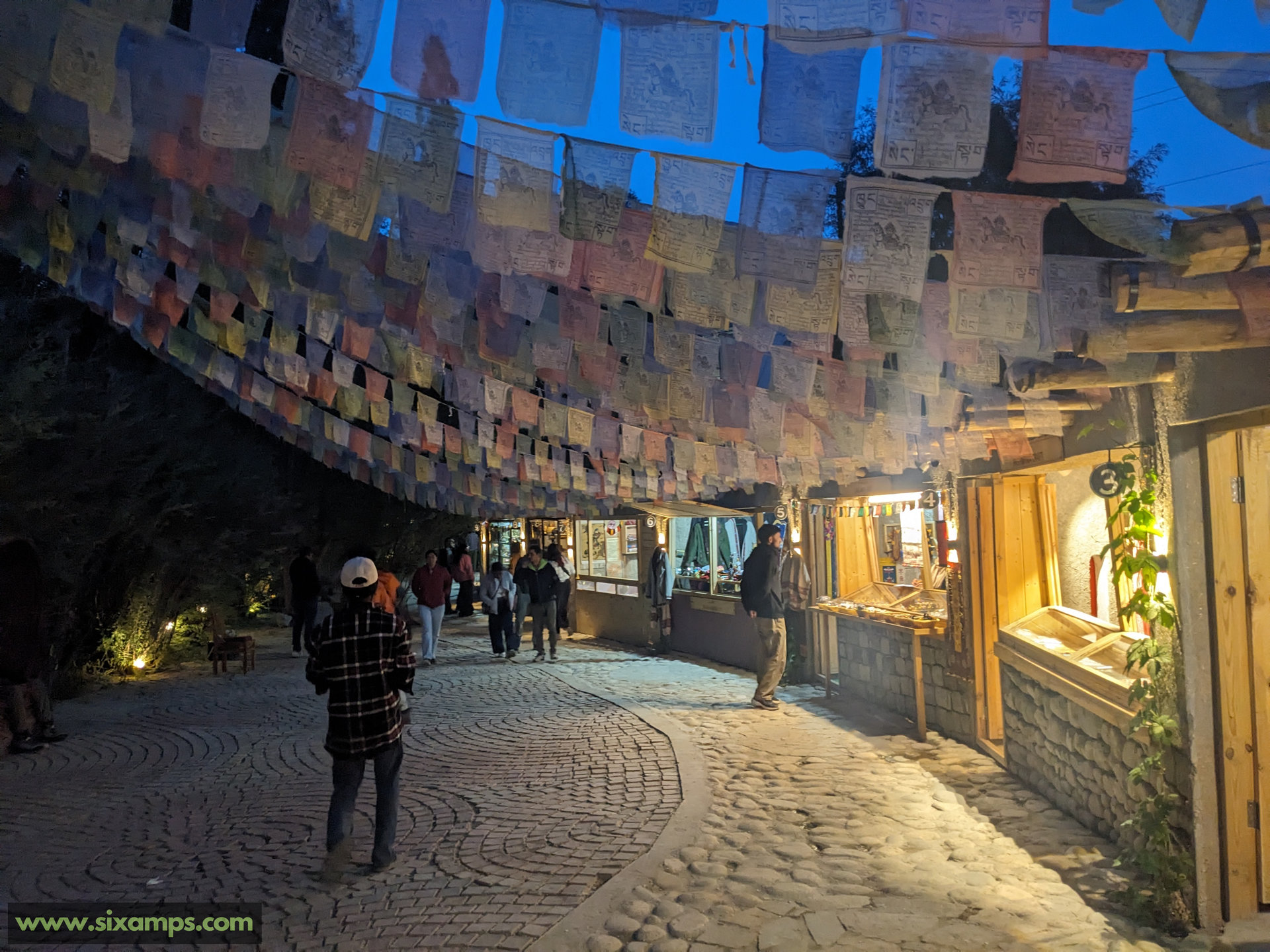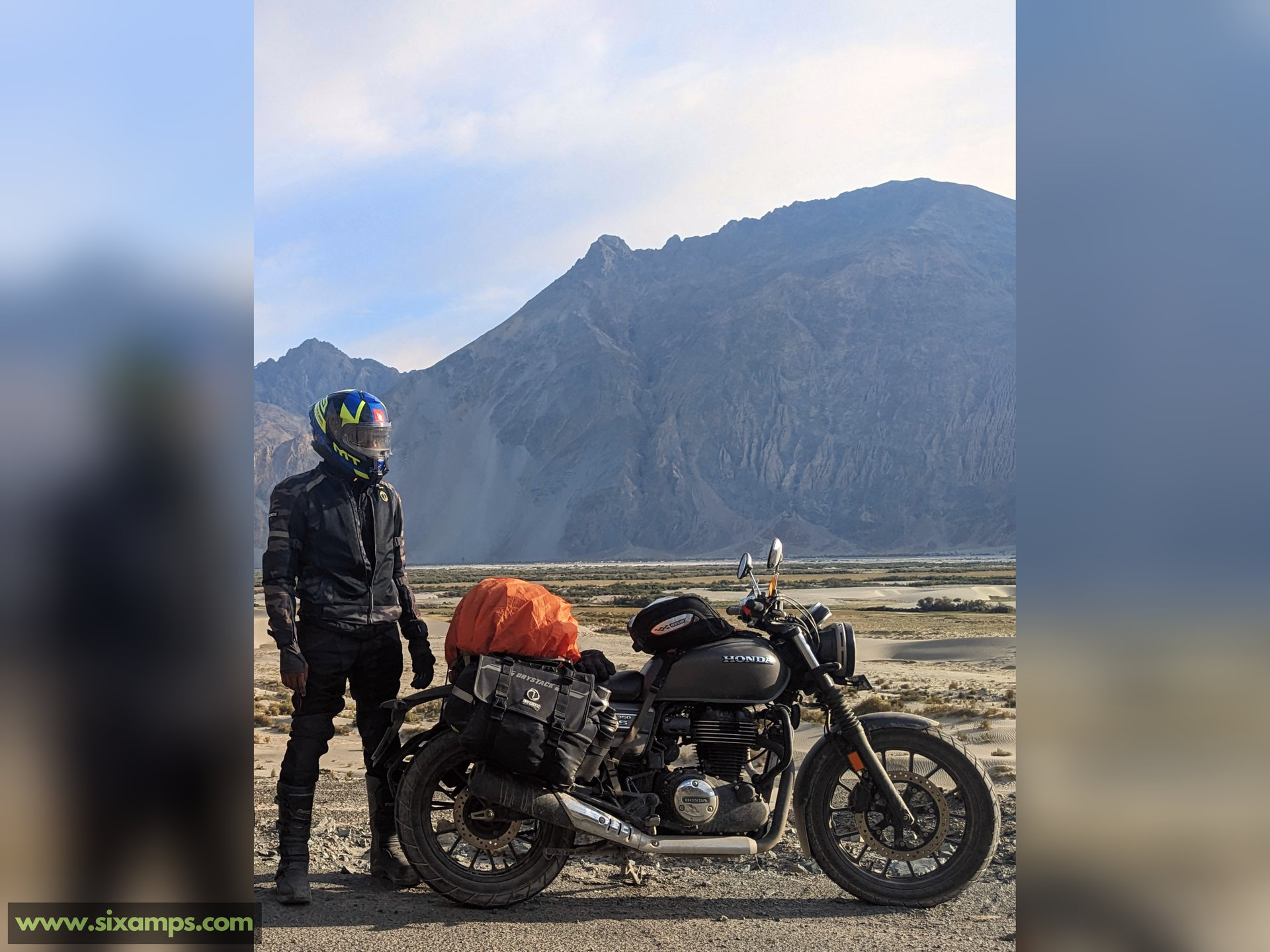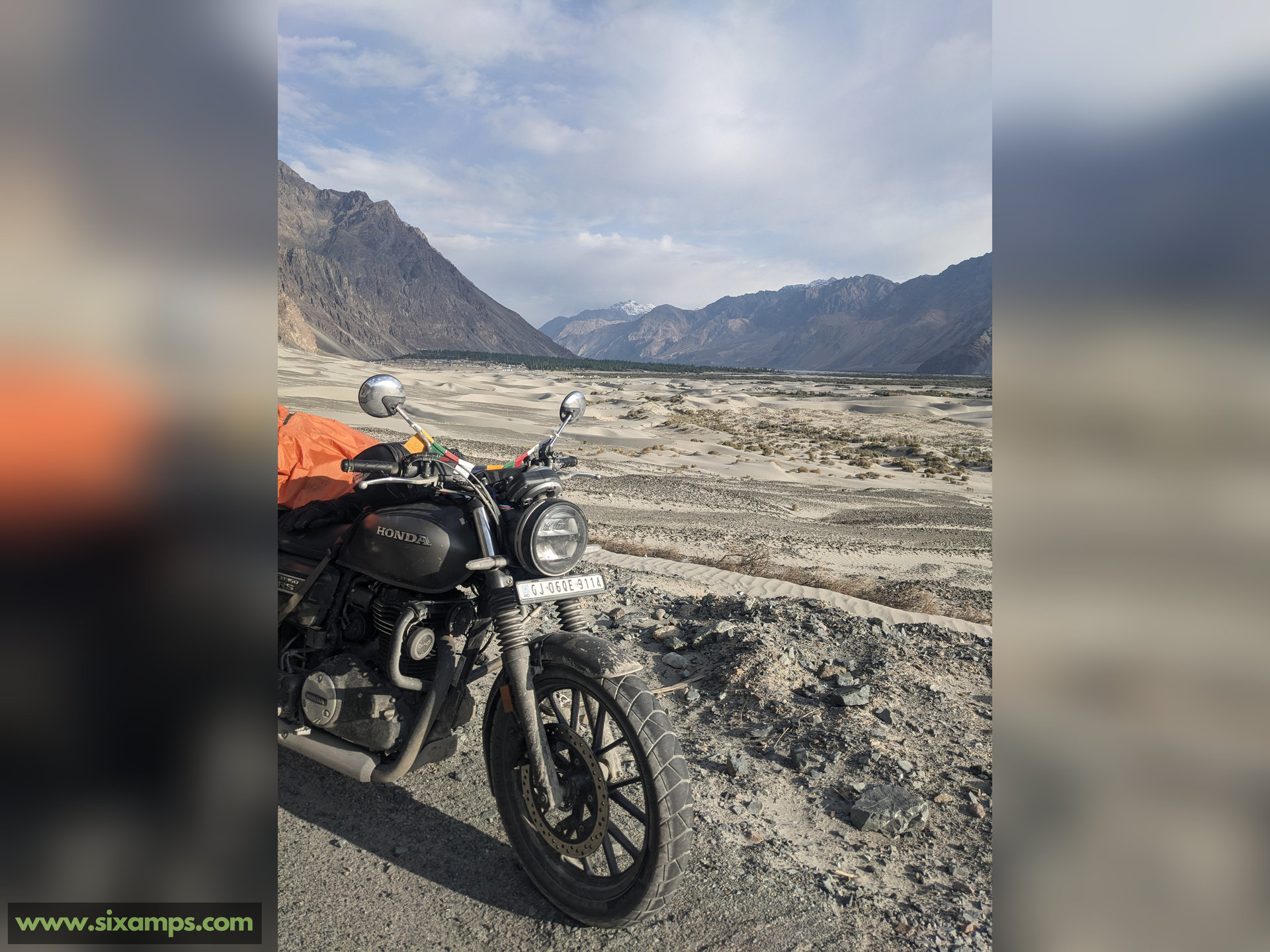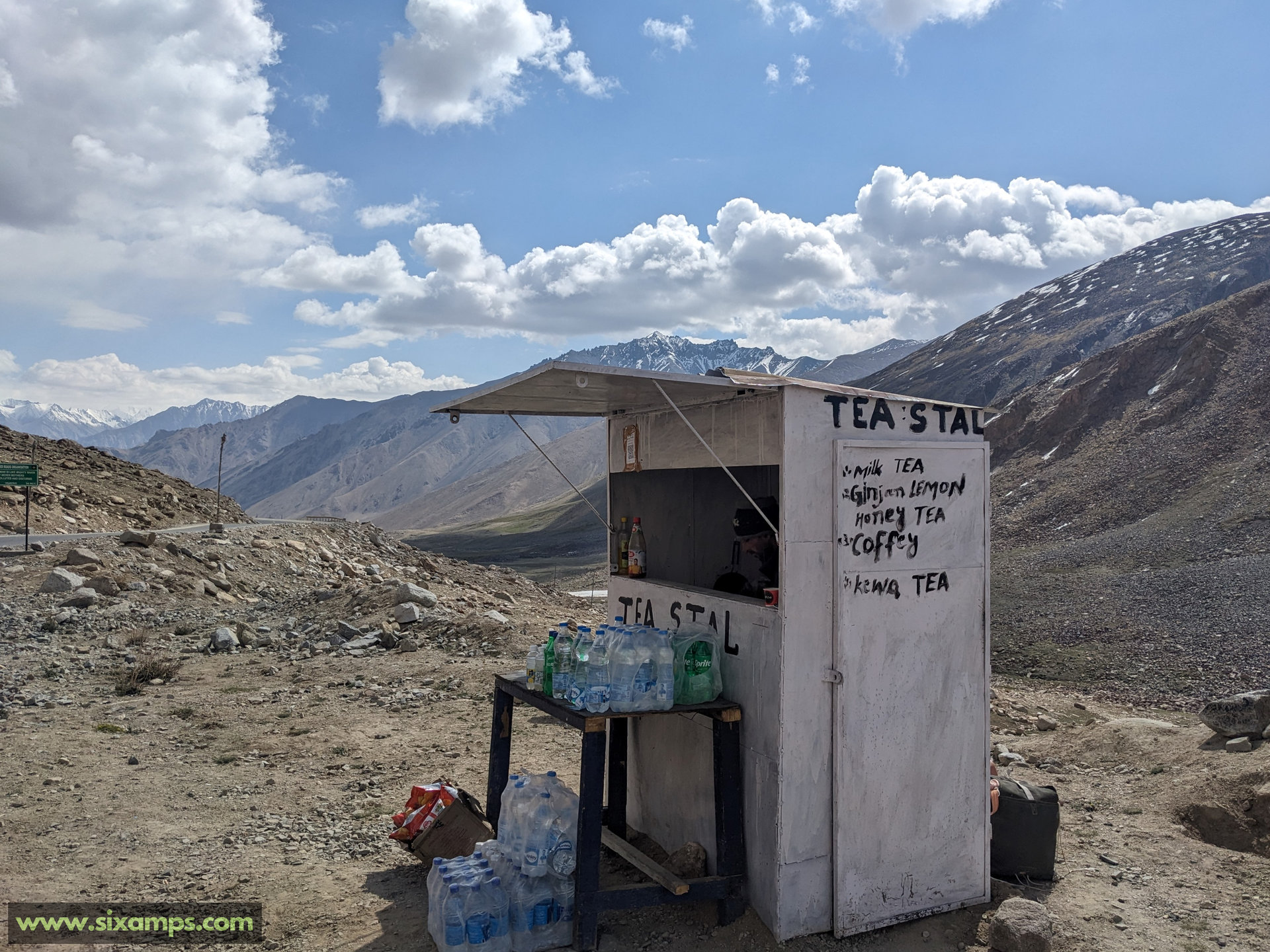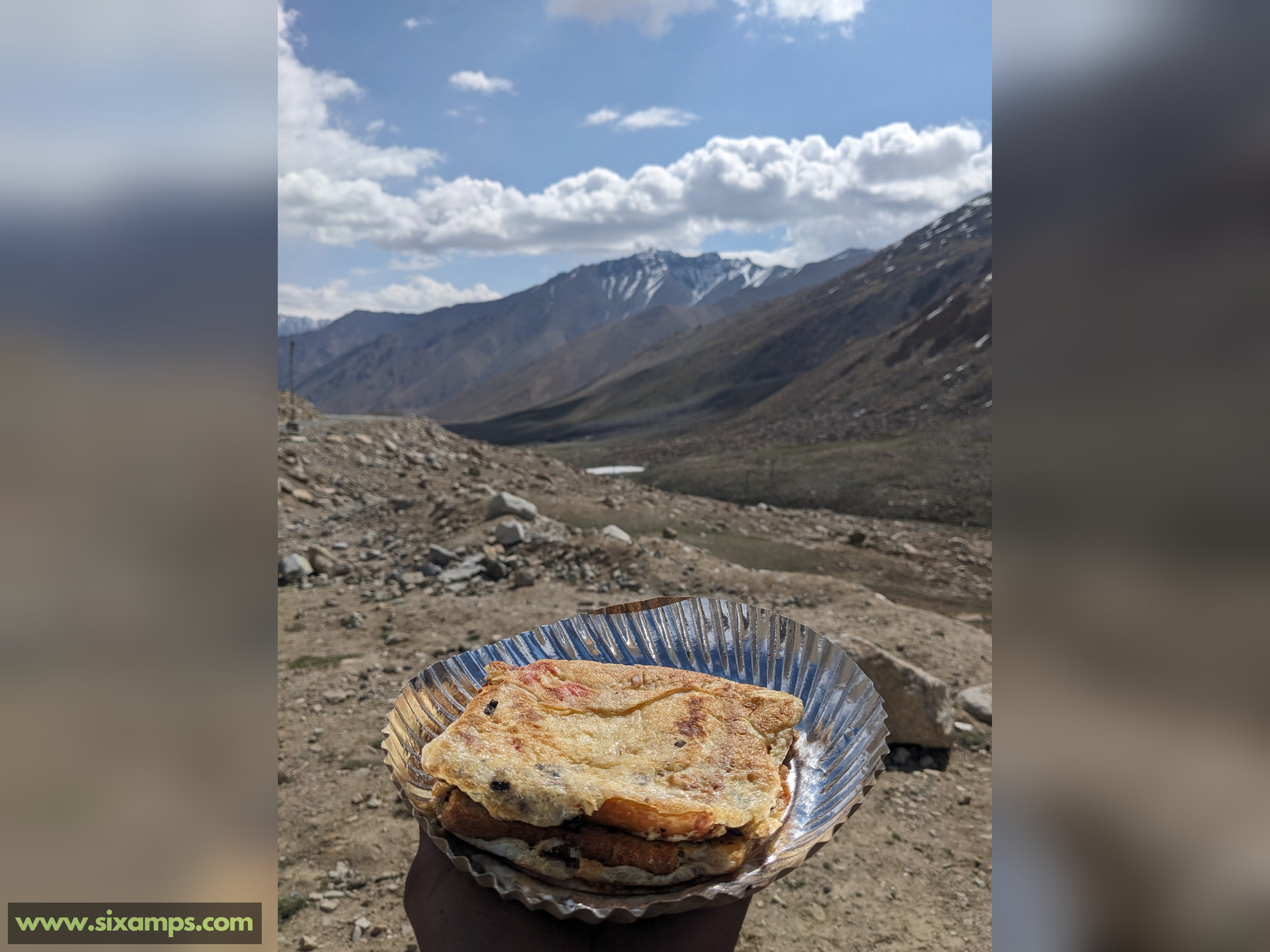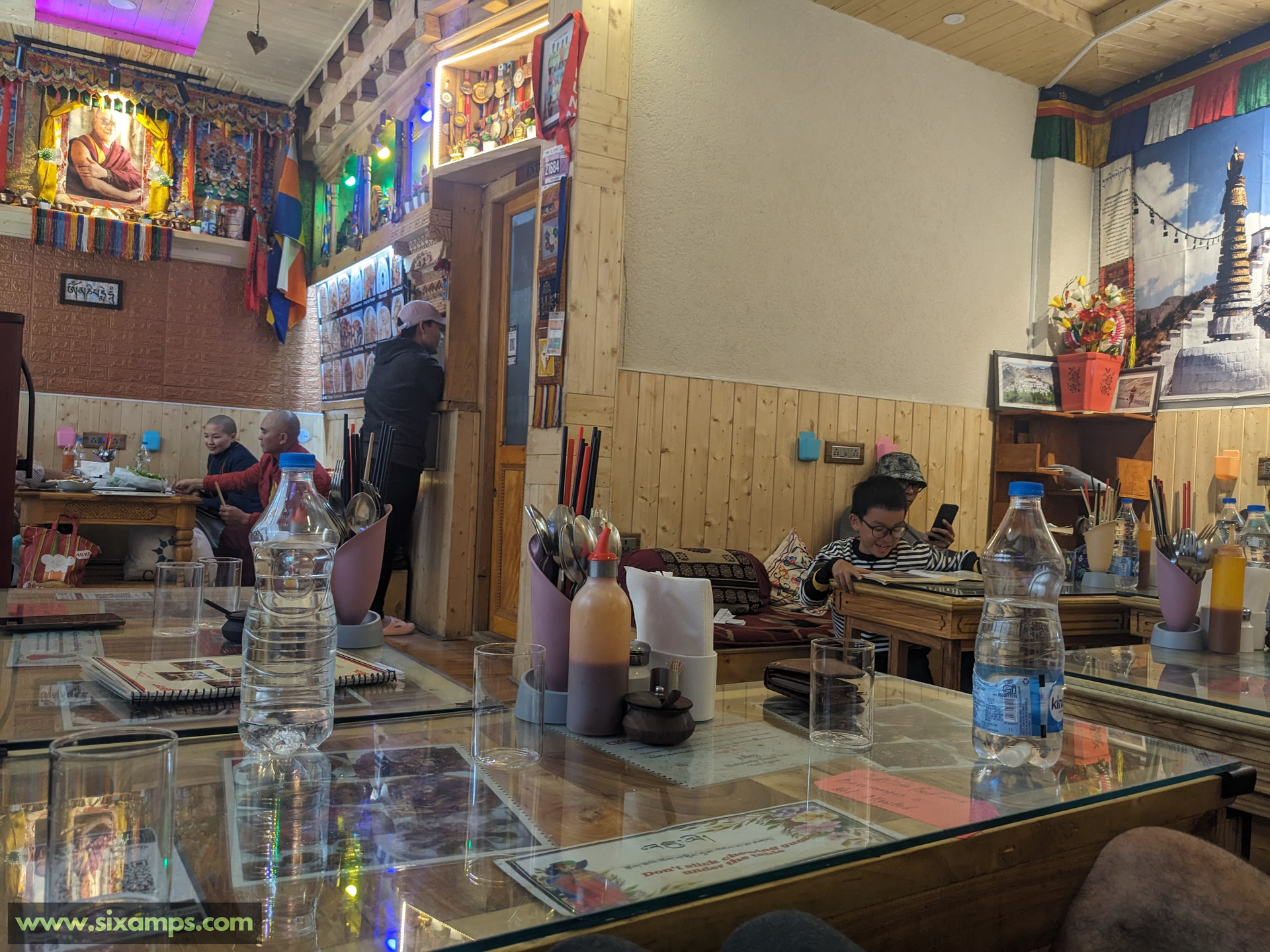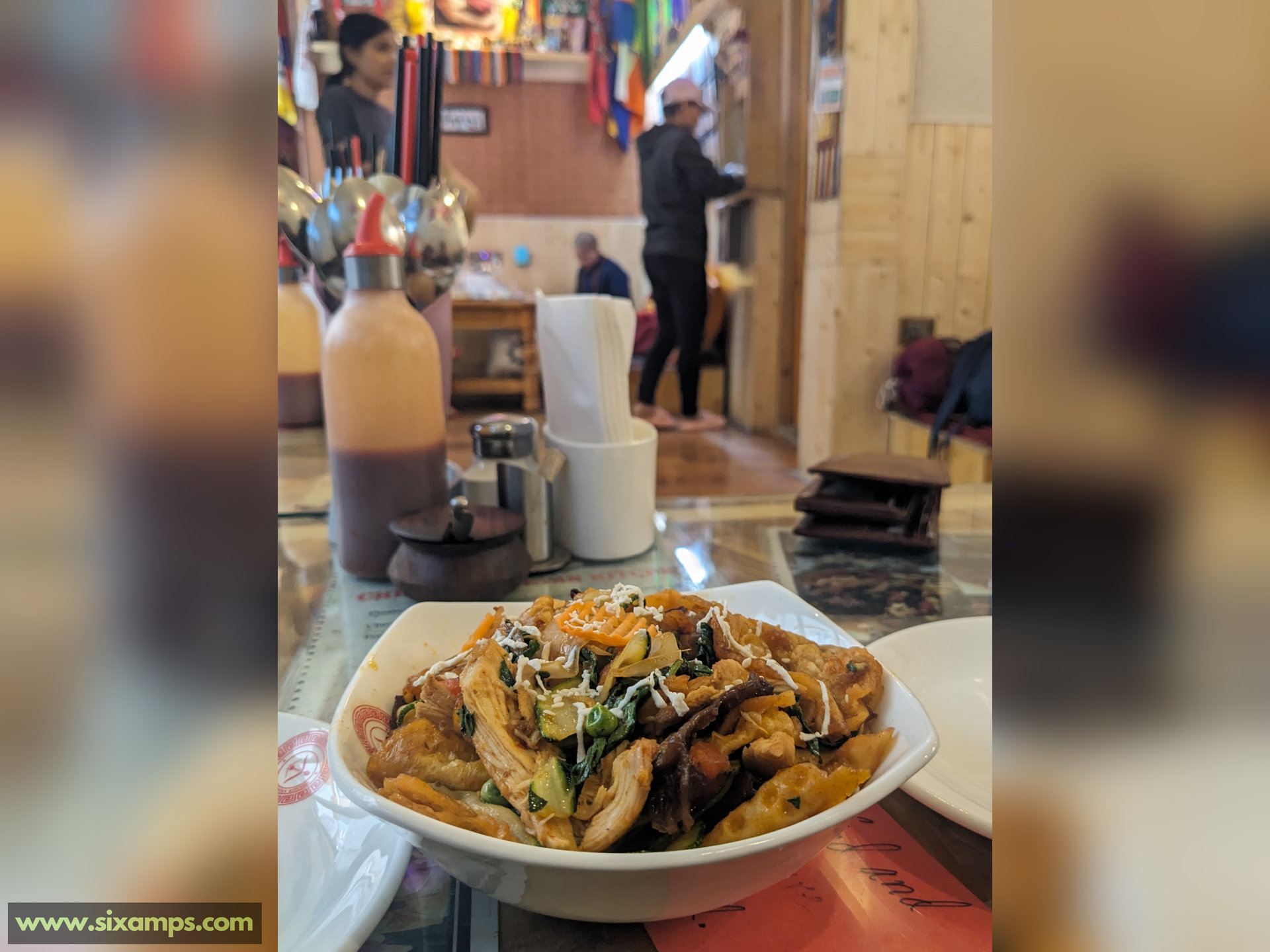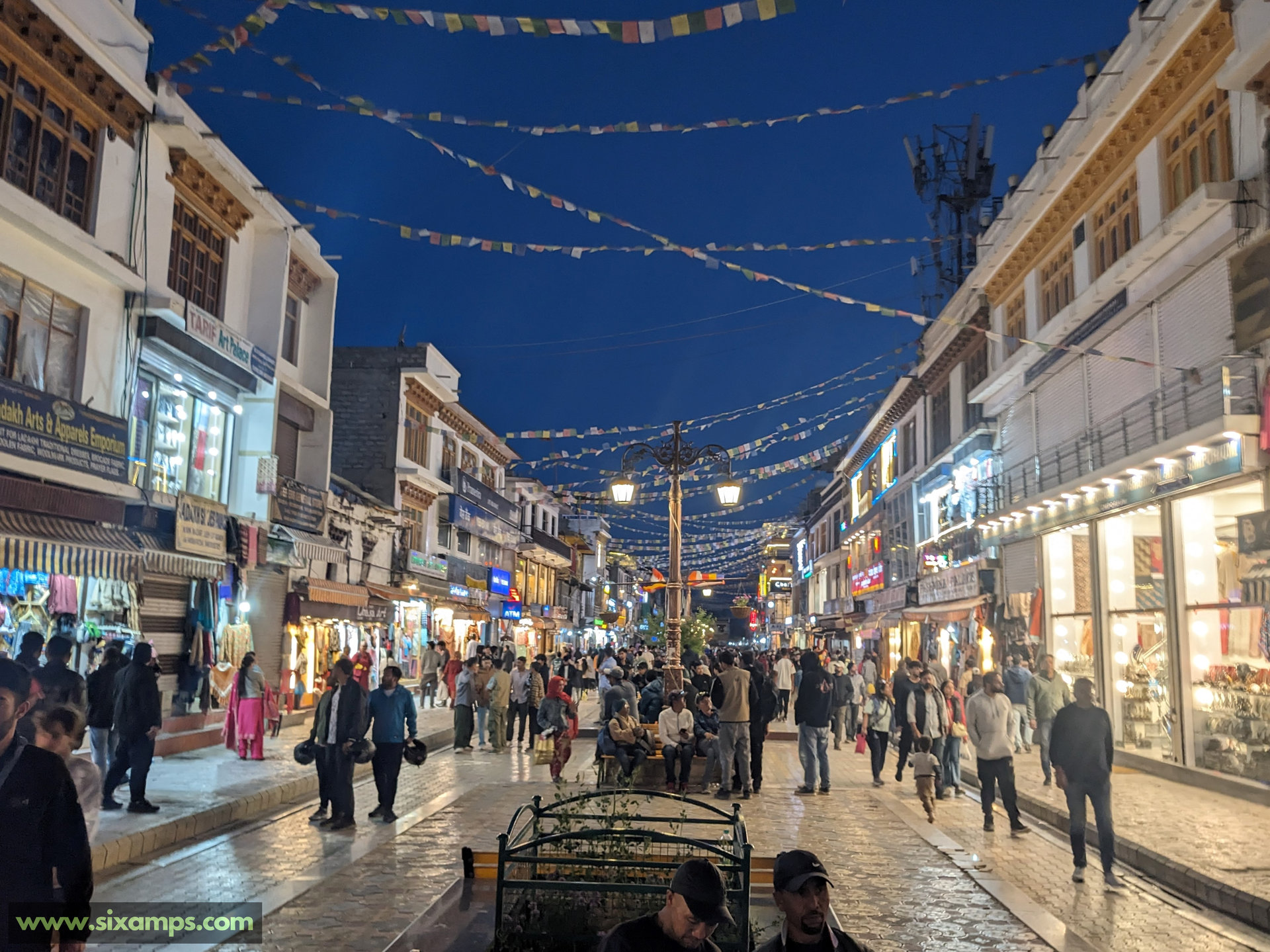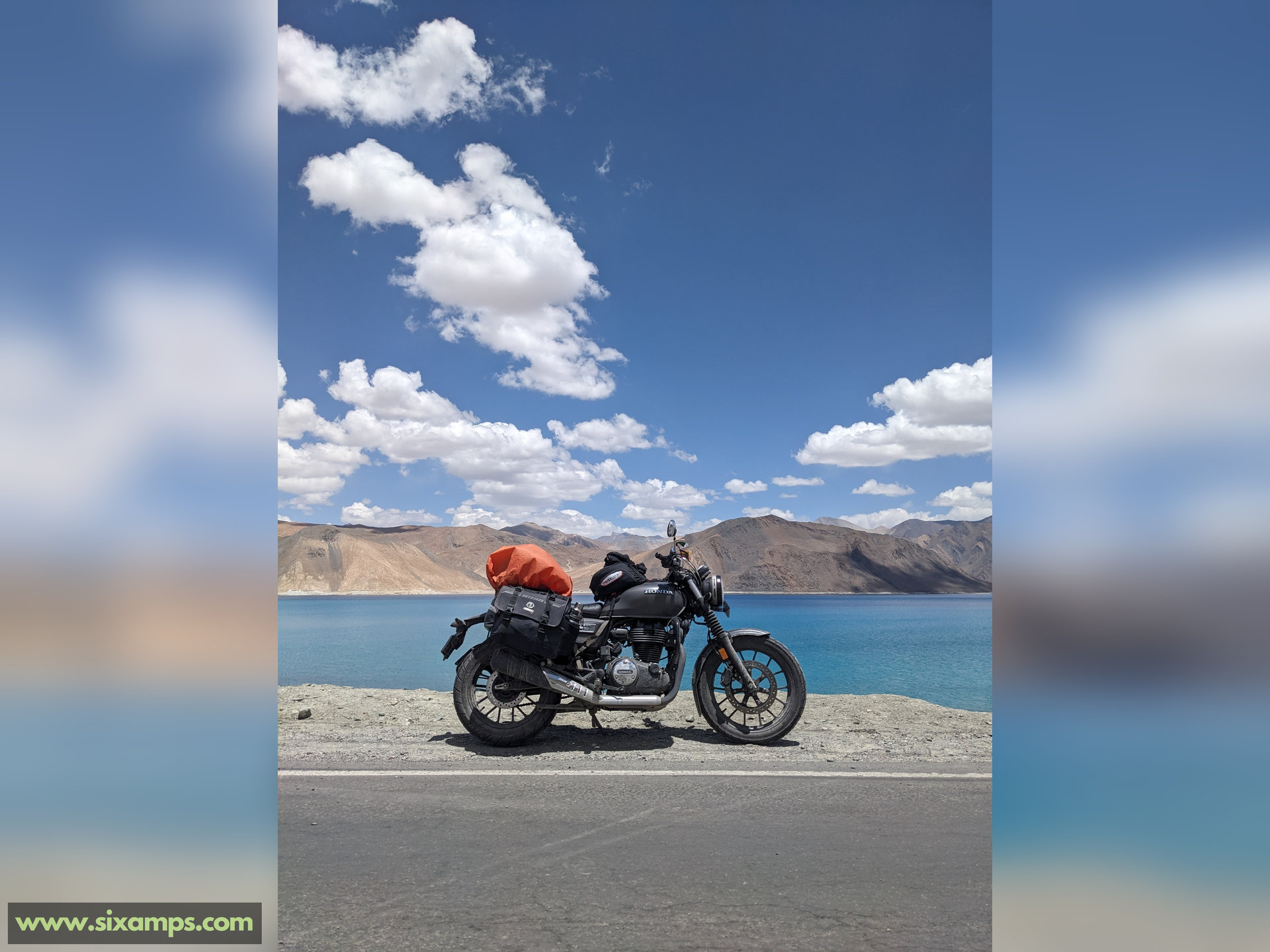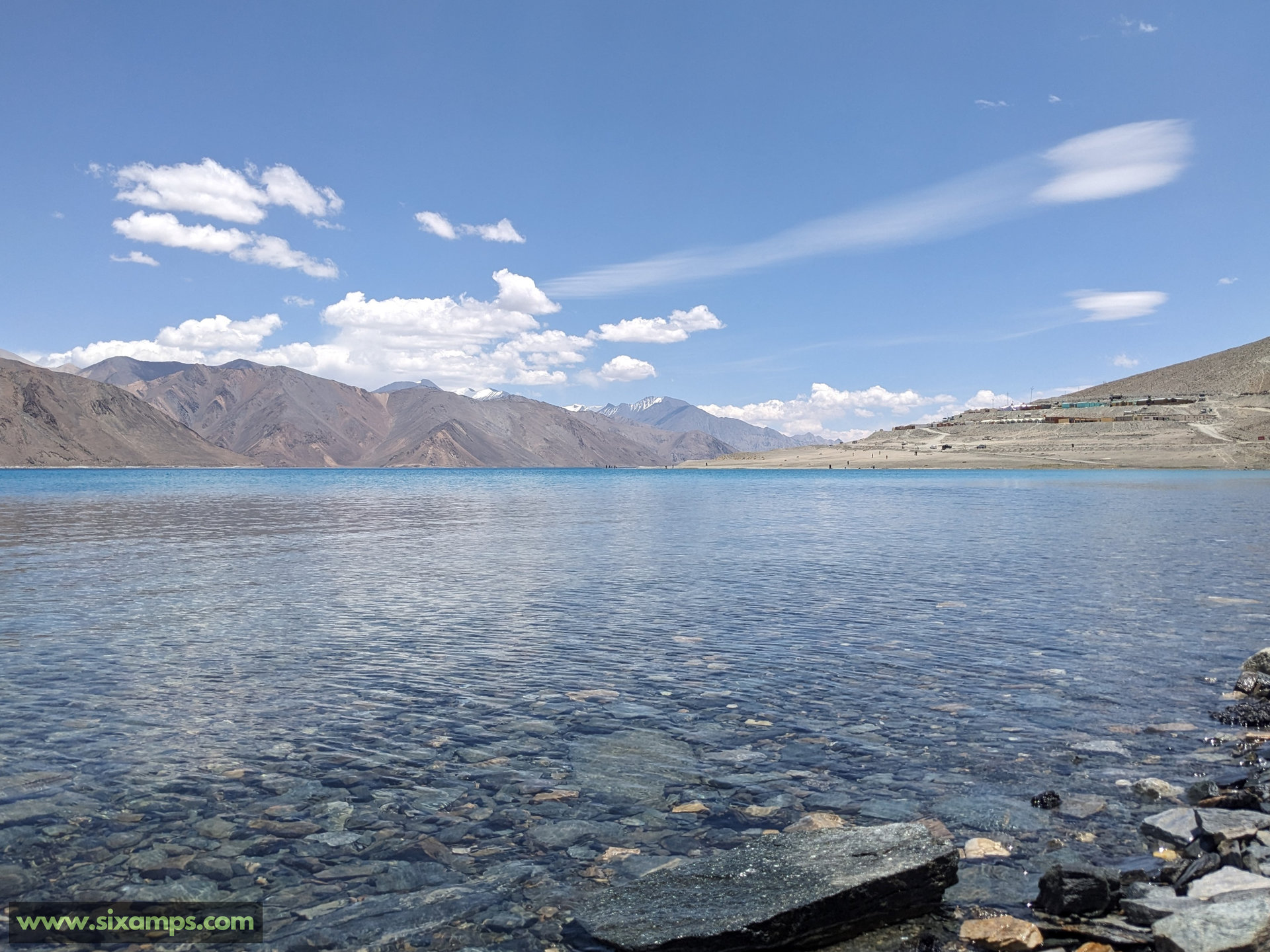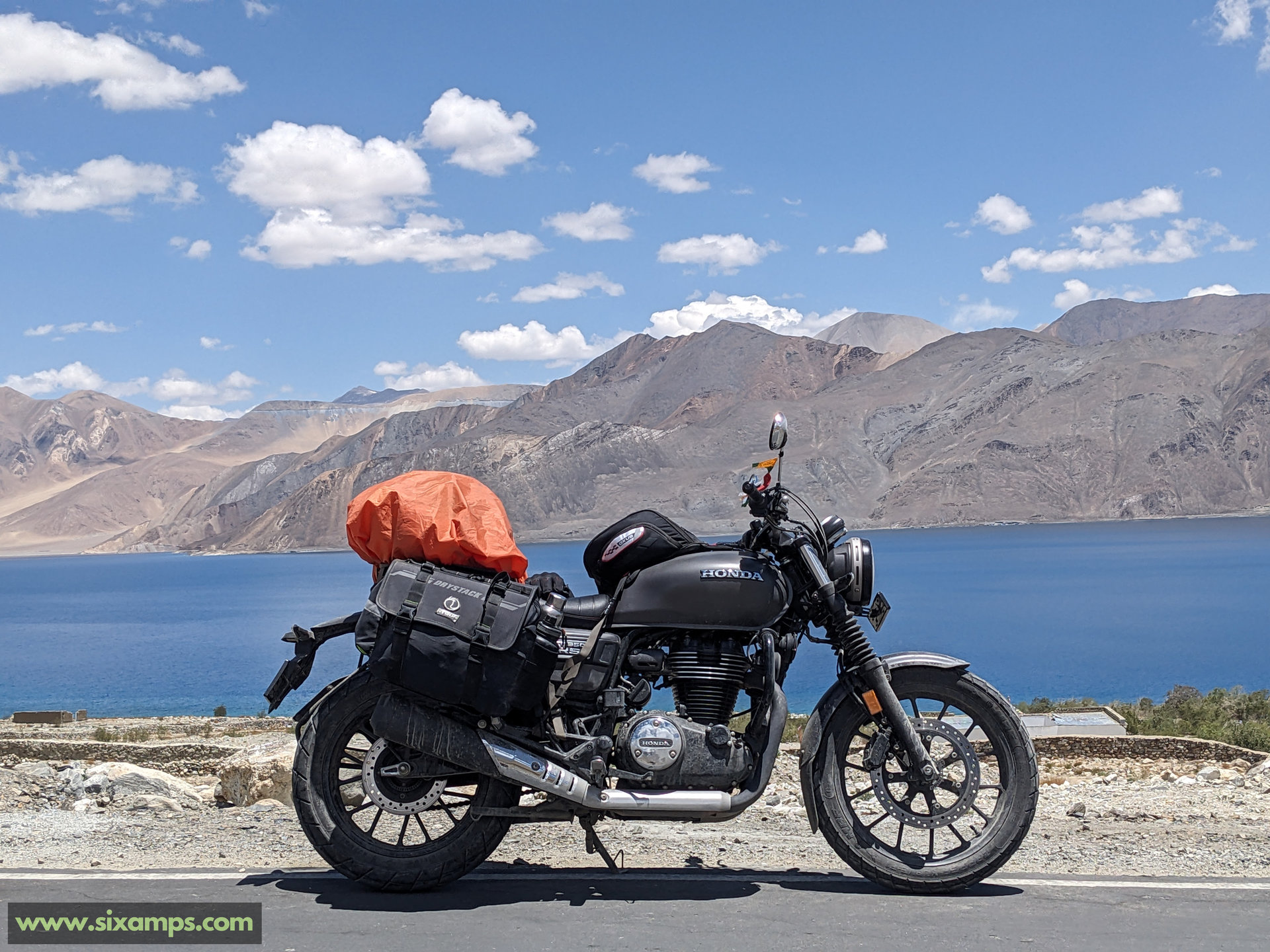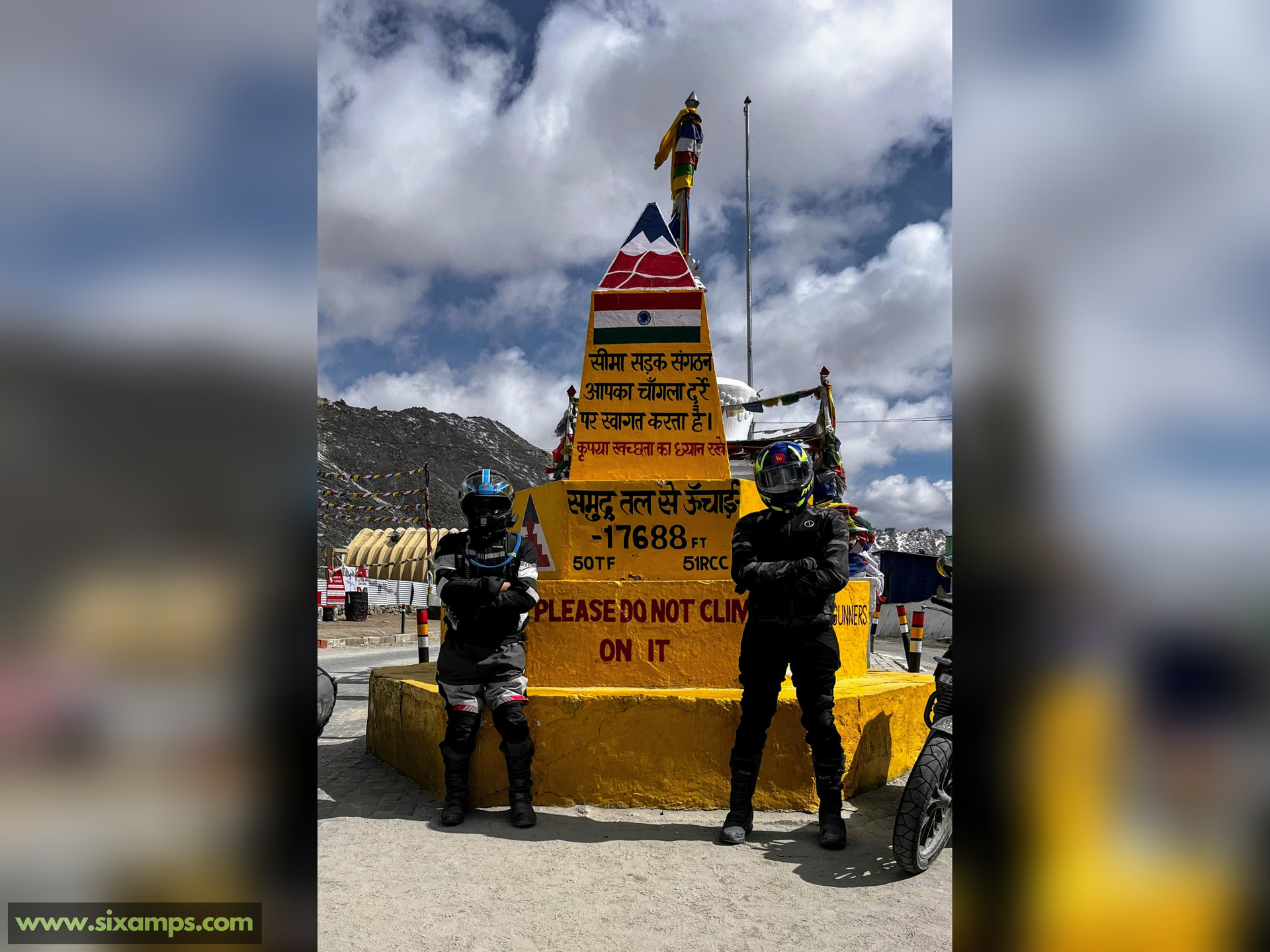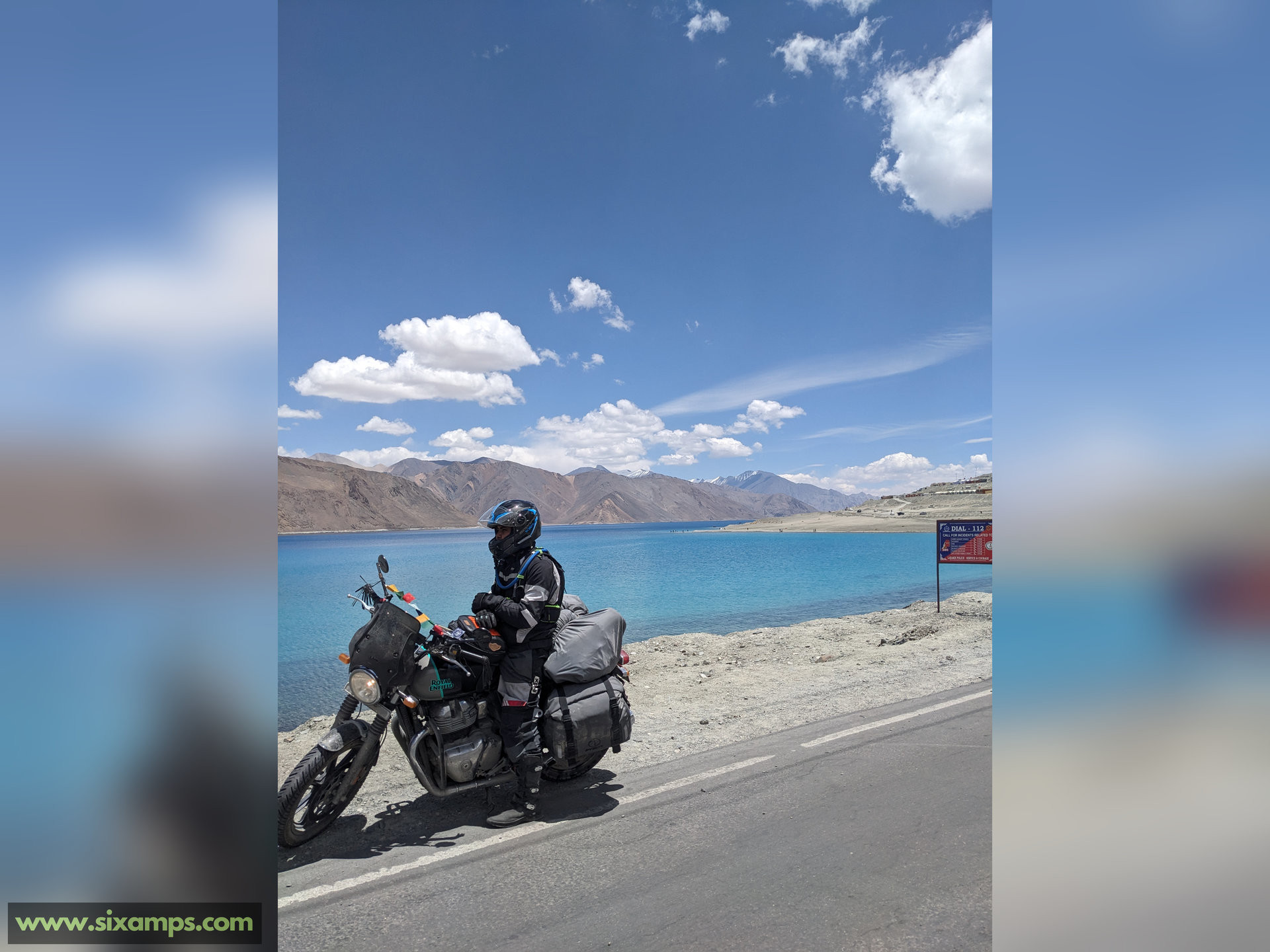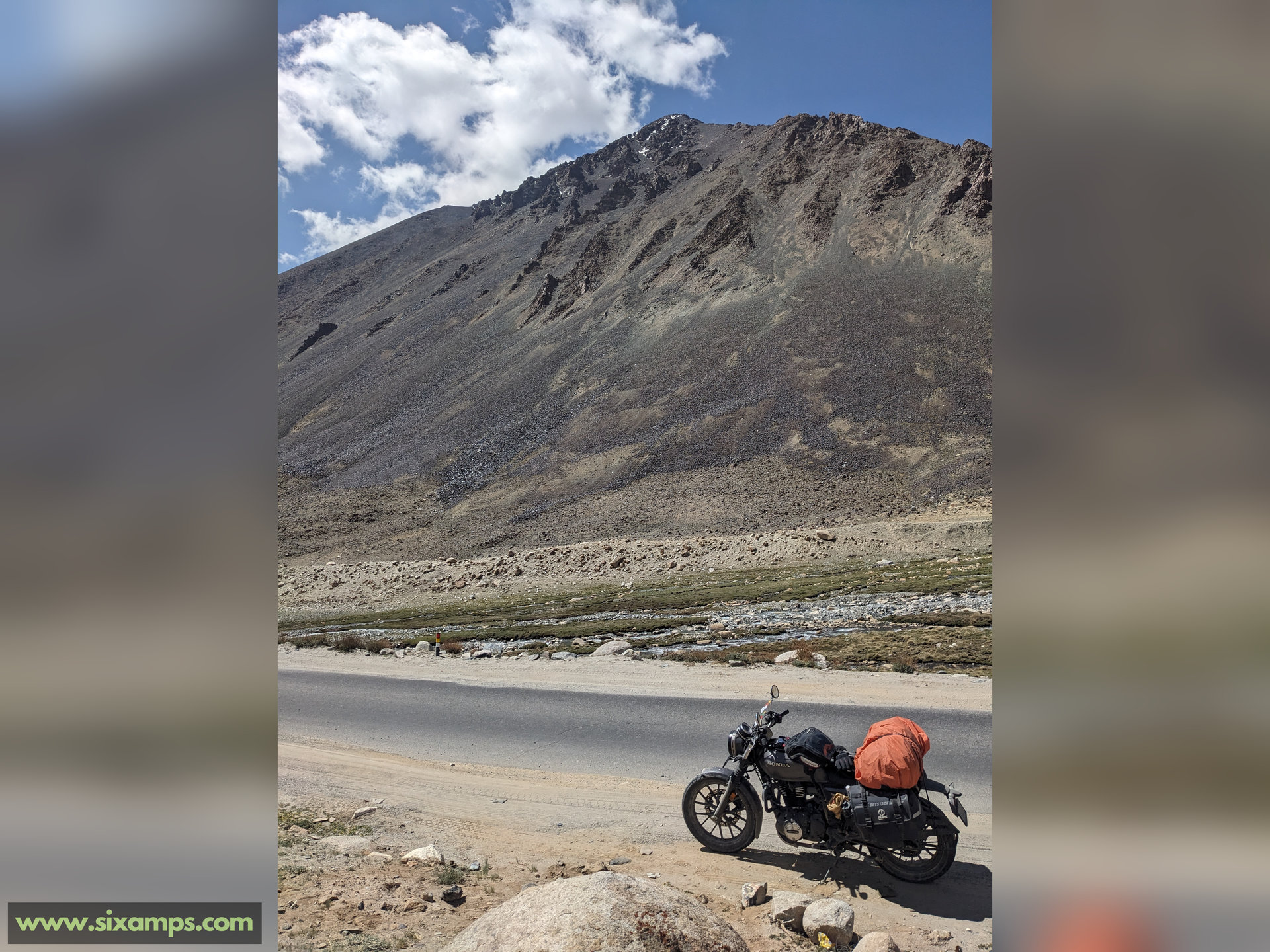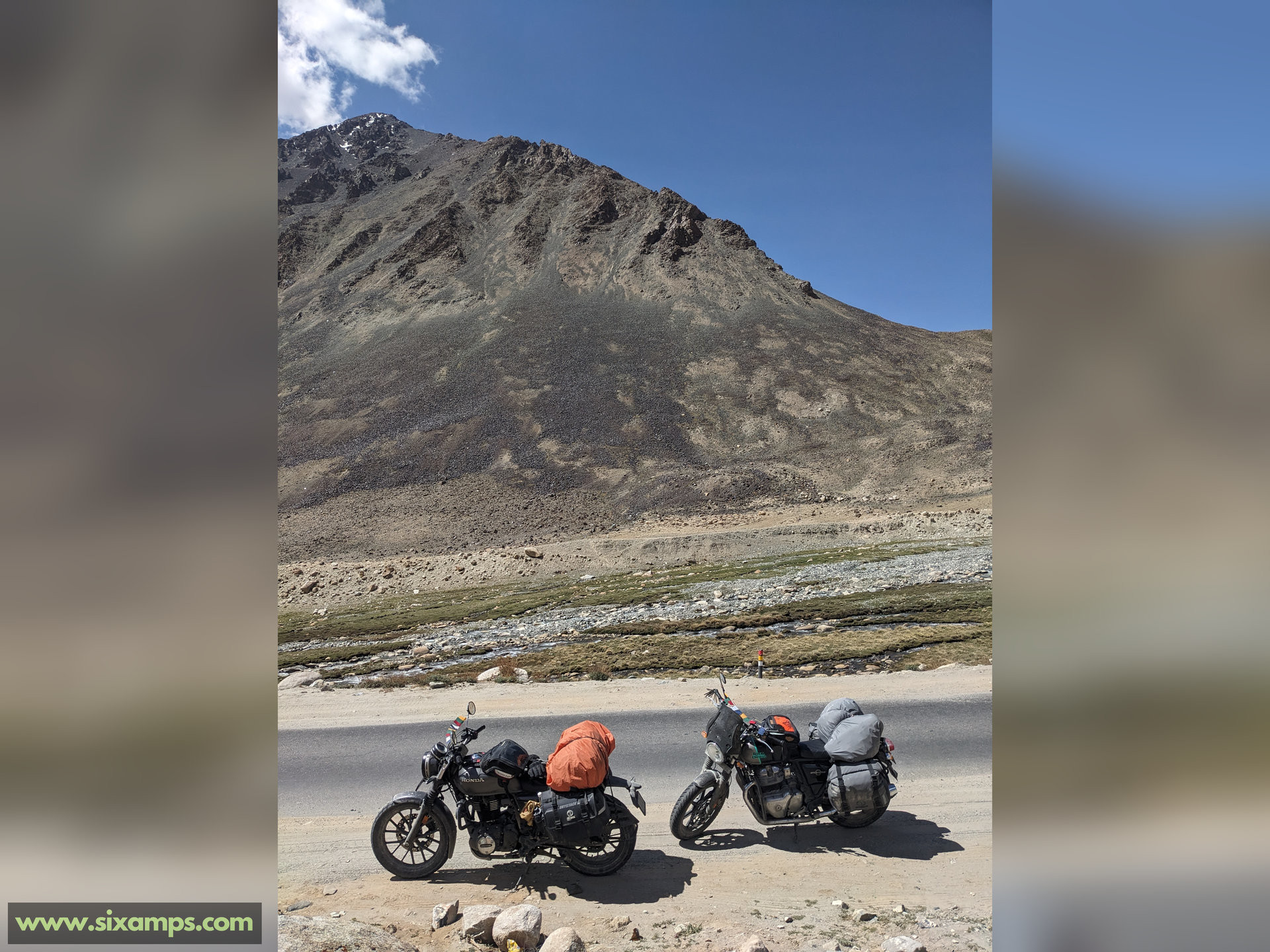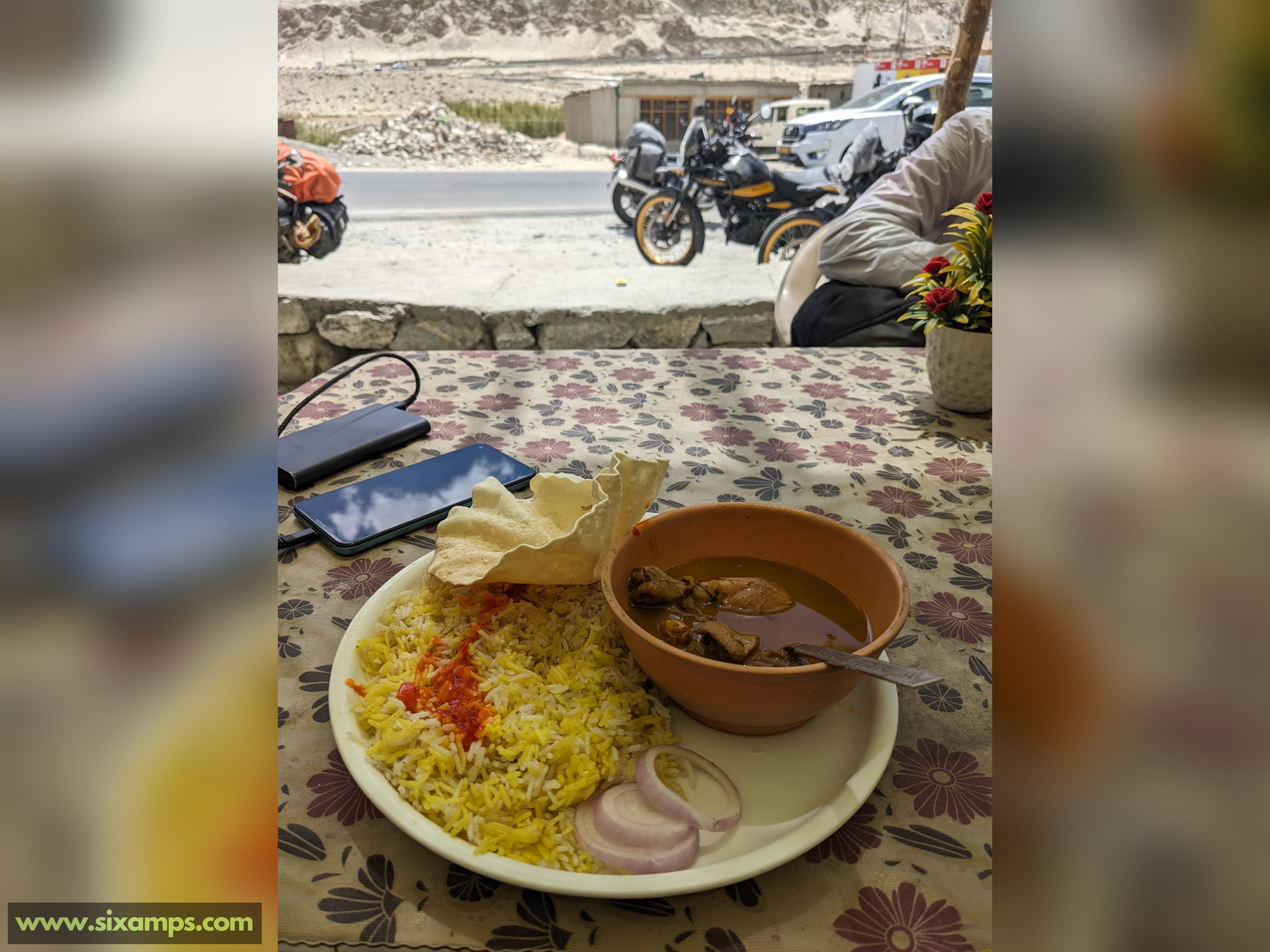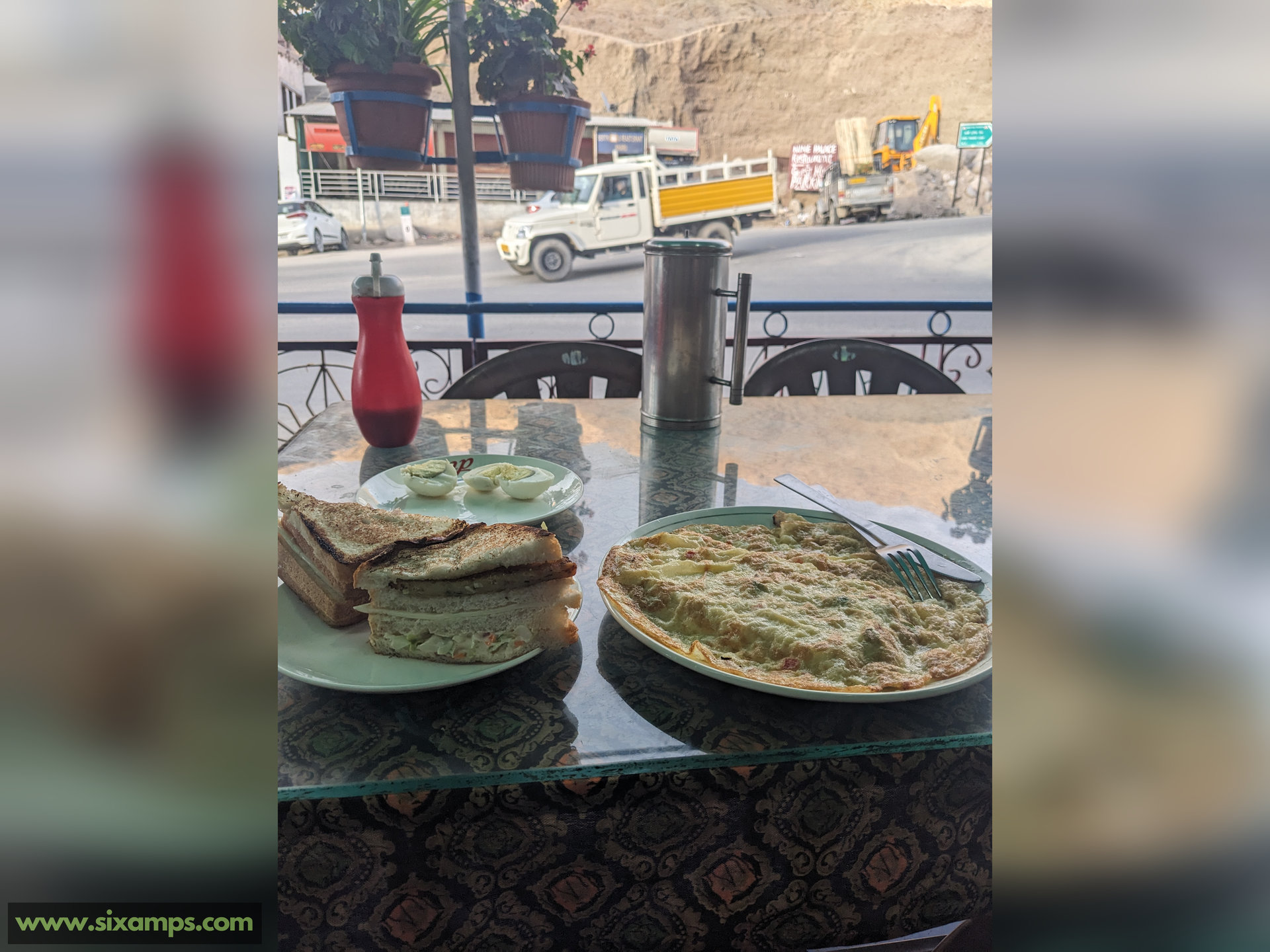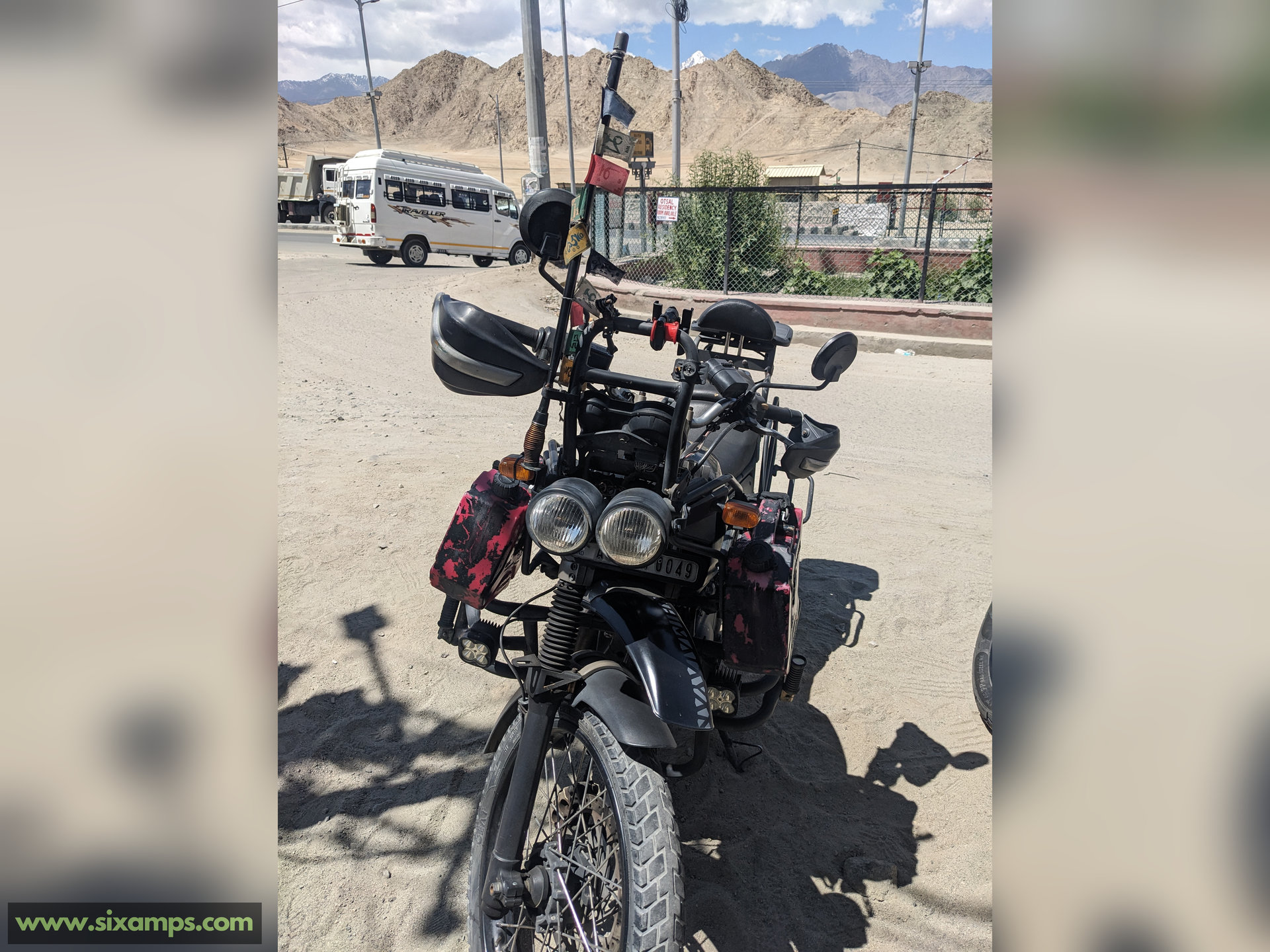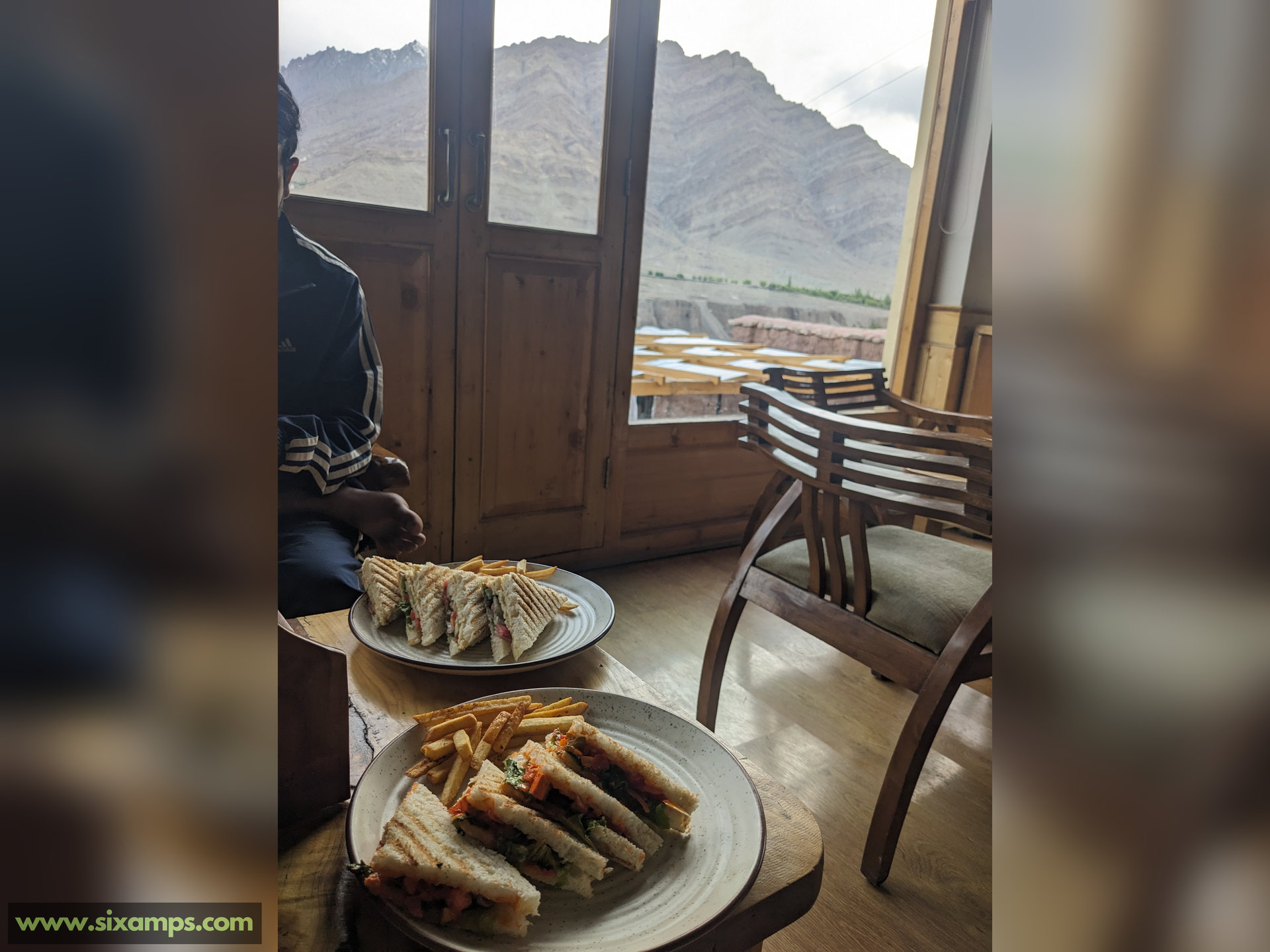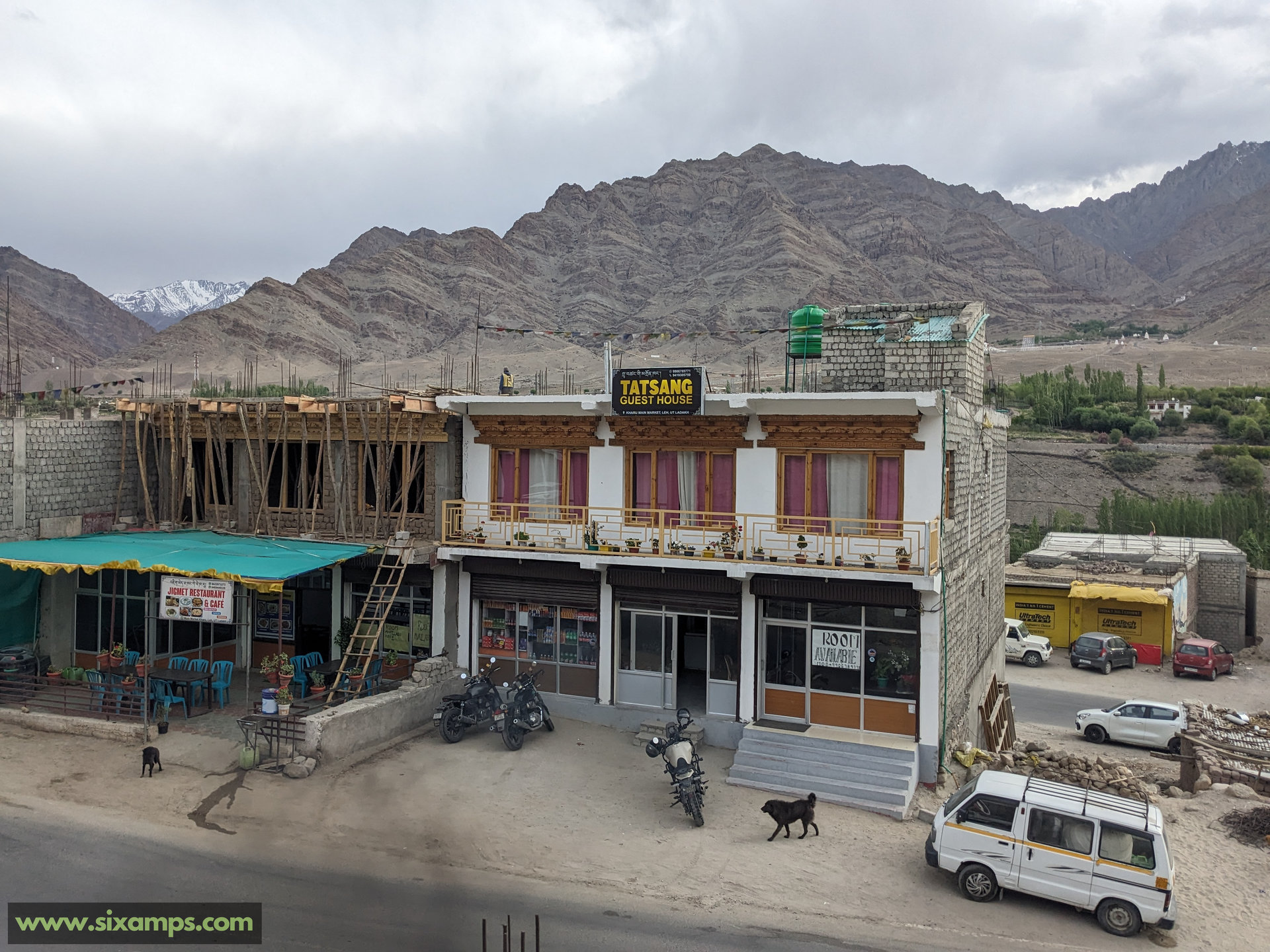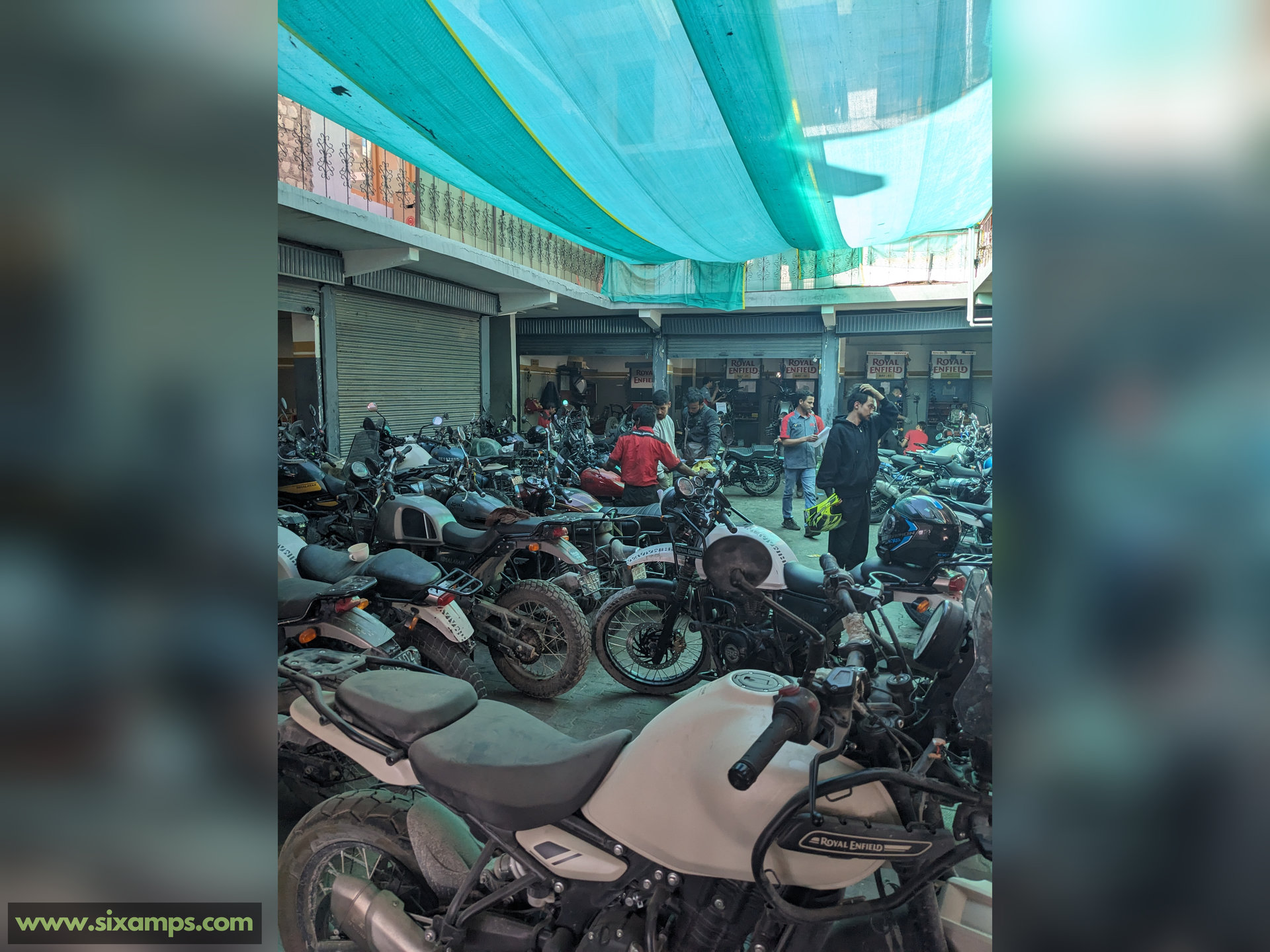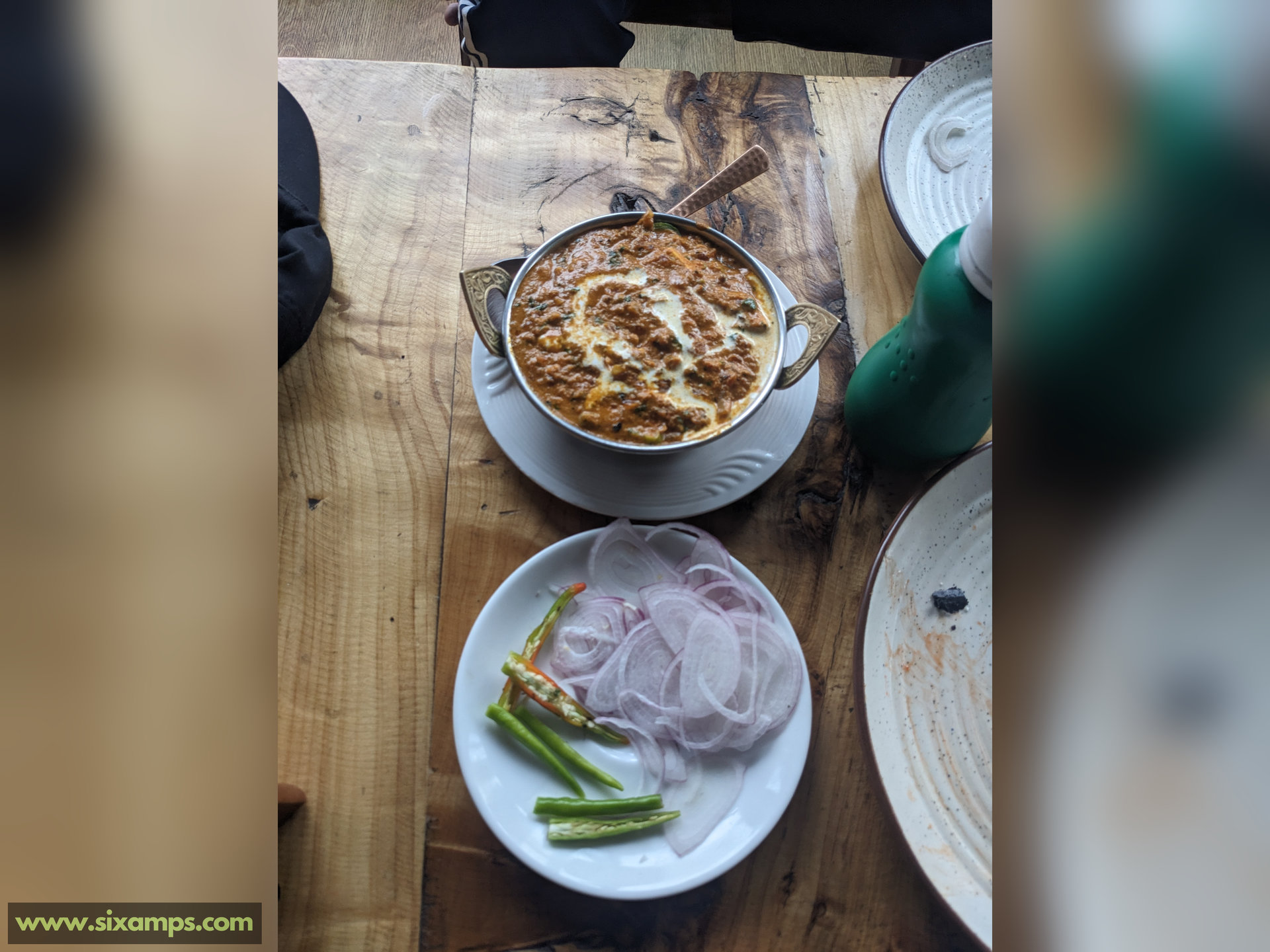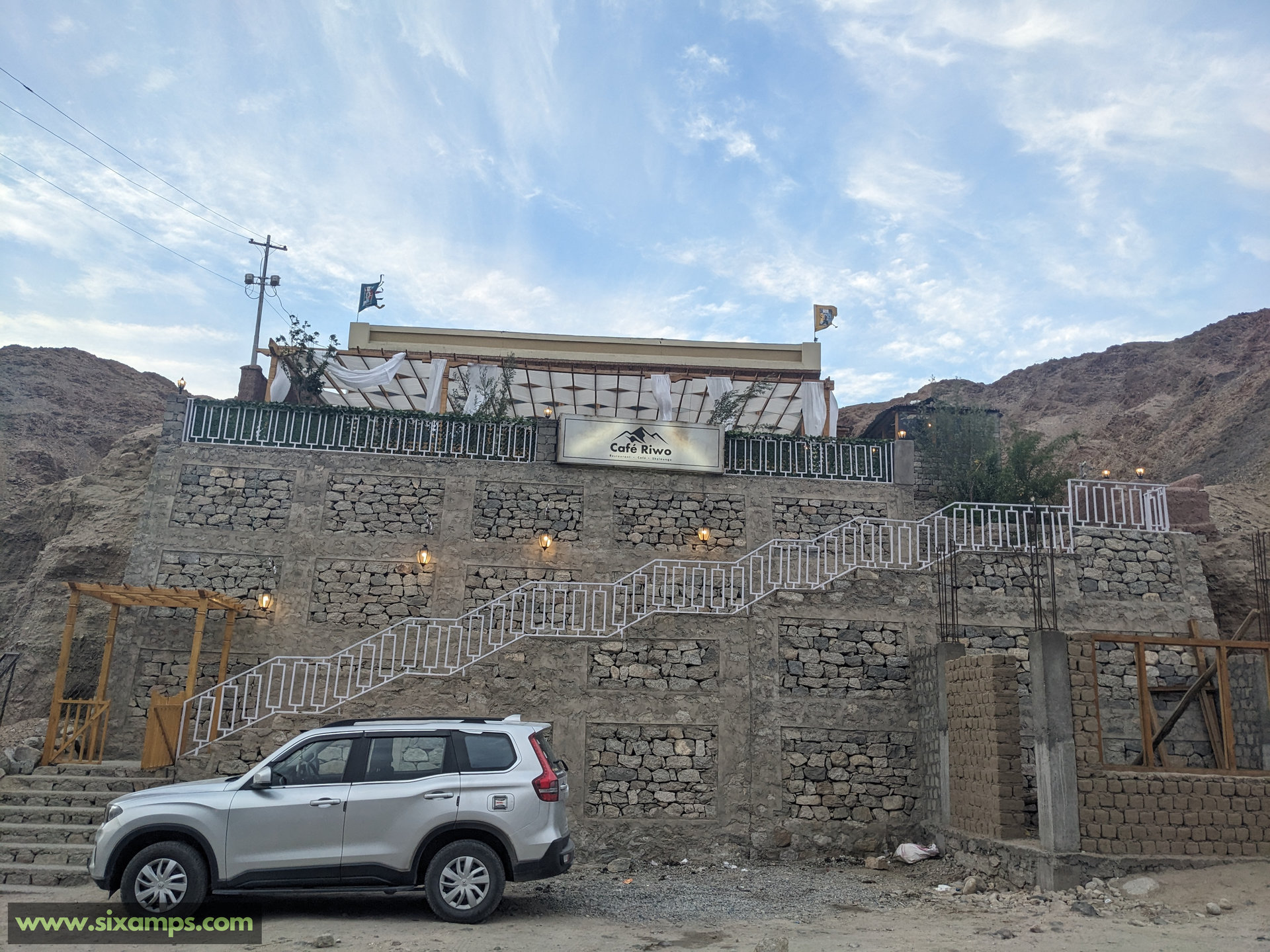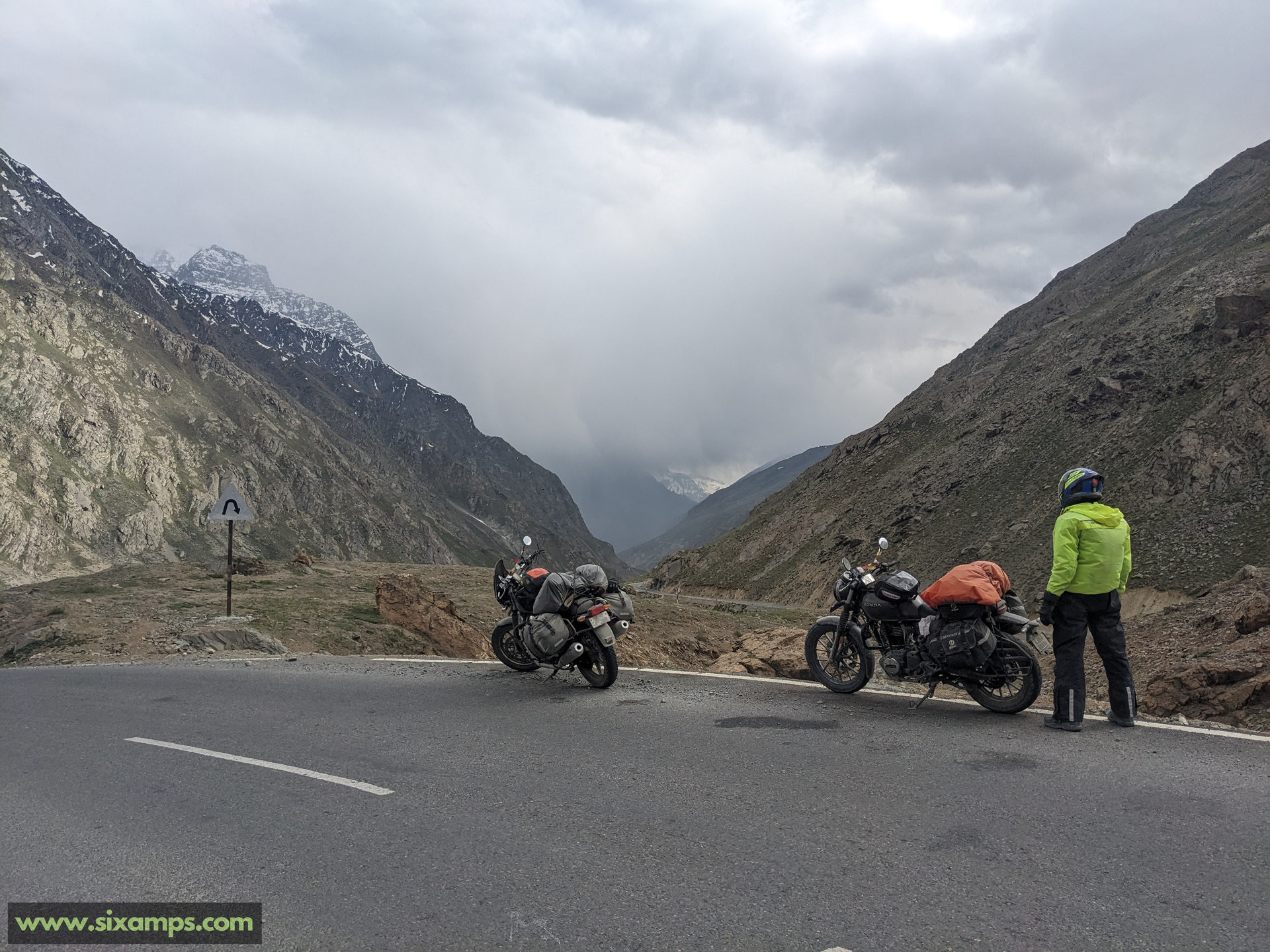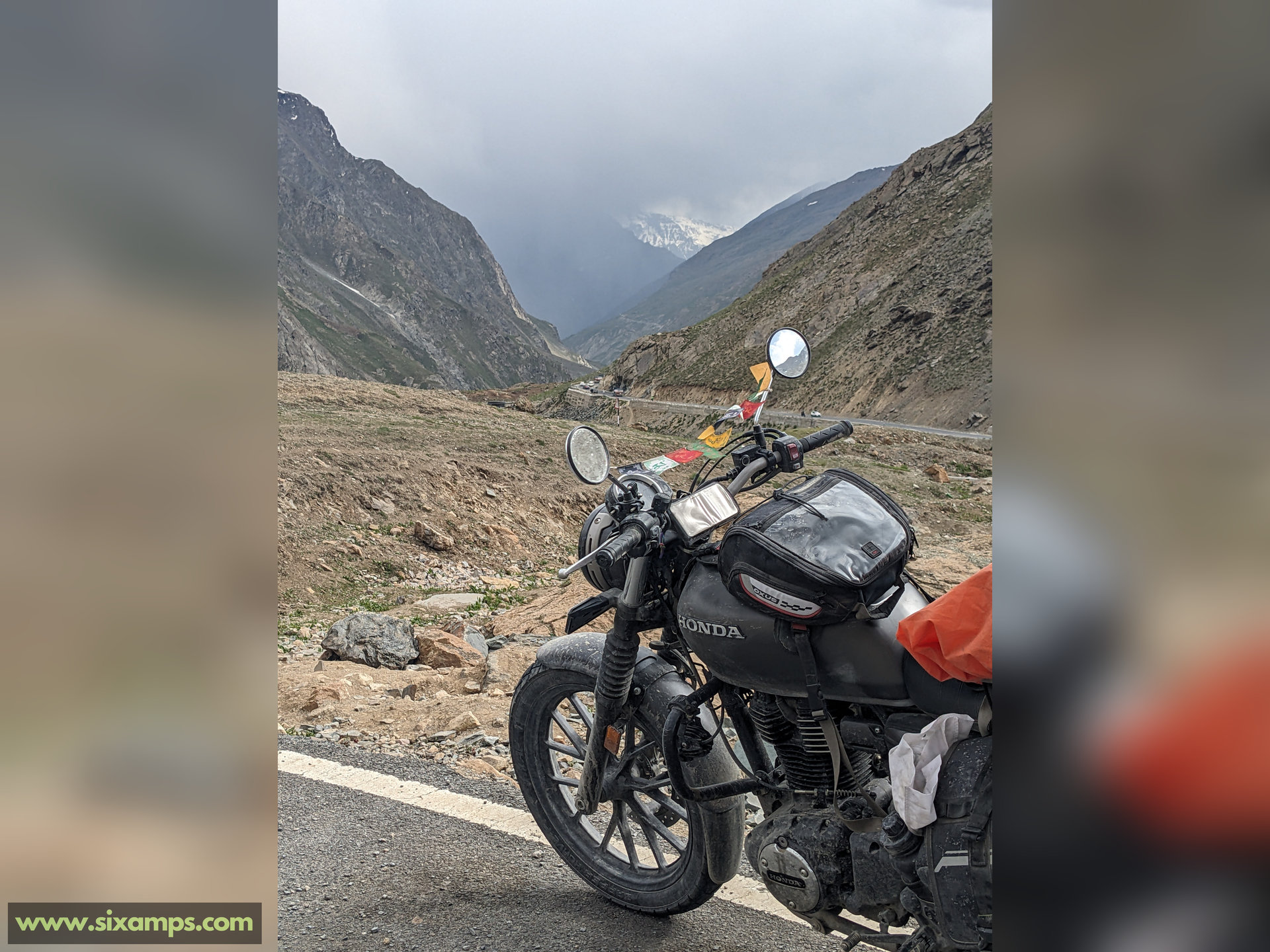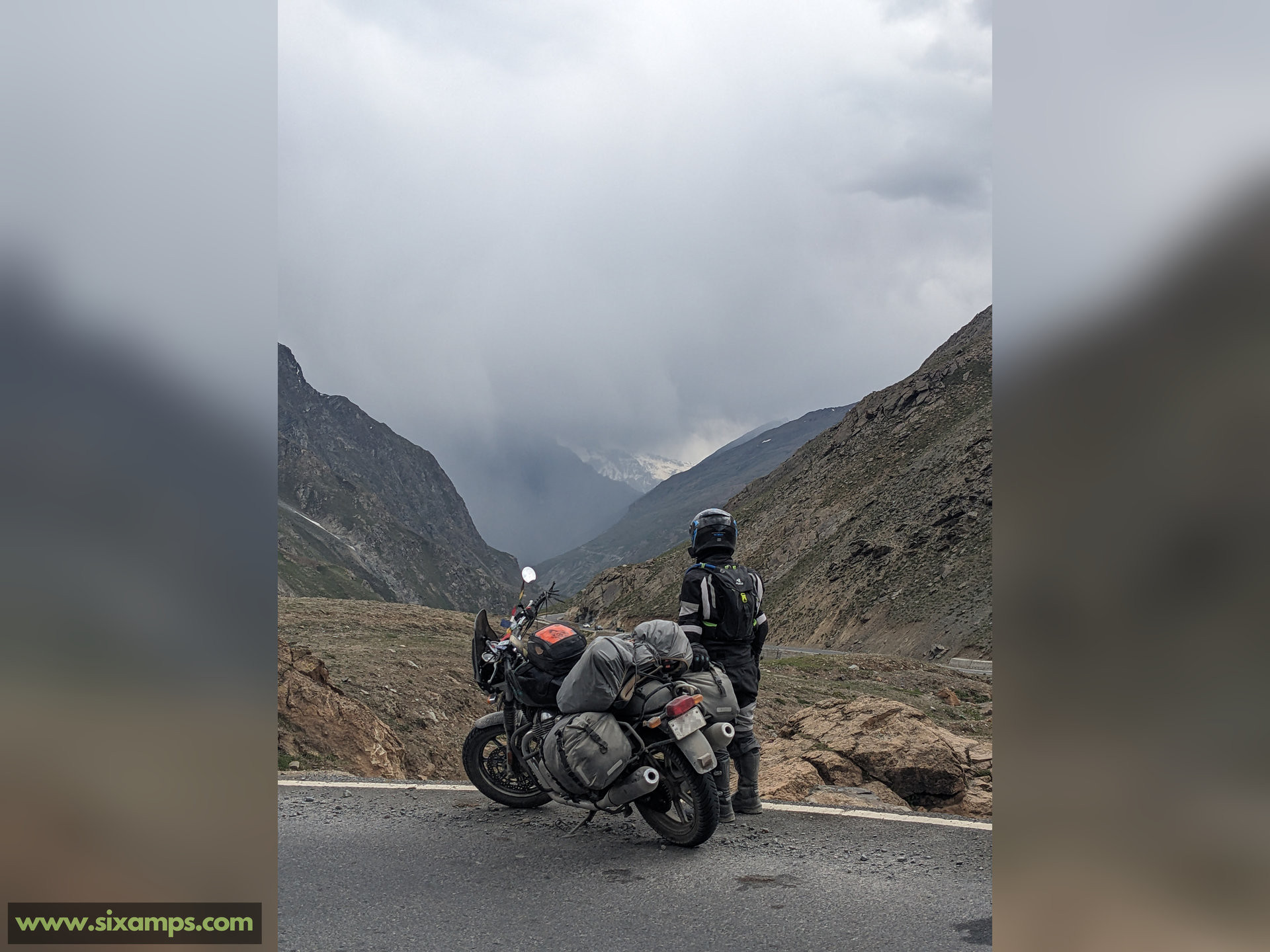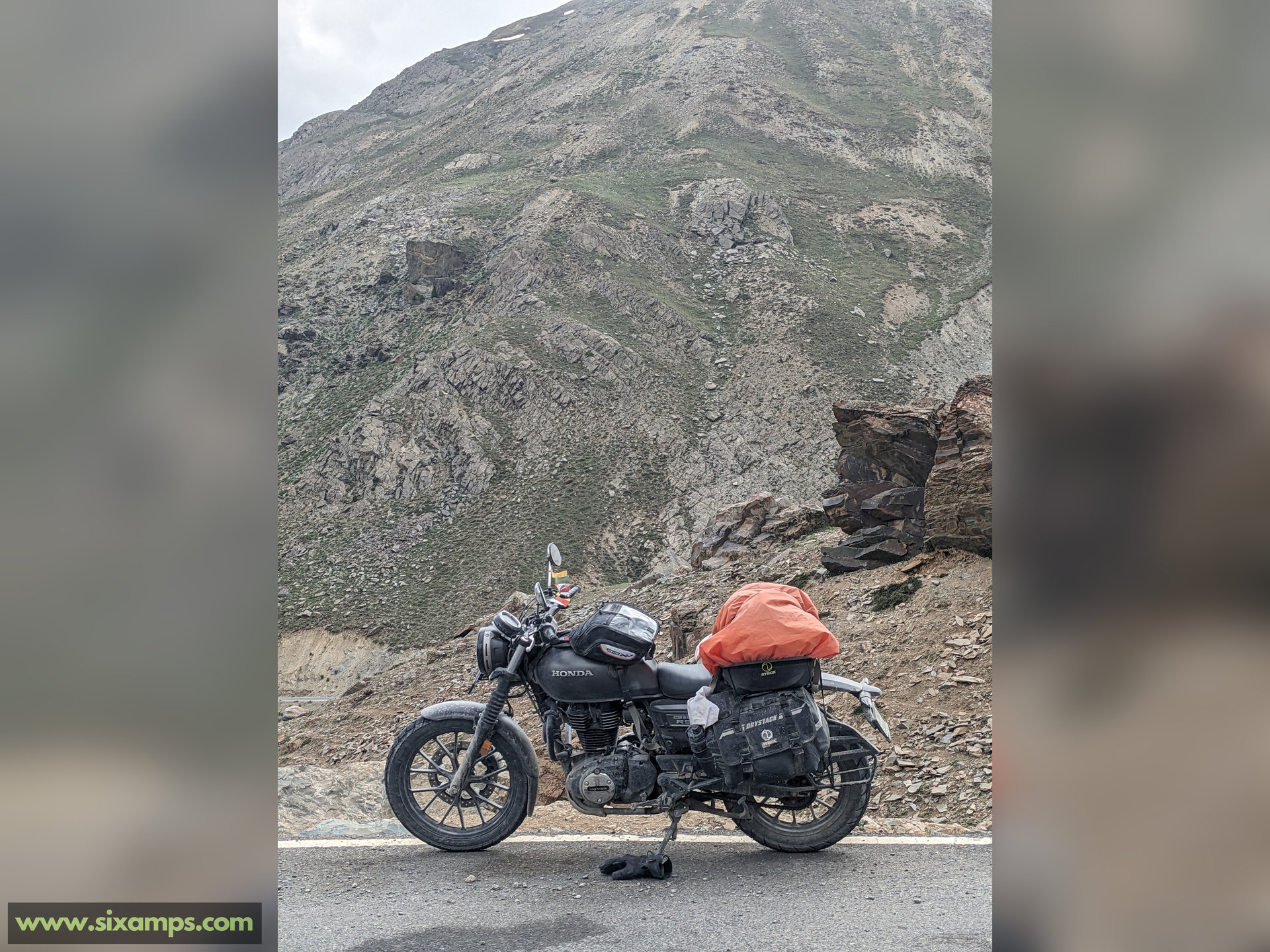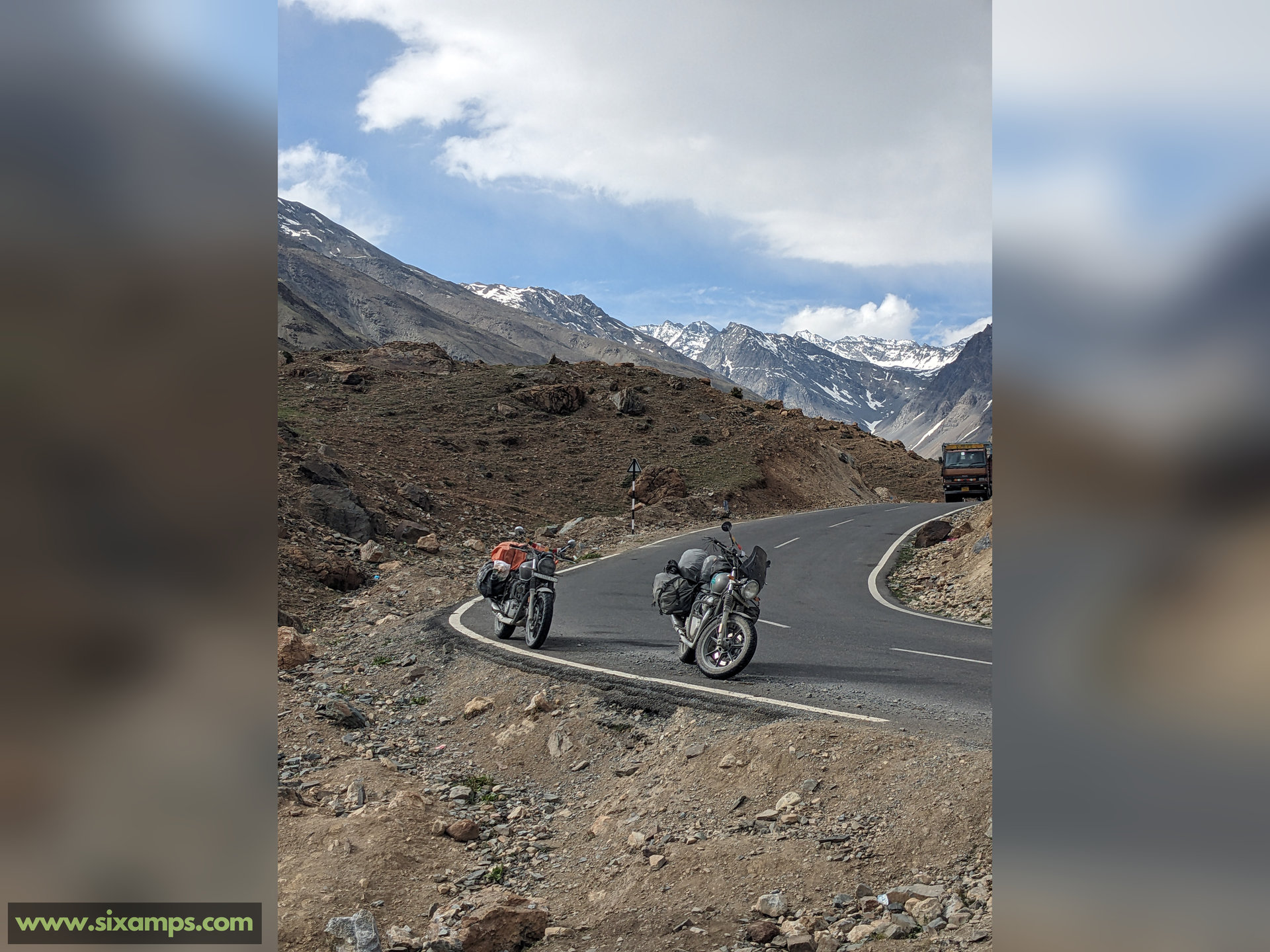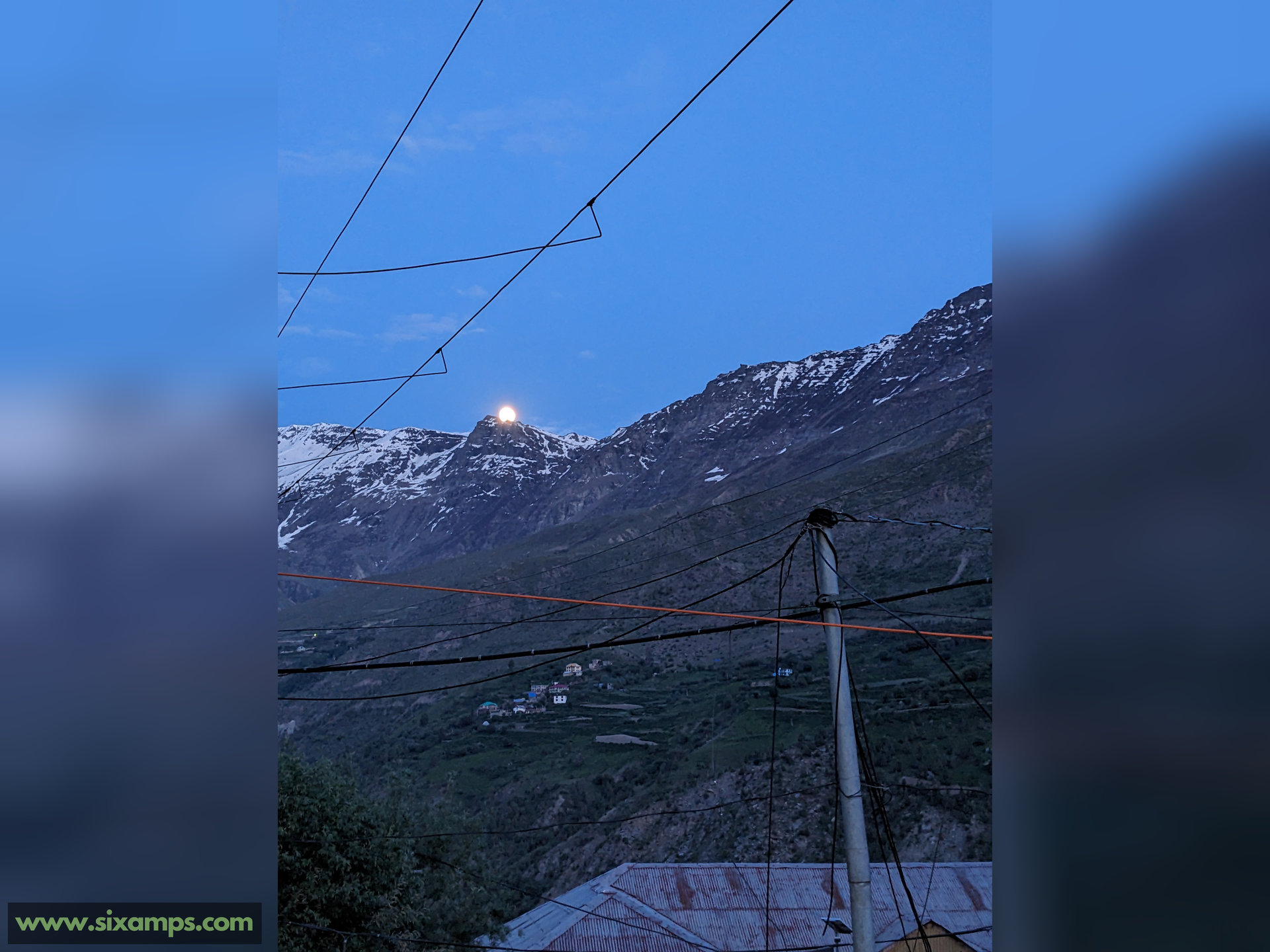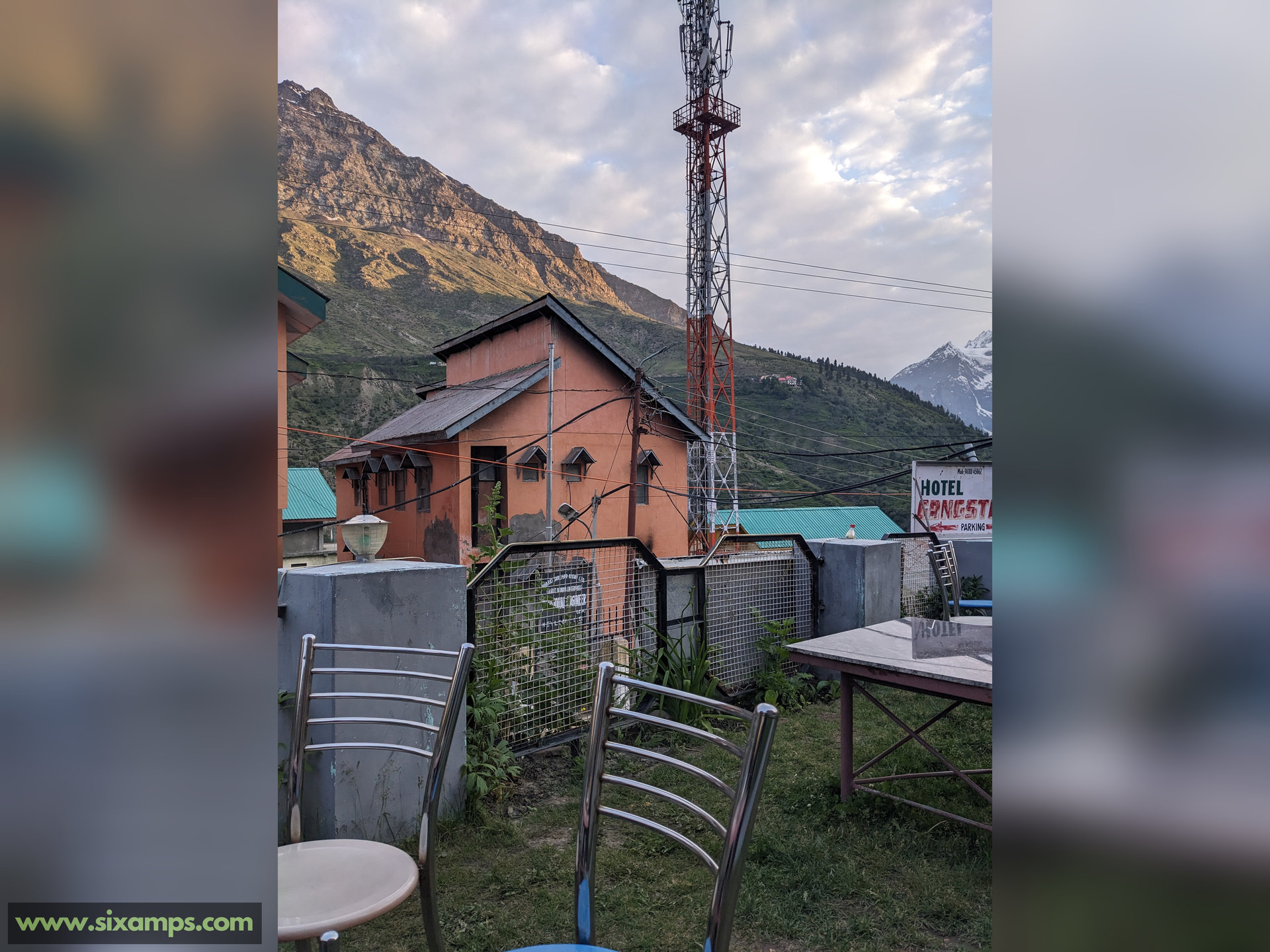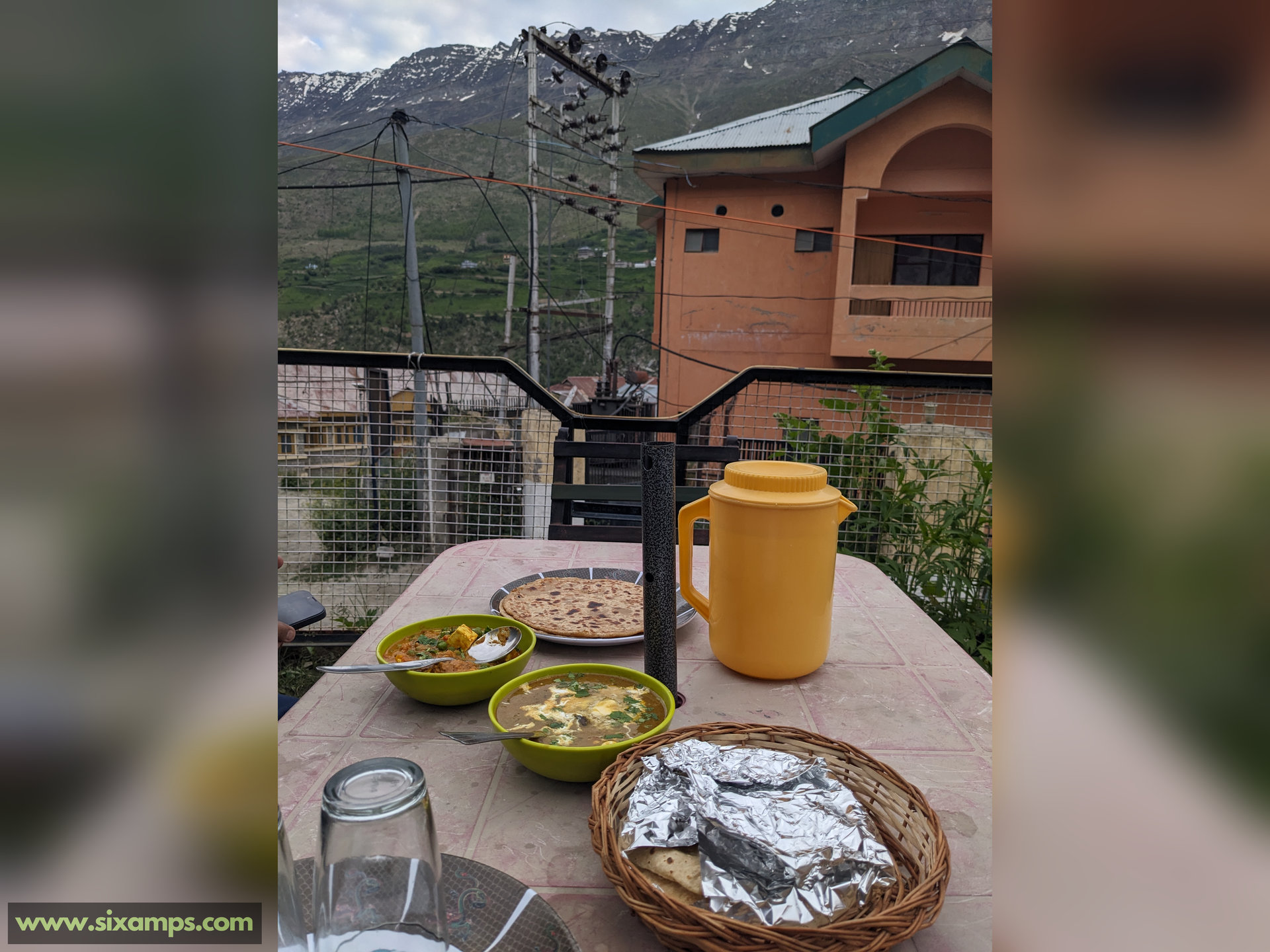The Holy Grail - Ladakh
Riding through Ladakh is almost a rite of passage for bikers in India. Okay that’s a bit dramatic but it is on the bucket list of many riders in India. It was on mine as well. I did it in 2024, a little less than a year after I got my bike. The idea of it took root before I even owned a motorcycle. I think it exists in almost every biker in India. It is a rider’s paradise - demanding but deeply rewarding. The terrain and weather push you, and adapting is part of the journey. It asks for focus and resilience. But if you make it through, the feeling is hard to match.
Here is how my journey went.
Table of Contents
- The Planning Phase
- The Route Dilemma
- Preparations Galore
- Opinions Infinite
- Landscapes of the North
- A day-by-day Account
Day 1. Vadodara to Udaipur
Day 2. Udaipur to Jaipur
Day 3. Jaipur to Chandigarh
Day 4. Chandigarh to Batote
Day 5. Batote to Srinagar
Day 6. Srinagar to Kargil
Day 7. Kargil to Leh
Day 8. Leh
Day 9. Leh to Hunder
Day 10. Hunder to Leh
Day 11. Leh to Pangong Tso and back to Karu
Day 12. Karu to Leh and back to Karu
Day 13. Karu to Keylong
Day 14. Keylong to Chandigarh
Day 15. Chandigarh to Jaipur
Day 16. Jaipur to Udaipur
Day 17. Udaipur to Vadodara - Some Statistics
- Miscellaneous Thoughts
- Epilogue
The Planning Phase
It can be a little overwhelming when you first search about Ladakh on Google. Ladakh has been on the radar of riders for years but it has really blown up in the last few years, thanks to the rise of social media. There is a ton of information out there. And as it turns out, not everything is true. I had to cross-check everything. I had to do a LOT of research. My first thought was to go through one of the many travel groups that organise bike rides. It was an unknown land and I did not have enough experience with mountains or fixing my own bike. While I don’t prefer riding in big groups, it would be much safer, especially for my first time visiting Ladakh. I had decided to go with an experienced group this time and in 2025 I would venture out on my own.
Then I met up with Nishant, a fellow rider who I met through Instagram. He had been to Ladakh several times. He assured me that it was not necessary to go with a travel group. Ladakh had been made a lot more accessible with the recent boom in tourism. He helped me understand the map of Ladakh and pointed me to some useful resources and websites. I had a talk with my friend Divyanshu, who would be joining me for the ride. We both always wanted to ride on our own. With this new information and a little more confidence, we decided we would do this by ourselves.
The Route Dilemma
The next step was to decide our route and stops. There are two ways to reach Leh. The most direct way is to ride on the Manali-Leh highway. But you can also go through Kashmir via Srinagar. Divyanshu and I planned to meet up in Chandigarh and proceed from there. From Chandigarh, we would ride through Patnitop, Srinagar, and Kargil to reach Leh. Then explore the Nubra Valley, Pangong Tso, Hanle and come back to Chandigarh via Manali. This way we could complete the entire circuit and ride through unique roads everyday. One more reason to ride through Srinagar was that the increase in altitude would be gradual, giving us more time to acclimatise. If you go through Manali, you would need to go through some high altitude passes right at the start of the trip which would increase the chances of AMS - Acute Mountain Sickness.
We had booked a few hotels and decided to find homestays for the other places. We were also planning to camp for 2 or 3 days if possible. We wanted to keep the plan as open as possible to be able to adapt better. It turned out to be a good idea since we were unable to camp and we had to skip Hanle due to some issues with my friend’s bike and fuel availability. The plan was set. Next, it was time for preparation.
This is a rough outline of the route I took.
Vadodara - Udaipur - Jaipur - Chandigarh - Batote - Srinagar - Kargil - Leh - Hunder - Leh - Pangong Tso - Karu - Keylong - Chandigarh - Jaipur - Udaipur - Vadodara
Preparations Galore
The preparation for this ride started months in advance. Going to Ladakh for the first time is a bit overwhelming, especially if you’re doing it on your own. We would encounter all 3 seasons along the way so we had to be prepared. We also needed to carry some spare parts for our motorcycles. I made a system specifically for packing luggage for motorcycle tours. It is designed in a way that things are trackable and easily accessible. It has a list of all the things I would need to carry for long tours like this. It’s a spreadsheet and I’m working on making a guide on how to use it to pack better. I will link it here once I’m done.
Barring snowfall, I literally experienced all kinds of weather. I rode through rain at Zoji La. I rode along sand dunes in the heat of Hunder. I rode through water crossings where snow had melted. While passing through the More Plains, I saw a small dust devil at the base of a hill not that far off from the road. I even rode through small patches of snow at some high passes. I rode through gravel and sand and water all mixed up. I rode through the smoothest roads of my life and through some patches of which had no roads at all. The weather has a profound effect on the difficulty of the ride.
The weather is unpredictable. And it is especially true in the mountains. The clear skies can make way for a storm in just a few minutes. The only thing you can do is, be well prepared and stay positive. When everything goes south, if you stay calm and focus on the task at hand, things seem doable.
Opinions Infinite
Over the span of a few months, I had researched a lot about Ladakh. And what did I get out of it? A ton of conflicting information. Some people say Ladakh is easy. Some say do not step foot if you don’t have a decade of experience riding motorcycles. Some say Ladakh has the best roads they have ever seen in their lives. Some say there are no roads. Fuel availability was another point of contention. Some websites say you need permits. Some say that law has been abolished. Whether they’re still called permits or not, I did not know. I had read so many contradictory accounts that I was even more confused. I tried to understand all of it the best I could.
Now that I have completed my journey, I can shed some light on it. The gist of it is, everyone is correct to some extent. The roads are great in some places and nonexistent in other. You might get open fuel but you also might not. The weather is unpredictable. Some stretches are easy and some are hard. Some roads are hard to traverse, some are easy. I have a theory why everyone has different opinions. It is because people are inherently different and unique. They have different points of reference. They have different expectations. They have different machines. Some are on adventure bikes, some are on classic roadsters and some are in cars. The weather and the road conditions vary and affect everyone differently. Their life experiences, mindsets and expectations, all factor into what they’re feeling in the moment. A stretch of an off road trail might be the best thing ever to someone who is looking for adventure and the same path might be a nightmare to someone on a classic roadster who was expecting smooth tarmac. No two riders are the same. No two riders will have the same opinion. There is also a difference in the way people describe things. So almost everyone is correct and incorrect in their own way.
Another point of consideration is that people have visited Ladakh at different times. The road conditions are ever changing. Some who had visited a decade ago will give their account of the roads but that might not be true today. The Border Roads Organisation (BRO) is always working towards building new and better roads so the conditions you see one day might be completely different in a month. And this is true more than ever now, with the boom in tourism.
Try to know about the current conditions from locals and travellers that you meet along the way. But know that it still might be incorrect. I think the best one can do is look at the latest available information, verify it from multiple sources, ride and deal with things as they happen.
Landscapes of the North
The landscape changes quick in the north. It started with the heat in Jammu. We crossed some hot mountains before Patnitop. Then we were in Batote, a hill station which was covered in tall green trees. Then we crossed some more dry mountains with streaks of green. As we crossed some tunnels and reached Srinagar, meadows started popping up with snow capped peaks in the distance. Then came Zoji La. Tall green mountains with streaks of white. The rain made the view even better. Crossing Zoji La, we were in Ladakh. From here it was all beige mountains with snow at the mountain tops. Ladakh being a cold desert does not have a lot of vegetation. A lot of Ladakh looks similar. Lamayuru was a little different with sharp rocks that reminded me of bismuth crystals. From here to Nubra was more of the same. In Hunder we saw sand dunes with streams flowing close by and tall mountains not far from our reach. This was something unique. Then came Pangong, with gorgeous blue waters as far as the eye can see. Next, crossing a few more beige mountains, there were the More Plains. An incredible sight, with long sweeping curves, plains on both sides and mountains not far away. Then came Baralach La, where we rode through walls of snow, several feet in height. As we came down, the beige turned to green. More and more green mountains appeared still with long streaks of white. As we came further down, the mountains started to be covered with tall green trees. As we entered Himachal, we were surrounded by lush green mountains with streaks of snow. Jispa was especially beautiful. It is a small town, right on the banks of the Bhag river with the river flowing on one side and mountains on the other side. As we crossed Manali, we were still in the mountains. As we kept coming down, soon the mountains started to thin out and we were back in the flats. We saw some truly amazing and unique landscapes throughout our trip.
A day-by-day Account
Now, let’s get to the actual journey.
Note - I have added some videos I captured to this blog. You can open them in YouTube and check their descriptions to find timestamps for easier viewing.
Day 1. Vadodara to Udaipur | 2024.06.08
I started early at around 6 am and half an hour later, it started raining. I was riding beside the Narmada Canal so there was literally no place to hide. I kept riding and got soaked but it wasn’t too bad as it was only for 15 minutes or so. It dried off on its own and I was on my way. The road along the canal is gorgeous, with trees on both sides as far as the eye can see. The sunrise looked amazing. I eventually merged on to the national highway. It was smooth sailing from here on. I reached Udaipur at around 11 am, changed and went for lunch to Millets of Mewar. They changed their location from the last time I was here, circa 2018. I had dal bati and churma made of millet(bajra). It was really good. Came back to the hostel and slept for a bit. In the evening, walked around Lake Pichola and Ambrai Ghat. It rained a little in the evening as well. I came back, ordered some food and called it a night.
Day 2. Udaipur to Jaipur | 2024.06.09
I started a little later than I had planned but it was okay since I got some extra sleep. It’s always nice to be well rested before a long ride. The ride was a little boring at first but then it got fun in the later hours. I think there might be two reasons. For one, I was riding only up to about 80 kmph, which is honestly closer to 70 kmph because speedometers have around a 10% error. Straight empty highways are not fun to ride on. After a few hours, it was getting a little boring. I started to ride a little faster and was going up to 100 kmph. The highway conditions were good, there was little to no traffic and riding a little faster would mean avoiding the blazing sun of Rajasthan in the afternoon. During the later hours, for some reason, I got into this intense focus mode which made riding so much more fun. With the heat intensifying, I had to use my new cooling vest that I got from brrf. It works well in dry sunny environments. Some kids waved at me, always good to see this. In my quest to only fill fuel at Nayara, I was almost out of fuel. I was doing this to test my theory that fuel from multiple pumps reduces power and mileage. I was told this by the mechanic at my service center. I was sceptical about it and as it turns out, I was correct. Over the course of the trip, I filled up my tank from a lot different brands of petrol pumps and I saw no meaningful difference in power or mileage.
I do think my Honda was being dramatic about the remaining range though. Once I switched it off and on again, it showed it could go for a little more distance than it showed before. I am glad that there is a remaining distance counter on my gauge though. It is helpful to have an estimate. I also like that it shows the battery voltage right there on the instrument cluster, which I found out later is a really important metric, especially on newer bikes with no kick starts.
As I was paying for petrol, I noticed a text message from Parivahan about a fine. After I reached my Hotel in Jaipur, I looked into it. I was fined 1000 rupees for going over the speed limit. There was a picture attached as well. It was stated that I was riding at 107 kmph. The screenshot also lists lv:80 kmph and ev:85 kmph, which I assume are speed limits. Although I don’t know why the speed limit for evs would be higher. Anyway, I do remember going fast on some empty stretches of the highway. I thought I’ll pay the fine later but I checked it after coming back home, the website says ‘challan not found’. I have no idea how. Then a month later, I got a message again about the same challan. This time I was able to fid it online and pay. I should have been more careful about the speed limits. I honestly didn’t see a lot of speed limit signs on the road. Anyway I only speed up when I see safe and empty stretches of road ahead with clear visibility.
I vividly remember a few superbikes passing me by at really high speeds. I wonder what fine they would have gotten. I think in some countries, the fine is based on your income or maybe speed. Maybe that’s a good idea. Although it might be difficult to implement it in India based on income since only a small percentage of people pay taxes. But then it also makes sense since they’re more likely to own vehicles that break the speed limit. And fines can always be based on how much faster you’re going than the speed limit. Something to ponder upon.
Day 3. Jaipur to Chandigarh | 2024.06.10
I started at 7 and rode at around 80 kmph for the first few hours. Then, boredom seeped in. It was another day of empty highways. I started riding a little faster in an effort to reach a little earlier and avoid the afternoon sun. The cooling vest came in handy. I had to drench it multiple times as it was drying up in just an hour or two in the scorching sun. Just as I was about to enter Chandigarh, I saw a sign that said “Welcome to Chandigarh - the city beautiful”. This was odd to me as the adjective was after the noun. I later found out that the city was designed by a French man. I know a little bit of Spanish and I know they put the adjective after the noun so maybe the French do it as well. The city reminded me of my time in Gandhinagar which is based on Chandigarh I think. But this city was much bigger, better planned and livelier. My friend, Divyanshu, had already checked into our hotel. He rode in from Uttarakhand. It was great to have company for this trip. In the evening we walked around Chandigarh and made our way to a motorcycle gear store where I bought a pair of waterproof Viaterra Tundra gloves. This turned out to be a great call since we encountered some rain and a lot of cold weather on the trip.
I really liked Chandigarh. It’s a well planned, clean and interesting city. One notable incident was the walk from our hotel to the riding gear store. Almost the entire path was through a public garden. There are many gardens in this city. There are separate lanes for bicycles, pedestrians, motorcycles and emergency vehicles. Everything is laid out pretty well and there are service lanes everywhere with parking spots in front of all complexes.
Day 4. Chandigarh to Batote | 2024.06.11
We started at 6 am and rode around 400 kms to Patnitop, a small hill station around 100 kms further from Jammu. The roads were rough. It was still a highway but since it was mountainous terrain, the road conditions were not as good. We passed through a few tunnels. It was frustrating to see people overtaking in the tunnels by riding im the opposite lane even though it was prohibited. It is really dangerous to ride like that in a tunnel that isn’t designed for it.
We were on the highway to Jammu and then took a right near Dhalta. This is where the ride got really rough. The roads disappeared and we were following a dusty path through the mountains. The hot weather did not help. While passing through these mountainous roads, I noticed a railway bridge cutting across the skyline. I thought it would be so cool so see a Shinkansen(a Japanese Bullet Train) fly through this bridge. Just as I finished this thought, a train came roaring. It looked like one of the newer coaches like the Vande Bharat or something and it ran past the bridge at full speed. It was a cool sight. I wanted to see it go into the mountain through a tunnel and had my eye on it but a few seconds later the train had vanished and I couldn’t find the tunnel as well. A few hours of twisty roads and we were back on the Jammu-Srinagar highway. Soon we made it to the Chenani Tunnel. We had booked a hotel towards the end of the tunnel in an effort ot be closer to Srinagar for the next day’s ride. Turns out we had crossed Patnitop and were in a smaller town called Batote. It was amongst the hills and the views were good but there wasn’t much to explore. There were a few hotels and that was it. The weather got colder and from here on we had to put on our winter clothes. We went up the hills in the evening which was a good ride along a smooth road lined with tall trees. Staying closer to Patnitop is a good idea for next time. I should have done a little more research while booking. Anyway, this was good enough for the night and we were closer to Srinagar so all good. Our prepaid sim cards had stopped working since we had entered Kashmir which was expected. What I did not expect was my postpaid Jio sim card to stop working. We thought we’d get it sorted in Srinagar the next day.
Day 5. Batote to Srinagar | 2024.06.12
We were up early in the morning, ready to start our day in the early hours and get to Srinagar quick. This is when we had our first hiccup of our journey, Divyanshu’s bike refused to start. The starter would just make a clicking noise and not do anything else. I’m pretty sure the starter motor wasn’t moving at all. The lights and the horn were working but it wouldn’t start. It was clear to me that this was some sort of a battery issue. Maybe it didn’t have enough voltage or maybe it wasn’t functioning well because of the cold. It was a great coincidence that we were in the hills and literally on a gradient. I saddled his bike, turned the ignition on, put the bike in the 2nd gear, pulled in the clutch and pushed off down the slope. As I got enough speed, I let go off the clutch but the bike still didn’t start. I wanted to make sure my technique was right so I got on my Honda and tried the same procedure and my bike turned on. So I got on Divyanshu’s Interceptor, tried again and voila, it started. We rolled down the bike to a nearby mechanic. He just looked at it, heard our story and said it’s just a battery issue and maybe it got discharged. He said if we just rode the bike, it would charge the battery and we wouldn’t face the issue again. It was a small town so there wasn’t much else we could do. We thought we’d get going and get the bike fixed in Srinagar.
We were soon on our way to. The landscape was starting to change again. We found ourselves on a flawless highway with spectacular views beside us. We were surrounded by green fields on both sides with snow capped mountains in the distance. Tall trees lined across the fields looked straight out of some anime. This was the most drastic change in scenery by far. One more thing to note was the increase in the presence of army personnel. There was much more security here than I had ever seen. Soon we were made to halt in the outer lane of the highway. It turns out there was an army convoy about to pass. I was standing on the side of the road and noticed the road was lined with tiny white daisies on the side. I’ve seen these wild flowers before near the Narmada Canal close to Vadodara. Always good to see nature flourish.
A few hours later we made it to Srinagar. It was nice and sunny. It took us a while to get to our hotel. The city was bigger than expected and with the tourist season, it was jam packed. We even got a little lost as my phone ran out of battery. A little bit of asking around and we made it to Habak, where we would spend the night. We freshened up and went out for dinner to a cafe right next to our hotel. It was called ‘Cafe Central Perk’ and it was a friends(the tv show) themed cafe. The food there was excellent. We ventured out to get out sim card situation resolved and get our bikes checked. We tried turning my friend’s bike on using the electric starter and it turned on. We tried it multiple times it worked every time. We thought the problem must have been the cold weather in the morning and not with the battery charged it was working like it should. We still wanted to get it checked at the service center and I wanted to change the oil in my Honda. We got on our bikes and headed to the Honda dealer first. On our way we found an Airtel store and bought a sim card. It started working in the next 10 minutes. Since there was no Honda Bigwing in the city, I asked to the one in Jammu and he directed me to the Honda dealer in Srinagar. The experience here was not great. They refused to change the oil in my motorcycle even though it was still several hours to closing. An oil change barely takes 10 minutes. I asked them to give me the oil so I can get it changed myself but then they said they didn’t have any full synthetic oil that my bike uses. It was a frustrating experience. There was so much traffic in the city. Just getting here we were already tired. I decided to let the oil be and deal with it later. We then searched for the Royal Enfield Service Center. It was far away and getting there meant more of the city’s traffic. We met a few guys near the Honda service center who guided us to another mechanic who was closer. We tried to make it there but got stuck in traffic again. It was getting a little late so we decided to skip it and get back to the hotel. The Interceptor was starting like it should so we decided to skip the mechanic. I later got my bike checked at a local mechanic and he said the oil was good enough. The kid didn’t even charge me anything for checking the oil saying “aap mehmaan hai” which means you are our guest. Warm gestures like these always make us travellers feel welcome.
The weather in Srinagar was really unpredictable. It was bright and sunny in the day and in the evening the wind was in full force and it started to rain. I think beyond Srinagar, the weather was unpredictable everywhere.
Day 6. Srinagar to Kargil | 2025.06.13
Come next morning, we were all ready and packed up but the Interceptor refused to start again. We had to get it fixed now. We would be crossing Zoji La today and finding a mechanic on the way would be very difficult if something went wrong. Not to mention if the bike broke down in traffic riding through the high passes, it would add another layer of difficulty. Unlucky for us, the gradient here was not as steep. Both of us, all geared up and bikes loaded, thought to wait a little for the garages to open. We found a mechanic on Google Maps and he agreed to check out bike. I asked my friend to get on his bike and started pushing. We got up to speed and he let go off the clutch but the bike did not start. We tried and failed a few more times. It was difficult to run in full gear, especially will full height riding shoes. We got the luggage off of his bike and tried again. This time a local man got out of his car and helped us push it. That did it, the bike started. We thanked him and went off on our way to the mechanic.
The garage was still closed when we got there. We called him and he eventually came and opened it up. It was a small garage with a few bikes inside. The guy was experienced with fixing older Royal Enfields but since this was a new twin cylinder bike with tons of electronics, I didn’t know how much that experience would be useful. If it was a battery issue, that’d be good since we always have the option of replacing it. And replacing a battery is relatively simpler than other motorcycle fixes. He took the battery out and checked it. He said the voltage is not enough and we’d have to get it replaced. Divyanshu had recently replaced the battery in his bike a few months ago so it was weird that it had gone bad already. One not so smart thing about the Interceptor is that you need to remove both the side panels and the seat to access the battery and the rubber covers on the leads are solid and barely malleable, making it hard to work with them. We didn’t have the battery card with us so the mechanic and Divyanshu set out to get a new battery while I waited at the garage. Some time later they returned with the new battery, put it in, and the bike was working again. This took a few hours so we were a bit late. We went back to the hotel, mounted out luggage and rode off on our way to the Zoji La.
The change in the landscape was dramatic. We were suddenly in the mountains, climbing and descending for hours. It also started to rain. It wasn’t a storm but more of a light drizzle that would continue all the way through Zoji La. Soon we were in Sonamarg. It was jam packed with tourists but it was a sight to behold. Just by the road there were these green fields going up. And not more than 500 meters away was this huge snow capped mountain gleaming in the sun. I have never seen a sight so grand in my life. I was taken aback by the vastness of this mountain. It was gorgeous. It was also really cold here. With the amount of tourists here, we decided to head on as we still had a lot of ground to cover.
A few hours later we were climbing to Zoji La. Some people refer to it as ‘Zojila Pass’ which is redundant as ‘La’ already means ‘Pass’. The same goes with all the other high passes. This is why the region is called Ladakh. ‘La’ means ‘Mountain Pass’ and ‘Dakh’ means ‘Country’. So Ladakh means ‘the Country of Mountain Passes’ or ‘the Land of High Passes’. Soon we were at the top, located at around 11,500 feet. The views here were mesmerising. And with the rain, it really was something else and unlike what I had ever seen. There was snow at the top, rain coming down, clouds hovering above us, deep valleys and the wind was gushing at a slightly fierce pace. What made this pass different from all the others I would come to ride through was that there were lush green mountains with snow and grasslands around here. From here on, we would enter the cold desert of Ladakh and everything would turn beige. The weather was bad but it could have been worse. Although riding through rain right at the start of the trip helped calm my nerves a little as we were able to traverse this rough terrain with relative ease. It sounds difficult when I describe it now and it kinda was but when you’re in the moment, riding through narrow roads with bad patches on the side of mountains, lined with snow, with rain pouring down, you don’t think how hard it is. You just focus on riding and getting through it. And once you go through it, you feel a sense of accomplishment having done something difficult. I think it’s the same with any difficult task. Nothing is as difficult or as easy as it seems. And you gain confidence not by thinking about it but rather by doing it. Action is the solution.
As we came down Zoji La, the weather started to change but it was still cold. We rode through Drass which is the second coldest inhabited place in the world. Soon, from cloudy with a light drizzle, the weather was now bright and sunny. We made it to Kargil a little while later. We had carried a tent with us in hopes of finding some good camping spots and setting up our own tent for 2 or 3 days throughout the trip but we couldn’t find any good spots in Kargil. And because we had started later than usual, we were already a bit late so we decided to get a hotel room. We freshened up and headed out to the market to buy a new Jio sim card and to get something to eat. We ate at this small cafe called ‘Cafe Juniper’. We had some egg sandwiches which were delicious. We also got the sim card and Divyanshu got some winter wear. Turns out my postpaid Jio sim did not work because I got it converted to postpaid online. The shopkeeper told us only sim cards bought and verified offline work there. We had walked a lot during this and we had walked quick. As we came back to the hotel, I had a slight headache. I feel this might have been because I had not gotten enough rest and walked so much. This might have been a symptom of AMS. Divyanshu’s friend, who is a trained mountaineer had advised us to not take Diamox immediately if we felt any symptoms of AMS. He told us to drink lots of water throughout the trip and take a paracetamol if we felt any symptoms which is what I did. It helped and through the rest of the trip, we did not have any issues with the altitude or breathing. With the lack of oxygen, you can get tired even if you run for 100 meters or just climb a flight of stairs. Although once you get acclimatized, it does get a little better.
Day 7. Kargil to Leh | 2024.06.14
We were up early at started our ride to Leh at 7:30 am. The roads from Kargil to Leh were fantastic. We were surrounded by mountains and the tarmac was flawless. We rode through two high passes: Namika La at 12,100 feet and Fotu La at 13,400 feet. The weather was bright and sunny as well. We had no hiccups on this day and were on our way to Leh. We rode through Lamayuru which is often referred to as the Moonland as it resembles the surface of the moon. The terrain was a little different I think. The rock formations were a bit more angular here and they reminded me of bismuth crystals. Other than that it was pretty similar to all of Ladakh to be honest. A cold desert with beige mountains and snow capped peaks.
While climbing Fotu La, I saw a man pushing his bicycle up the slope. He had a cart attached to his bicycle which had all of his luggage in it. His cart had letters painted on it saying “All India Ride”. I can only imagine how tough a bicycle ride across India must be. Surely must be an adventure though. Looking at the footage, I can now see his name is Parimal Kanji. He travels around the country and promotes tree plantation.
On the way, we saw a biker on the side of the road and he requested us to stop. Turns out his tyre had gone flat. We had a tyre inflator with us and tried to inflate it but it did not work. He said that the intake valve might be problematic. Soon the rest of his party joined us. They were all in cars. They had a more powerful pump and it worked temporarily. There was a puncture guy not far from here so he said he’d get it fixed there. They were headed to an Army camp before Leh where they would be staying. One of them had been in the Army before. There was also this street dog roaming around here who was really friendly. Dogs in general didn’t trouble us. A lot of street dogs in Ladakh had really thick furs. It seems the dogs here might have evolved to adapt to this mountainous terrain.
As we got closer to Leh, the roads were a bit different now. In Lamayuru we were riding along sharp rock formations pretty close to the tarmac and sometimes above our heads. During the last hour or so, it was almost a straight road with some long sweeping curves, plains on both sides and mountains in the distance. It was a fantastic feeling riding here. We saw lots of motorcycle groups on the way. We also took a small detour, to visit the confluence of the Indus and Zanskar rivers called the Sangam point. The river Indus is from where India got its name. Indus is also known as Sindhu in Sanskrit. It was notable how the water of the river Indus was blue and looked clean while the water from Zanskar looked muddy. A few people were rafting here as well.
Soon, we were in Leh. The city felt good. We would be staying here for another day to aid in acclimatization so we could explore a little the next day as well. We made our way to the hostel we had prebooked called ‘Rainbow Hostelier’. The hostel itself was nice but the parking situation wasn’t. We freshened up and were about to leave to get out bikes looked at and we were already stuck behind a slew of cars and bikes. The hostel staff helped clear the jam and we were on our way. I had asked the Bigwing in Jammu where I can get my oil chagned and they had referred me to a Honda dealer in the city. They Royal Enfield service center was on the way as well. Divyanshu felt his bike was having issues climbing gradients so he wanted to get his bike checked there. There was so much rush at the Enfield service center. It was to be expected as the Enfields rule the Himalayas. I do not have concrete numbers but my guess is more than half the bikes you see in Ladakh are RE Himalayans. Not to mention the Classic 350, they’re a common sight as well. While I understand the charm of the Himalayan, being an adventure bike made specifically to tackle this terrain, I never quite got the touring aspect of it. The tubed tyres have been a deal breaker for me. Carrying a spare tube and tools to fix a puncture is too much of a hassle. Not to mention it takes significantly longer than fixing a puncture in tubeless tyres. Anyway, back at the service center, it was so crowded, they couldn’t even check the Interceptor and asked us to come back the next morning. I was meanwhile at the Honda dealer who said they just had one bottle of the fully syntehtic oil where as my bike needs two. Apparently, Bigwing Jammu had not been punctual about sending supplies. I was already close to my service interval so I wanted to get the oil changed as the next opportunity in Chandigarh would definitely be over the service interval. The mechanic there, Arun, checked the engine oil and assured me I twas good to go for another 1000, even 1500 kms. One idea was to get a bottle of new oil and reuse some of the old oil but we decided against it. Since Arun had assured me it was good to go, and the mechanic in Srinagar had said the same, I decided to let the oil be and deal with it later. I did however get my brake pads changed. I had brought them with me from home which was good as the service center only had brake pads for the rear. Honda really needs to work on the service network for these bigger bikes. I was quite satisfied with my bike for now and headed back to the hostel.
The sunrise and sunset timings in Leh, and Ladakh in general, were really something else. It would be bright and sunny starting at like 5 or 6 am and it would remain so until 7 or even 8 pm. This was a lot of daylight. It had been a long day for us. We stayed in for the night, ate some food at the hostel cafe and called it a night.
Day 8. Leh | 2024.06.15
Even though we did not have to ride today, we were up at 7 am. That’s the thing about touring, it fixes your sleep schedule and gets you on a better one. We went back to the Royal Enfield service center. They checked the bike and said there were no issues with the acceleration. I feel the lack of power was was due to the lack of oxygen in the atmosphere up in the high passes. In any case it was a relief to know that the bike was fine. A little decrease in power and mileage is to be expected when riding up in the mountains. I also rode to the Honda service center again and got my chain adjusted as I felt it was a little uneven. We then headed out to explore Leh, starting with the Shanti Stupa. It is situated atop a small hill with great views of the city. We walked around it, read about it on the plaques and took in the views from the top. There is also a small cafe right beside the Stupa where you can have something to eat. I got an order of fried bananas with honey and Divyanshu got something called Sea Buckthorn juice despite the server telling us it would be sour. The fried bananas were fantastic, similar to what you would get in South India and the juice as expected was sour and not for my taste. As we made our way back to the parking lot we noticed a bunch of Himalayans parked there in an orderly fashion. There was a man right behind them who looked like the group leader. We went upto him in an effort to get some more information about our upcoming journey from someone experiened. Coincidently, Hiren was from Gujarat as well. He had been leading tours of Ladakh for years now. This group consisted or Kiwis and Australians. We asked him about fuel availability in Hanle. He said there chance of getting fuel there was 50/50. We didn’t have any provisions to carry any spare fuel so we decided to skip Hanle. We would cover Nubra and Pangong, then head over to the Manali-Leh highway. We fueled up our bikes and came back to the hostel. We parked further out so as to not be parked in by other vehicles. We then headed out on foot to explore the Leh market and to grab some lunch.
The market in Leh is fantastic. It is thoughtfully built, clean, vehicle-free and just a joy to explore. There are shops and stalls for souvenirs, clothes, toys and much more. We went to a place called ‘Lhasa Restaurant’ which serves tibetian food and got a serving of Veg Thukpa and Egg Chowmein. Both of the dishes were delicious and I especially loved the egg chowmein which was served with a side of piping hot garlicky broth. We also bought some souvenirs like fridge magnets and also some tibetian prayer flags for our bikes.
If you’re a biker, you already know what flags I’m talking about here. And if you’re not, still you might have seen these on bikes and cars. They are now widely available online as well. They are widely associated with the Ladakh region and tibetian culture in general. The flags are made up of five colours, representing the five elements of nature. Blue symbolizes the sky, white symbolizes the air, red symbolizes fire, green symbolizes water, and yellow symbolizes earth. There are more interpretations that I found online. I vaguely remember reading something like - when the air runs through the flags, each flap is a prayer for safety. I am not sure which of these explanations are correct but they all seem interesting.
In the evening we headed to the market again and bought a few more things like hoodies, bags and shawls. The market was much livelier in the evening and we had a great time again. A little later we went back to our hostel and got some food at the rooftop cafe. Since it was the weekend, there was a guitarist and a percussionist playing some live music which was very enjoyable. Our two days in Leh had been fantastic but it was time to head out.
Day 9. Leh to Hunder | 2024.06.16
We left from Leh at around 7:30 am. The plan was to ride to Hunder in the Nubra Valley via Khardung La, one of the highest motorable passes in the world. As we left Leh and started to climb our way towards Khardung La, we were stopped and asked about our bikes. This was done by the rental union of Ladakh. Only bikes owned by the riders themselves, by immediate family members or rented in Leh are allowed to go beyond Leh to places like Nubra or Pangong Tso. Since it was early in the morning, it was just us at this check point. The guy asked us for our bikes’ registration but then immediately he said never mind as we would have to dismount and go through all of our luggage to find the documents. It was a safe bet on this part that two people in full riding gear, with Gujarat and Uttarakhand registered bikes, loaded with luggage would be riding their own. We then started the climb towards Khardung La.
I would say the roads are decent, not great. There are patches that are bad but still it was okay. This is one of the most popular passes around Leh so it must be well looked after. There was another checkpoint, this time by the Indian Army at South Pullu. We got down and noted out names in the register. It was really cold here and it would just get colder. They have rest stops with medical faicilities to help people combat AMS. As we inched closer to the top, we were slowly being surrounded by snow. As we climbed, the snow capped peaks started glimmering in the sun. It was getting really cold now. I was well prepared for this as I had already layered up. The only place I felt the cold was in my fingers. I was wearing winter gloves from Viaterra but they were not doing a great job of keeping the cold away near the mountain tops. I think this was because of the cold air hitting my gloves directly. A pair of knuckle guards might solve this. We soon reached Khardung La top. There were a few army men there as well as a few small food stalls. People were getting their pictures clicked with the sign boards. We opted to click one at one of the smaller sign boards since the main one was crowded. We were soon on our way down. With the altitude declining, my fingers eased up and it got more comfortable.
I had an interesting moment as we reached Khardung La top. It is not as difficult as it seems. Don’t get me wrong, it’s not easy. The raods are decent at best, it’s cold and there is a lack of oxygen at the top. But if you get acclimatized properly, take it easy, go slow and focus, it is not that difficult. Just looking at numbers and the hype surrounding it, people have built up a lot of hype around it, especially when it was once the highest motorable pass in the world. Maybe at that moment it might have been more difficult because of the road conditions. Other people might have different opinions and experiences. One point of consideration was, you don’t climb 18,000 feet all at once in a single day. Leh is already situated at well over 11,000 feet. So you only have around 7000 more feet to climb. Same goes for all other mountain passes. As with everything in life, nothing is as easy or as difficult as it seems.
The roads on the way down from Khardung La top were good. On our way down, just before North Pullu, there is a small food stall selling maggi, eggs and tea. We had some Maggi, Bread-Omelette and Kashmiri Kahwa that had some almonds in it. This stall is alone amongst the mountains and is a great place to stop without any crowd. It is quiet and peaceful. The bread omelette was fantastic and the tea was good as well. The bread they used had a mild tinge of sweetness to it. Maybe they used some milk in the batter. Whatever it was, it tasted fantastic. We even saw some bovines grazing near a stream close to the stall. The roads from here to Khardong were again very good. From Khardong to Khalsar, they turned bad. Close to Khalsar there are two roads, one leads to Hunder and the other towards Pangong Tso. Here we met some riders from West Bengal that were asking for alternate directions to Pangong Tso as the regular road was apparently closed. Riders from West Bengal and Maharashtra were the most common out of state riders we met.
From Khalsar to Diskit, the roads were abominable. Almost non-existent. They were just gravel tracks with heaps of stones fallen from the tops. I heard road construction was in progress so that was good. On our way we passed through some places that offer adventure activities like ziplining and atv rides. The stretch from Khalsar to Diskit took us a good hour or two. From Diskit, Hunder is pretty close and the roads are good. We were soon in Hunder.
Hunder is a small village. We made our way to one end of it near the sand dunes, what Hunder is known for. At the end of the town, there are some plains where a small stream flows through. There are sand dunes not far away from here. As Hunder is located in the Nubra Valley, it is surrounded by tall mountains on both sides. It is a beautiful sight. We were again in search of a good spot for camping but it was kinda hot in the afternoon there. We decided to get a room at a homestay nearby called ‘Achan Homestay’. The rooms were clean, simple and affordable. Our experiences at all the homestays throughout this trip were fantastic. We rested for a while and headed towards the dunes in the evening.
The dunes come to life at dusk as the temperature goes down. Nestled between the dunes, the plains hold a ton of activities from archery, shooting, double humped camel rides, atv rides and cultural shows. One thing I disliked was the way they treated the camels. I saw a camel wailing in the distance and no one was attending him. The camels had ropes tied to their nostrils and the handlers used to walk them using those ropes. It was a sad sight. It was not like they were pulling those camels but those ropes but still it must not be comfortable for the animals. There’s also a stall there that offers some refreshments. Sitting beside the water stream, with my feet in the cool water and sipping some hot tea was a good feeling. We tried our hand at archery which is not as easy as it looks but we had some beginner’s luck on our side. We then climbed some dunes and walked around. We threw some rocks aiming at other rocks in the distance, which sounds lame but it’s something I like to do. It was fun.
On the way back to our homestay, we saw flyers plastered on the walls that said there was a local bazaar held nearby called ‘Artisan Bazaar’. It was on the other side of town and it took us around 15 minutes to walk there. The place seemed cool. There were some stalls that sold local handicrafts, soaps, sweaters and such. Women were knitting headbands right there in their shops. There were also some food stalls. We tried a local platter which containes momos, a type of chilla and a local bread called khameer. All of the food was amazing. We also tried some samosas and laphing. The samosas were good but laphing not so much. There was also live music here which is always fun. We then made our way back to out homestay and called it a night.
To be honest, our first impressions of Hunder were not that good. It was hot, and it didn’t seem like there was much to do. It didn’t help that we had ridden through some dreadful roads just before we got there. But as the sun came down, it all turned around. Hunder had been one of the best places we visited throughout the entire trip. The place was chill, we had good food, it was relaxing and we had a lot of fun there. Proving once again, things can turn around anytime.
Since the main route to Pangong was closed we decided to go back to Leh the next day. There was an alternate route that joined the main route a bit ahead but we heard it was a rough ride. The regular route to Pangong is described as bad and this alternate route was even worse we had heard. And since it was just the two of us, we decided to head back to Leh. Another point of consideration was that since Leh - Pangong was another major tourist route, the roads were better and well maintained which turned out to be true.
Day 10. Hunder to Leh | 2024.06.17
We were up at 5:30 am and started our ride at 6:30 am. We knew we had to go through rough roads early today. It was not as bad as we thought. Maybe it was because of the cooler weather but we were through the rough patch and on our way to Khardung La before we knew it. We again stopped at the food stall near North Pullu. There were a lot of people at Khardung La top. And as we descended there was a traffic jam near the Amry check post. There was a long queue of vehicles coming from both sides. People were driving wherever they found some space. With traffic coming from both sides, we were soon in a jam. But as we were on our bikes, we could filter through smaller spaces between cars and buses and make out way through. That is one of the major advantages of riding a bike. Divyanshu and I usually ride close to each other but we got a little separated today due to the traffic. I was ahead and got through the jam to empty roads but decided to go further down as I was feeling the cold in my fingers and they were going a bit numb. As I got lower, the temperature was comfortable again and I waited for Divyanshu to come down. A few minutes later he came and told me the Army had stopped all downhill traffic for some time and he got stuck there. They do this to clear the traffic one side at a time. People ride on both sides of the roads while going up and when there’s oncoming traffic from the other side, they have no way to go and traffic halts. If only people could drive on their own side, this could have been avoided. A lot of people lack basic road and civic sense. I think we need better driving license tests and mandatory classes which teach how to drive on roads, including how to maintain lane discipline. All of this is especially necessary while riding in the mountains where the stakes are much higher.
We reached Leh soon and checked into our Hotel. We had booked a room at ‘Royal Holiday Hotel’ the day before. The rooms were great and there was ample parking space in front of the hotel. We went out to the Leh market again in search of some lunch where we stumbled upon this restaurant serving authentic Tibetian food. They had seating on the floor and the ambience was cozy. The entire restaurant setting was based off of Tibetian culture. We sat down and ordered some food after a bit of help from our waitress and Google. We had ‘Thenthuk’ which is type of hand-pulled noodle dish. We ordered dry versions of that and they were fantastic. The entire experience here was amazing. We then moved on to a cafe called ‘Bodhisattva’ for some desserts. We ordered a slice of apple pie and a chocolate donut. The donut was fantastic but the pie was underwhelming. The stuffing in the pie seems to be too heavy on the fillers rather than apples. We had a great experience in Leh last time and this time it was the same.
We came back to the hotel but immediately went out again to get Divyanshu’s saddle bag repaired. He tore through some of the stitches while riding through the traffic near the Army post when he snagged a side to a bus. We go it mended by a local cobbler. While getting the bag fixed we met some Israeli tourists who were on their way back out of the Ladakh. I asked them about their experience and one of them said, “You guys are living in paradise.” We then got some food at a restaurant and came back to the hotel. We didn’t have any regrets coming back to Leh. We were actually looking forward to it since we had such a blast the last time we were there. It turned out to be a great decision. The ride was good, we had some good food and got relax some more as well.
Day 11. Leh to Pangong Tso and back to Karu | 2024.06.18
We started our ride to Pangong Tso at around 7 am. The climb to Chang La top was a little tough as the roads were narrow but nothing too difficult. One thing to note was that the entrie stretch from Leh to Pangong has fantastic roads. We reached Pangong in around 5 hours.
The first sight of Pangong Tso is a small sliver of blue amongst the mountains. We were soon riding beside it. We passed through Lukung and Spangmik which are small villages on the banks of the Pangong Tso. We continued further in an effort to find a place to stay. We found wooden huts there but they were underwhelming and we were warned to not take those by a friend who said they got pretty cold in the night. We planned to ride towards Merak with was a small village at the south end of the lake. While on the way we stopped for a bit and had another thought of making it back to Karu the same day. We already saw Pangong Tso and while it was beautiful, there wasn’t a lot to do there. The original plan was to use this as a resting stop on our way to Hanle, but since we were skipping Hanle we thought we could save this extra day and camp somewhere with the extra day we had on the Leh-Manali highway on our way back. While it would have been cool and relaxing to stay at Merak where we were hoping so find some better homestays near the lake, saving this extra day was good as well. And as it turned out this, was another great decision on our part.
We turned around, parked our bikes near the road and got down to the lake. The lake is beautiful. Bright blue crystal clear waters as far as the eye can see. We hung around for a little, skipped some rocks and went on our way back to Leh. Although it was a sad sight that tourists littered here as well. On our entire trip we saw people throwing garbage wherever they pleased. We saw people throwing stuff out of their cars and buses. It is always a sad sight to see. Despite all of the signs and awareness programs, people still litter.
On our way back we stopped near Tangste and got something to eat. Then we rode towards Chang La again. The weather was starting to show signs of rain so we had to be careful. Thankfully it didn’t rain and soon we were descending down towards Karu. On our way down, a fellow rider came beside me and asked me if I was from Vadodara. I said yes and we stopped at the side of the road to have a chat. A few minutes later we started our descend again as the weather was still a bit gloomy. As we reached the bottom, we stopped again and had a chat with the rider. His name was Sarath and his pillion was a foreigner named Andre. They both had met at the hostel and now were travelling together which was cool. Sarath had lived in Vadodara years ago and had recognised my number plate. They had been to Pangong from Hunder via Shyok and were telling us how bad that route was. They even fell once but still had fun on their adventure. They were trying to dry their shoes which had become wet due to a small water crossing we had faced along the way. Divyanshu and I were wearing full length riding shoes so we didn’t face those issues. We chatted for a while and then went ahead on our way to Karu.
As we reached Karu, Divyanshu informed me his bike refused to start again. We could still push and jump start his bike but we needed to fix this issue. I went out to find a mechanic in Karu. I did find one but he said since it’s an Interceptor, he would be unable to fix it and it was best to get the bike to Leh. I then remembered there was a camp setup by Royal Enfield here for travellers. I went there but tehre were no mechanics there, only some refreshments and a small area for people to rest. Our plan was to ride through 4 high altitude passes and some rough roads on our way to Manali so we needed the bikes to be in top condition. We decided to stay the night at Karu where we were already standing in front of a homestay called ‘Tatsang Guest House’. We took a room there and decided to ride to Leh the next morning to get his bike fixed. The rooms were nice and simple, with space for parking out front. The owners were polite as well. Leh was barely 20 minutes away from Karu and we were already on a decline so that would help us start his bike. In hindsight, we were fortunate in terms of where the bike broke down and the routes we decided to take. Everything had worked out in our favour. As cliche as it sounds, everything does happen for the best.
We decided to walk around Karu and get something to eat. There was a cafe exactly opposite to our homestay called ‘Cafe Riwo’. It was built on a small hill where it stood out like 2 floors above ground. There was outdoor seating and indoor seating. There was a cool breeze in the atmosphere. We sat inside and got some food. The ambience on the inside was amazing. High ceilings, clean design, books and a dessert counter. We ordered some sandwiches which were good. You could see the mountains from the huge glass windows. This cafe could have easily been in a major metro city. We then got back to our room and called it a night.
Day 12. Karu to Leh and back to Karu | 2024.06.19
In the morning, we jump started the bike and rode to Leh. We were there early in the morning at around 8:30 am. The service center was not even officially open yet. The Royal Enfield service center in Leh is cramped and crowded. People were being told to wait 2-3 days for even normal check ups. As we were early and we had already been there a few days prior, we got our bike in the garage. I am not sure of this but I think there was only one technician that was trained to handle 650cc bikes. An hour or so later, it was our turn. The guy opened everything up and his first impression was a bad battery. We told him we had replaced it just a week or so ago. Then they said it could be a problem with the RR unit(Regulator-Rectifier) which I found out was responsible for charging the battery. He started replacing it and we sat outside waiting. The plan was to get it fixed and be on our way towards Manali soon. A couple of hours later and the bike was still lying dormant. The mechanic had been at it all day but it was still not working. Eventually at around 1 pm, he finished replacing the RR unit. The bike still would not start. He suspected the battery might be low on voltage and jump started the bike using another battery. It worked. The bike was running and we left it at idle to charge the battery. A few minutes later we tried to turn it on using its own battery but it wouldn’t start again. The mechanic said it’s a bad battery. They checked the voltage and stuff using an OBD device. So we took the battery to get it replaced at the Amaron store, which wasn’t very far. The guy checked the battery and said the voltage was fine. He then used some other tool which shows smoke and smells if the battery is bad. I didn’t see anything bad and neither did he say something but then he called someone an asked if he could issue a replacement as the battery was smoking and smelling. Our replacement was approved. Usually it takes 24 hours to get a replacement but since we had to leave, the shopkeeper gave it to us instantly. He was really helpful. We got the battery back to the garage and got it replaced. The bike was now fixed. One thing I didn’t like about the Interceptor’s design is how you need to remove both side panels and the seat to access the battery. Also replacing the RR unit requires you to remove the entire rear wheel and a lot more. I don’t know if this is the case for all bikes but I know for a fact that batteries can be mounted on just one side for easy access. In any case, I think they could have designed the bike better and diagnosed the issue better. I was still not sure they had found the problem and fixed it. For one, both the batteries showed the same voltage in the OBD reader. And it was odd that the new battery would die so soon. Maybe the bad RR unit killed it. Even the Amaron guy said the voltage was fine and while he did mention smoke and smell, it might have been to get us a replacement. Maybe it was the RR unit and the bike was truly fixed but I wasn’t sure and that was what didn’t sit well with me. To wait for a few days and see if the bike broke down or kept working is not a great way to be sure of the mechanic’s work. Especially since we still had a lot of mountains to cover. If they had showed us, without a shadow of doubt, that this RR unit was failing maybe with some numbers then I would been assured. What it felt like they were doing was changing things and hoping they swapped out the bad part. Nothing we saw told us it was a bad battery or a bad RR unit. What I learned from this fiasco is that I really need to learn how to diagnose and fix bikes. Months later, as I write this, Divyanshu’s battery gave up again in March of 2025. I am still not sure what the issue is and neither are the guys at Royal Enfield. Now back to the story.
The bike was working now but it was 5 pm by the time we got it out of the garage. We couldn’t leave now as it was too late. We decided to stay the night in Karu where we stayed the day before and leave early in the morning. We went back to the same homestay and took the same room. There was an odd sense of comfort there maybe since we had already stayed there before or maybe because we had the bike fixed now. The innkeeper brought us some tea and said we could have just kept the bags there and gone and got the bike fixed. Another example of Ladakhi hospitality. It had been a long day. We got some food and called it a night.
Now that I think about it, sitting outside that garage all day was kinda fun and not at all boring. I honestly wasn’t really worried that we were late and we’d miss a day or anything. We were just sitting outside, talking to each other, talking to people, lying down, looking at bikes, looking at the military helicopters flying around, joking and having fun. We even saw a heavily modified Himalayan with dual round headlights which looked very cool. It was a good experience.
Day 13. Karu to Keylong | 2024.06.20
We started at 7 am with a pair of one litre cola bottles filled with petrol. While travelling towards Manali from Leh, Karu has the last petrol pump for the next few hundred kilometers, 323 km to be precise. While my Honda would be fine with its 15 litre tank, we were a bit sceptical about the Interceptor. It has a smaller tank and inferior fuel economy. Although it was better than expected as Divyanshu had already travelled above 300 km on one tank. We did not want to risk it so we took two bottles just in case. We have heard open fuel is also available at some dhabas along the way but quality and avalability was not guaranteed.
We had along day ahead of us. We had to cross 4 high mountain passes, all of them above 15,000 feet. The first one, Tanglang La at 17,582 feet. As we climbed down, the landscape changed. We were suddenly amongst flat plains surrounded by mountains. These were the More Plains. Unlike Tanglang La, the tarmac here was spotless. Long straights with some sweeping curves, it was a fantastic ride. We then rode through Lachung La and Nakee La next before coming at the Gata loops. They’re a set of 21 hair pin bends. From the top, the view is something else. There are shortcuts you can take to avoid the loopy roads but they’re not as good an option as one might think. They’re steep dust and gravel trails that connect the loops. As we were coming down them, I was called by a fellow rider who had fallen down on one of these shortcuts. I started to climb the trail with my bike but then halted as soon as I felt it was risky. Maybe with some more momentum I could have but I didn’t wanna risk it. I parked my bike to the side and climbed on foot to the rider and his bike. Meanwhile, another rider came and the three of us lifted his bike and he was on his way. With the lack of oxygen, even this tiny hike was exhausting.
On one of the bends, you’ll come across a sight you probably would have never seen. Hundreds if not thousands of disposable water bottles. The story goes that years ago, a truck broke down here. There was a helper with the driver who got sick. With the truck broken down, the driver went to get some help. Upon his return he found that the helper had sadly passed away due to bad weather conditions and lack of food and water. Now travellers who pass through here offer water for the departed soul. There are other versions of the story that involve an accident. It has now become an urban legend where no one truly knows what happened.
We then rode towards Baralach La, which would be our last high mountain pass. We had already crossed Pang and Sarchu which are some of the rest stops people take on their way to Leh. Both of them are small establishments with a few camps and restaurants. The roads now were bad. Construction was in progress and there were puddles of water along the way. Even the weather got a bit gloomy. With trucks and big suvs, we got slowed down. As we made out way towards the top, the roads and the traffic got even worse. Soon we came to a water crossing. As we crossed it and climbed up, all we saw were trucks and cars lined up waiting to come down. The traffic was halted on both sides. We were at a right turn waiting and then people started to go left. I am not sure if they were directed by the police or if just some locals decided to take an alternate route. In any case, we took the left as well which turned out to be one of the biggest adventures of the trip. The roads here were nonexistent. It was just a narrow gravel trail. There were frequent stretches of water since it was the afternoon and snow had started to melt. There was still snow, lots of it. We were surrounded by walls of snow, several feet in height. In some stretches there was just crystal clear water above some stones, small and big. At one point, while I was overtaking a truck, it’s front tyre went into a big puddle and it splashed water all over me any my bike. It was a good thing I had my helmet visor closed. This was a challenging ride. We eventually got through it and reached near the top through an alternate trail. We also came across a film shoot of sorts on the way. I vaguely remember riding beside another lake which might have been Suraj Tal. The weather was cold but there was some comfort knowing that this was the last of it. This was the last mountain pass.
I vividly remember riding beside another small lake with clean blue water. This was Deepak Tal. As we were coming down, the landscape changed again. And it was different this time. Shades of green started to pop up everywhere. There were still snow covered peaks but now the green in the mountains including streaks of white coming down as well. I had my visor open and the cool breeze was brushing my face. That’s when I had a thought.
We had done it. We were successful in our quest to explore the Himalayas on our own. We had traversed mountains and crossed rivers. We had ridden through plains, meadows and some of the highest motorable roads in the world. We had conquered Ladakh. This was a different feeling. Content is one way to describe it. A better way to describe it would be pure joy. I was happy. I was smiling. This was an emotional moment. I was just riding, taking in the views. You will not believe what happened next. As I leaned through another hairpin bend and came out the other side, a rainbow appeared not too far from my eyes. For a second I couldn’t believe it was really happening. But it was right there in front of my eyes. I was grinning and my joy doubled. I even pointed towards it in an effort to show it to Divyanshu. It got captured in my GoPro but I am not sure if the rainbow is clearly visible. As they say, the best moments are always reserved for your own eyes.
It was still cloudy but the sun was shining through. We were soon amongst lush green mountains with tall trees. The sight was gorgeous. Some of the most beautiful views of my trip were here. We soon crossed Jispa. I loved it. It is situated right on the banks of a river with tall green mountains on both sides. There were still streaks of white which looked amazing. Himachal is gorgeous. There were even a few camping spots around here. I am tempted to make my next trip to the mountains here. We would definitely camp here somewhere the next time we visit.
We soon reached Keylong where we would stop for the night. Keylong is another small town situated on the banks of Bhag river. Here there’s a petrol pump which is the last one going towards Leh for the next 323 kilometers. The next pump is in Karu where we fuelled up in the morning. Although we did not need the extra fuel that we had packed. We did put it in the Interceptor but looking at the remaining fuel, we would have made it without the extra fuel. The Interceptor had been way better than expected in terms of fuel economy and we were also aided by tons of downhill riding which saves up on fuel.
As we went into Keylong, we found a hotel right at the start of town called ‘Hotel Gangstang’. The rooms were good, it had space for parking our bikes and the rates were economical as well. We unloaded our bikes for the umpteenth time and ordered some food. We sat outside in the lawn with some amazing views of the mountains. There were some houses up in the mountains as well. I can only imagine what it would be like to live up there. Soon our food arrived and it was delicious. We were famished. We have been riding all day. We then had some tea and relaxed. This would be the last day of the cool weather. As we go further down, it would start to get hot. With that thought, we packed our bags again, prepped for the next day and got some rest.
Day 14. Keylong to Chandigarh | 2024.06.21
There was a light drizzle in the morning which accompanied us for the next few hours. The weather was pleasant though. We were still among the mountains and the views were splendid. We were going downhill for the most part. The roads were fantastic with long sweeping curves and hairpins. We crossed the Atal tunnel and were soon in Manali. We were expecting traffic at the Atal tunnel and in Manali but encountered barely any. We did find some traffic in Manali but were able to filter through lanes and get ahead. Manali gets crowded this time of the year. The traffic in the opposite direction was intense. I had noticed there was always more traffic in the opposite direction all along the Leh - Manali highway.
As we crossed Manali, the temperature was slowly climbing. I was still wearing a thermal layer underneath as it was cold in the morning when we started. As we reached Mandi, it became almost unbearable and I had to change. I stopped by the side of the road and quickly changed. It was much more comfortable now. Few more hours of riding and we were back in Chandigarh where we had started. We had no more mountains to traverse. It was a bittersweet feeling. We still had a long way to get to home but our trip had ended. We were content and filled with joy. Proud of ourselves for completing.
In the evening, we set out on foot to get something to eat. Ironically, it was now, in the same city that we had started, that we realised how far we had come. We had ridden thousands of kilometers in the last few days. Seen landscapes we had just seen on the internet before, rode through some amazing towns, eaten delicious food, met amazing people, and been one with nature in a way that just isn’t possible in our daily lives. It had been amazing. A trip for the ages.
Day 15. Chandigarh to Jaipur | 2024.06.22
Once again, we were up early. We had to cover a lot of distance today. Divyanshu had decided to ride all the way to his home in Srinagar, Uttarakhand. It would be a long ride but with our experience of riding on average 10 hours a day, it did not feel daunting. However, it would be a tough ride as he had to ride through mountains again. I, on the other hand, had to ride on straight empty highways from here on. I had to cover a little over 500 kms to Jaipur. On another day it would just be a normal day’s ride but it was hot right now. The heat made the ride uncomfortable. While I had gotten enough sleep the day before, an hour into the ride, I felt sleepy again. I stopped at a store and got an energy drink, a can of Monster. While I have had this belief that caffeine never affected me, this day I was wrong. Or maybe it was just placebo, I don’t know. Whatever it was, I was much more aware and was feeling better after having the drink. It had helped a lot. However it did not do anything for the heat. I had to wet my cooling vest multiple times throughout the day. Eventually after a hard ride, I made it to Jaipur. Divyanshu had reached home around the same time as well. I didn’t do anything when I got to the hotel. Just stayed in my room, ordered food and got some rest.
Day 16. Jaipur to Udaipur | 2024.06.23
Another day of hot highway rides. I started at 8 am. I had to douse myself with cold water multiple times during the day to combat the heat. Later I just started pouring cold water on my face with the visor open. It was a bit cloudy but there was no rain. With the sun hidden in the clouds my cooling vest was not working well so I took it out and resorted to dousing cold water onto my jacket directly. Once again, despite enough sleep, I felt drowsy. I bought a red bull trying to recreate the effects of yesterday. It did not work. I was still just as sleepy. I decided to take some rest at a roadside shop. Maybe the caffeine was placebo after all. Caffeine is used widely so it must have scientific research behind. Maybe I need to experiment a little. I thought it would affect me profoundly since I did not consume it regularly. Infact these are the only two instances I can remember in my life where I drank an entire can of any energy drink. In any case, with multiple breaks and rest stops, I finally made it to Udaipur. In the evening, I strolled around Ambrai Ghat. I had planned to walk to Fatehsagar Lake but there were dark clouds in the sky waiting to burst. I went back to my room and in a few minutes it started raining. I ordered some food and ended my day.
Day 17. Udaipur to Vadodara | 2024.06.24
This was the last day of my adventure. It was a bittersweet moment. The last day of a ride always is. It was more of well built highways. Somewhere along Modasa, I got off the national highway and took the state highway from here. I much prefer these roads that go through villages and small towns. Somewhere along the way, I came across a stretch of tarmac that was lined with Gulmohar trees. There were orange flowers all along the sides. Soon I joined the national highway back again near Vasad. This was the last stretch. The next half hour was calm. I just rode at a normal pace and soon, I was home.
Some Statistics
| Distance | 4909.2 kms |
| Mileage(Speedo Indicated) | 35.9 kmpl |
| Days | 17 |
The lodging costs came out to around 15,000 rupees for 16 nights of stay. This total is just for myself. To land at this number, I split the costs in half where I stayed with my friend and added costs of my solo stays. I missed logging some fuel stops so with the numbers I got from my instrument cluster, I might have used around 137 litres of petrol. Assuming an average price of 100 rupees per litre, the fuel costs come out to 13,700 rupees. I don’t have an exact figure of food costs but I think they must’ve been around 500 per day for me. There are some upfront costs too - spare parts for the bike, waterproof socks, medicines, riding gear and a few other things.
Miscellaneous Thoughts
I surprisingly got more mileage in the mountains than I did riding through the plains reaching to the mountains. I was averaging maybe around 33 till I got to the mountains. It was partly because I rode faster than usual on the highways getting there. From here I rode at a more economical pace all the way through the mountains and back home. I did experience a tiny drop in power at some of the high passes but never was it a problem. The bike performed flawlessly in all conditions, on all surfaces.
Unloading and loading our luggage everyday was a bit of a hassle. We had to take off bungees, undo buckles and untie straps everyday. Not to mention, carry all the luggage up to our rooms, which was a task sometimes with the lack of elevators. With the lack of oxygen, we would go out of breath sometimes. We would have to pack up all our stuff in our bags again every night. It usually took us around an hour to freshen up, get ready and load out luggage on to our bikes each morning.
People have been touring Ladakh for years. Mainly on Royal Enfields. Now people also go on their 100 cc bikes, scooters and recently I read about a guy from Nashik who took his tractor to Ladakh. So access is not really limited by machine but rather by willpower and skill. I even saw a man on a bicycle with all of his luggage loaded up in the back. When we got back to our hotel in Chandigarh, a few delivery guys asked us whether their Hero Splendor can do Ladakh. We said yes, definitely.
Epilogue
This has been a fantastic experience. I rode through some incredible landscapes, ate some delicious food, learnt a lot of new things, met new people, and had a great time. Sure not everything went to according to our plan and we were not able to visit a few places but that’s okay. There’s always next time. It all happens for the good. We didn’t run out of fuel, didn’t get any punctures and while the Interceptor did break down, the breakdowns were not critical. And in hindsight, it broke down at all the best possible locations. It broke down near major towns so we could get it fixed relatively easily, cementing the fact that things don’t happen to you, they happen for you. If things had panned out differently and we had had a breakdown in some remote location, we would have been in a lot more trouble. I truly believe that you will never miss out on what’s meant for you.
I’m reminded of a line Sean Penn says in the movie ‘The Secret Life of Walter Mittty’. He plays a photographer and says “If I like moment, for me, personally, I don’t like to have the distraction of the camera. I just want to stay in it.” I think sometimes nature makes sure you focus on being in the moment. Something similar happened when I was riding through the Zojila Pass. With the weather being bad and it being cold, we couldn’t really stop a lot for pictures. I didn’t even have my GoPro on me as I was afraid the rain might ruin it. But I do remember riding through there. I remember how it was drizzling throughout and we were riding slowly and with caution. I remember how at the top, the wind was blowing fiercely and how the clouds were a stone’s throw away. A picture might not have captured my feelings when we had crossed Baralach La, completed Ladakh or when we were riding through Jispa in Himachal. I do remember that feeling vividly. I think that is one of the purposes of writing these travelogues. So I can look back and remember better.
Life is not lived in numbers. Life is lived through moments. And I had some truly memorable moments during this trip. Nubra was definitely up there with the best. We had a fantastic time in Hunder. After an adventurous ride through Khardung La and some really bad roads, we relaxed, ate good food and truly enjoyed our time in Hunder. I loved the laidback feel of that place. Eating bread-omelette near North Pullu, all alone amongst the mountains was great. I will never forget the thrill of riding through Zoji la with rain, clouds, thunder and snow. The off beat route we took near Baralacha La, which had by far the most adventurous roads. The feeling of having successfully conquered Ladakh and riding though Jispa was another beautiful moment. Having the rainbow pop up while I was in a such a state of joy was the cherry on top. Even just quiet moments like roaming around the Leh market, buying souvenirs and eating authentic Tibetian food were fantastic as well.
After this epic journey, one might wonder, what’s next? All over Ladakh, the Border Roads Organisation(BRO) which builds and maintains roads there, has put up signboards with small witty quotes promoting safety and clean tourism. While riding in the Nubra Valley, I read one such great quote on a signboard that said, “Life is short and the world is wide.” It means there is much more to explore.
It took me almost a year of writing, rewriting, editing pictures & videos and fixing the website to finish this travelogue. I worked on it on and off whenever I could take out some time. It took longer than I wanted but I am pleased with the result. The last few days of final editing made me really nostalgic. Seeing all the pictures & videos and reading through it again brought back all the memories. I need to get back on the road soon.
Lastly, to my Honda - you did good kid, I’m proud of you.
